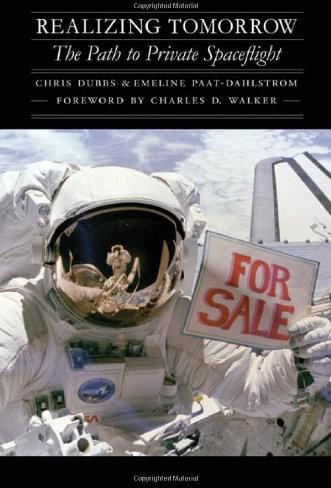
Realizing Tomorrow: The Path to Private Spaceflight
by
Chris Dubbs
,
Emeline Paat-dahlstrom
and
Charles D. Walker
Published 1 Jun 2011
He's still running a dozen or so tech companies in Ottawa, but after he'd made his millions, he decided it was time to return to making his dreams of space flight a reality. In January 2008 Virgin Galactic unveiled the model designs of SpaceShipTwo and WhiteKnightTwo at a New York event to an eager crowd of media reporters and Virgin Galactic ticket holders such as Hidalgo, Wimmer, and Criswick. Whitesides, who by then had been named Virgin Galactic senior adviser, was on hand as host for the event. Virgin Galactic's team was represented by Branson and Galactic CEO Steve Attenborough. Rightfully sharing the spotlight this time, along with Burt Rutan, were Jim Tighe and Bob Morgan, chief project engineers for SpaceShipTwo and WhiteKnightTwo.
…
Top left: Sir Richard Branson standing beside SpaceShipOne on its maiden suborbital flight, as June 2004. Photograph by Mark Greenberg, courtesy of Virgin Galactic. 34. Bottom left: Sir Richard Branson (left) with Burt Rutan during the rollout of WhiteKnightTwo, Mojave, California. Photograph by Mark Greenberg, courtesy of Virgin Galactic. 35. Above: Eton Musk in front of Falcon 9 engines at the SpaceX launch site, Space Launch Complex 40, Cape Canaveral Air Force Station, Florida, 8 January 2009. Courtesy of SpaceX. 36. Above: Spaceport America concept design for a new spaceport being developed for Virgin Galactic in Las Cruces, New Mexico. Spaceport America Conceptual Images oxs/Foster + Partners. 37.
…
In zooz Collier left the United Kingdom behind and emigrated to New Zealand. He was working for House of Travel near Christchurch when Virgin Galactic unveiled its worldwide invitation in zoo6 for accredited spaceflight agents, or AsAS, as part of a global network of travel agents to sell their suborbital flights. Today, nsns are the only travel agents allowed to reserve Virgin Galactic suborbital spaceflights. House of Travel, the largest independently owned travel company in New Zealand, was appointed Virgin Galactic's exclusive agent in that country. Collier's experience in selling space-related products-he is probably the only person in New Zealand who can make that claim-gave House of Travel the competitive edge over other agencies.
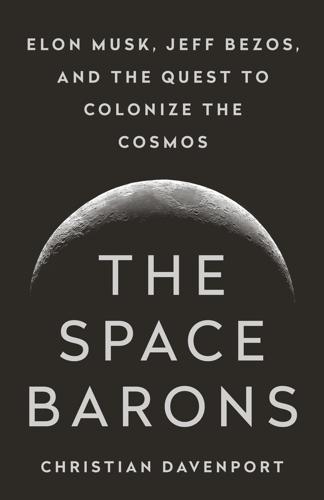
The Space Barons: Elon Musk, Jeff Bezos, and the Quest to Colonize the Cosmos
by
Christian Davenport
Published 20 Mar 2018
NTSB Chairman Christopher Hart and NTSB investigators with Virgin Galactic pilot Todd Ericson after the 2014 fatal crash of SpaceShipTwo in the Mojave desert. Courtesy of the NTSB. Richard Branson celebrates with a giant leap while showing off Virgin Galactic’s new SpaceShipTwo in Mojave in 2016. Courtesy of Virgin Galactic. Richard Branson unveils the new SpaceShipTwo, dubbed Unity, at an event in Mojave, California. Copyright © 2016, Ricky Carioti/Washington Post. Blue Origin paints a turtle, the company’s mascot, on its booster after every launch. Courtesy of Blue Origin. Virgin Galactic’s SpaceShipTwo in a glide test flight over Mojave, 2016.
…
Leading up to the launch: Marcia Dunn, “Space Station Supply Launch Called Off in Virginia,” Associated Press, October 28, 2014. The first flights were supposed to start: Virgin Galactic Overview, https://web.archive.org/web/20070331154530/http://virgingalactic.com/htmlsite/overview.htm. For $250,000, Virgin promised: Ibid. It had inked a deal: “NBCUniversal Announces Exclusive Partnership with Sir Richard Branson’s Virgin Galactic to Televise First Commercial Flight to Space,” press release, November 8, 2013. Flying above the Mojave Desert: “G Force Training with Virgin Galactic,” October 8, 2014, https://www.virgin.com/richard-branson/g-force-training-virgin-galactic. They were close friends: Christian Davenport and Jöel Glenn Brenner, “Two Pilots Who Were Close Friends Now Tied Together by One Fatal Flight,” Washington Post, November 3, 2014.
…
But none of it—not the speedboats, not the ballooning, not the Rolling Stones (well, maybe, the Rolling Stones)—could compete with the venture he was now pursuing, a company with ambitions that could finally meet Branson’s stratospheric hype. A space company, called Virgin Galactic. WITHOUT A ROCKET or a spacecraft or any real knowledge of space travel, Branson registered the name “Virgin Galactic Airways,” hopeful that he’d one day be able to start a space company. He spent years talking to people in the space community, picking the brains of engineers “to see whether I could find anyone who would be competent to build spaceships,” he later recalled.
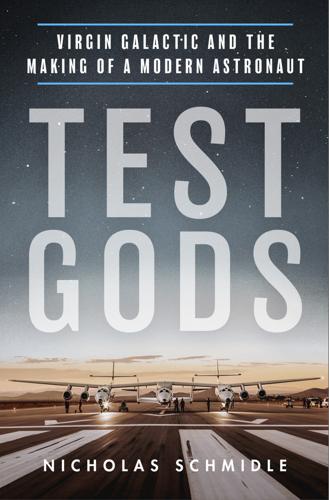
Test Gods: Virgin Galactic and the Making of a Modern Astronaut
by
Nicholas Schmidle
Published 3 May 2021
ILLUSTRATION CREDITS Here: Dan Winters Here: Paul Stucky Here: Mark Stucky Here: Mark Stucky Here: Mark Greenberg Here: Chalkie Davies/Getty Images Here: Erik Lassen Here: Don Emmert/AFP via Getty Images Here: Mark Greenberg Here: Michelle LeClerc/Macmillan Here: Jason DiVenere Here: Jason DiVenere Here: Sandy Huffaker/Getty Images Here: Pamela Schmidle Here: NASA Here: Ricky Carioti/The Washington Post/Getty Images Here: National Transportation Safety Board Here: Virgin Galactic Here: Pamela Schmidle Here: Pamela Schmidle Here: James Blair/NASA/JSC Here: Nicholas Schmidle Here: Mike Satren/High Wing Photo Images Here: Dan Winters Here: Nicholas Schmidle Here: Virgin Galactic Here: Cheryl Agin Here: Nicholas Schmidle Here: Virgin Galactic Here: Cheryl Agin Here: Virgin Galactic Here: Virgin Galactic INDEX The index that appeared in the print version of this title does not match the pages in your e-book. Please use the search function on your e-reading device to search for terms of interest.
…
See also rocket motors Rodgers, June Scobee Rosepink, Deborah Rosepink, Ron rubber-fuel design motor Russia Rutan, Burt Allen and Branson and Branson honors Colby and “cold flow” test explosion and documentary about NASA and Presidential Citizen’s Medal received from Reagan receives medallion from Aero Club de France rocket-powered flight test and Schmidle’s “Rocket Man” profile of Stucky in New Yorker and SkiGull and SpaceShipOne and Stucky and takes medical leave Trump and wins X Prize Rutan, Tonya Sagan, Carl Salina, Kansas Saling, Michelle Salter, James, The Hunters Salty Dogs SAPs (special-access programs) Saturn IB Saturn V Saudi Arabia Scaled Composites accused of sloppiness “cold flow” test explosion at crash of SpaceShipTwo and as engineering cult design of SpaceShipOne and party in 2009 and PR and rocket-powered flight test Rutan’s philosophy at SETP tour and SpaceShipOne and SpaceShipTwo and Stucky and Virgin Galactic and Schmidle, Bohan Schmidle, Nicholas (author) background of centrifuge training and at ceremony honoring Stucky and Sturckow childhood of compartmentalization and embeds with Virgin Galactic field trip to Mojave and in Idaho invited to Virgin Islands by Branson meets Stucky in Pakistan Patterson and “Rocket Man” Shane and Stucky and Sturckow and takes sons to National Air and Space Museum trip to Mojave with family Virgin Galactic’s adversarial turn against writing for New Yorker Schmidle, Oscar Schmidle, Pamela Schmidle, Robert (“Rooster”) in Bosnia at ceremony honoring Stucky and Sturckow goes down over Japan Gulf War and receives Distinguished Flying Cross return from Gulf War Stucky and Sturckow and Schwarzenegger, Arnold science Scobee, Dick “scoot shelters” Scott, David scramjets SCUM truck (Scaled Composite Unit Mobile) Seguin, Elliot September eleventh attacks Sex Pistols Shane, Doug Shenzhou Shepard, Alan Shotwell, Gwynne Siebold, Peter Siebold, Traci Sierra Nevada Corporation SkiGull Skunk Works Smith, Michael Smith, Ned Abel Society of Experimental Test Pilots solar wind Soviet Union.
…
Branson said that flying people to space was “pretty cool,” but, “Once you’ve got people into space, why shouldn’t we have point-to-point travel at tremendous speeds? And why shouldn’t we go on creating an orbital vehicle? We will start to do that. I just had a meeting with a senator, talking about asteroids. And they asked, ‘Can Virgin Galactic come up with ideas to try to remove giant asteroids coming toward the Earth?’ We’ll have a look at that. And, ‘Could Virgin Galactic help sort out the debris in space?’ We’ll have a look at that, too. And once all that’s sorted we’d like to join the race for deep-space exploration.” You had to admire Branson’s pluck and enthusiasm, thought Moses. But they were light-years away from achieving any of those things.
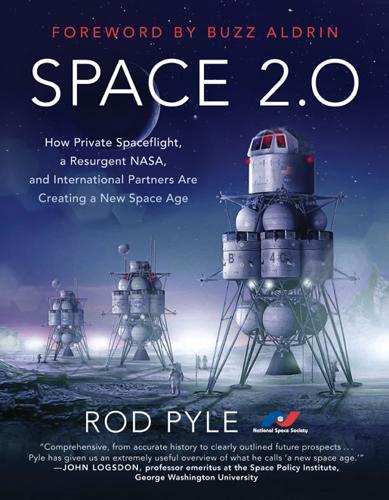
Space 2.0
by
Rod Pyle
Published 2 Jan 2019
His father is a prominent chemistry professor at Princeton University who has done extensive research in materials science and nanotechnology, so science and tech run in the family. Virgin Galactic’s founder, Richard Branson, greets the press at the rollout of Unity. Image credit: Virgin Galactic George Whitesides, president of Virgin Galactic. Image credit: Virgin Galactic Once Whitesides settled in at Virgin Galactic, he “adjusted how they did business,” as he put it in an interview for the Guardian in 2014. “We’ve changed dramatically as a company . . . When I joined in 2010 we were primarily a marketing organization.”
…
One of the biggest complications has been getting the thermal protection on Unity right. Despite being a suborbital rocketplane, it still encounters high temperatures during its descent back into the atmosphere. Virgin Galactic’s newest rocketplane, Unity, mated to its carrier plane Eve, at its first rollout. While it does not return at orbital speeds, Unity still needs extensive thermal protection to survive the high temperatures of reentering the atmosphere. Image credit: Virgin Galactic/Mark Greenberg Virgin Galactic’s history is indicative of the perils facing spaceflight entrepreneurs. In 2008, despite the accident, Branson projected that tourist flights would begin by the end of 2009.
…
From the outside, the facility takes more cues from the rough-and-ready days of test flight than from NASA’s massive operations in Florida and Texas. Just a few miles down the road at Edwards Air Force Base, the X-15 tore up the skies in the 1960s. Virgin Galactic seems infused with that pioneering spirit. I park in a half-empty lot and enter for a tour of the plant. Inside, Virgin Galactic is all business, with little effort wasted on glitz. The double doors swing open and I am greeted with the smells of a classic machine shop—oil and solvents. The workers are young, idealistic, and friendly. After a few brief introductions, they return to building their rocketplane.
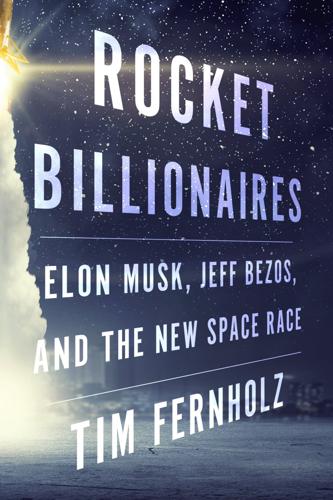
Rocket Billionaires: Elon Musk, Jeff Bezos, and the New Space Race
by
Tim Fernholz
Published 20 Mar 2018
Photo by Sandy Joseph and Kevin O'connell, courtesy of NASA An Orbital Sciences Antares rocket, developed as part of the space taxi program, prepares for launch in 2014. Photo by Bill Ingalls, courtesy of NASA The DC-XA, a prototype reusable rocket that inspired Blue Origin and SpaceX, lands after a 1996 test flight. Courtesy of NASA Virgin Galactic’s second SpaceShipTwo, VSS Unity, goes through a glide test in 2016. ©Virgin Galactic VSS Unity flies over the Mojave Desert while slung underneath its carrier aircraft. © Virgin Galactic This diagram showing how to land a rocket on a barge at sea was at the center of litigation between SpaceX and Blue Origin. Courtesy of Blue Origin and the US Patent and Trademark Office Blue Origin’s reusable New Shepard suborbital rocket lifts off in 2016, during an uncrewed test of its space capsule.
…
TSC would build a larger, improved version of the vehicle for regular passenger flights. And to that end he launched a new brand, Virgin Galactic. He envisioned daily operations, where seven space tourists would climb aboard the craft, travel to the edge of space, and enjoy a few minutes of weightlessness and incredible views before coming back down for a landing. Never one to miss an opportunity for the limelight, Branson began drumming up business for Virgin Galactic with gusto. He sold tickets to space for $250,000 a seat, which he bought for himself and his family and then hawked to celebrities like Tom Hanks, Angelina Jolie, and Stephen Hawking.
…
Leaked financials would later reveal that the company lost $250 million after the accident. The company would push back the launch of its superpowered Falcon Heavy launch vehicle, but it did not want to delay a project considered far more vital to the company’s future: reusing its rockets. Since Richard Branson launched Virgin Galactic, in 2005, it had struggled to deliver on the commercial promise of the X Prize and SpaceShipOne. Virgin Galactic was partially inspired by Branson’s experience in the airline business, which began in 1984 when his flight to a Caribbean island was canceled. He chartered a plane of his own and sold seats to his fellow disgruntled passengers, and then realized he could do the same thing at scale.
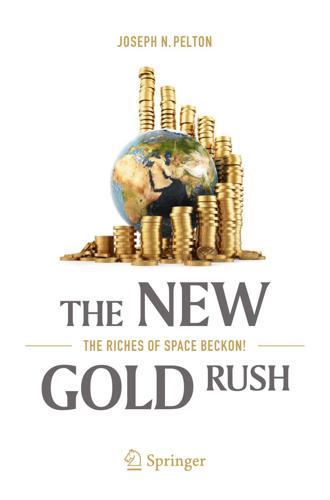
The New Gold Rush: The Riches of Space Beckon!
by
Joseph N. Pelton
Published 5 Nov 2016
Part of the reason why there may be fewer people willing to pay a king’s ransom of over $50 million to fly to the space station could be the pending Virgin Galactic flights at much lower fares. Apparently notables such as Tom Hanks, Justin Bieber, and Victoria Principle have signed up with Branson’s company for a suborbital flight to swim in space for 4 min and see the big blue marble against the dark sky of space for a ticket price of $200,000 that has now escalated to $250,000. It is noteworthy that well over 500 people have booked for flights on Virgin Galactic and that the number of the bookings well exceeds the total number of all astronauts from all countries around the world that have ever flown to date.
…
The most common arrangement is for corporations or organizations to book a flight for employees (see Fig. 4.4). Fig. 4.4Zero G weightlessness flights represent a “cheap option” for those who cannot pay a quarter of a million dollars to fly with Virgin Galactic (Image courtesy of Zero Gravity Corporation.) Yet another alternative to flying on Virgin Galactic’s SpaceShipTwo is to sign up to fly in a Russian Foxbat jet up into the stratosphere where one can see the curvature of Earth and dark sky for a cost of around $10,000. XCOR will soon provide a low altitude flight to half the altitude for about half the money.
…
Indeed this New Space push is fueled by who we call the space billionaires. At the head of the space billionaire pack are Jeff Bezos, founder of Amazon.com; Paul Allen, co-founder of Microsoft; Elon Musk (founder of Space X, Paypal, and Tesla); Robert Bigelow, owner of Budget Suites; Sir Richard Branson, head of Virgin Galactic; Mark Zuckerberg, founder of Facebook; and electronic game inventor John Carmack, who created “Doom” and “Quake.” It is these people that are upending the world of technology and global enterprise at planetary levels who will be prominent in the space business during the twenty-first century.
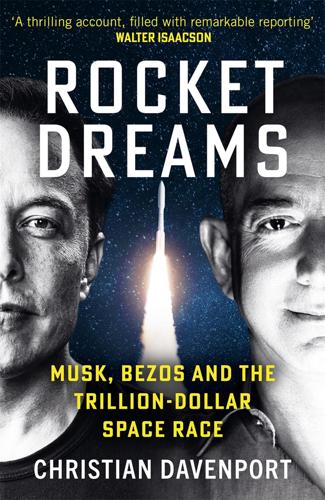
Rocket Dreams: Musk, Bezos and the Trillion-Dollar Space Race
by
Christian Davenport
Published 6 Sep 2025
CHAPTER 17 266 “one-man publicity circus”: Geraldine Fabrikant, “Of All That He Sells, He Sells Himself Best,” The New York Times, June 1, 1997, https://www.nytimes.com/1997/06/01/business/of-all-that-he-sells-he-sells-himself-best.html. 266 “was like being strapped”: Richard Branson, Losing My Virginity: How I Survived, Had Fun, and Made a Fortune Along the Way (Crown Business, 1998), p. 217. 266 a harrowing accident: Irene Klotz, “U.S. Investigators Blame Virgin Galactic Crash on Lax Pilot Training,” Reuters, July 28, 2015, https://www.reuters.com/article/lifestyle/science/us-investigators-blame-virgin-galactic-crash-on-lax-pilot-training-idUSKCN0Q21YS/. 266 its CEO called “flawless”: Christian Davenport, “Richard Branson’s Virgin Galactic Reports Reaching Space for the Third Time,” The Washington Post, May 22, 2021, https://www.washingtonpost.com/technology/2021/05/22/richard-branson-virgin-galactic-space-flight/. 266 “One good thing”: Davenport, “Richard Branson’s Virgin Galactic Reports Reaching Space for the Third Time.” 267 “I’ve been itching to go”: Christian Davenport, “Billionaires’ Race to Space: Virgin Galactic’s Richard Branson Now Set to Beat Blue Origin’s Bezos to Space,” The Washington Post, July 1, 2021, https://www.washingtonpost.com/technology/2021/07/01/branson-bezos-space-race/. 269 “Space Tourism Rivalry”: Joey Roulette, “Space Tourism Rivalry Gets Extremely Petty Ahead of Branson’s Spaceflight,” The Verge, July 9, 2021, https://www.theverge.com/2021/7/9/22570287/space-tourism-virgin-galactic-branson-blue-origin-bezos. 269 interview on CNBC: “Jeff Who?”
…
https://x.com/CNBC/status/1410292775900401669. 269 “We made a pot of tea”: Nick Rufford, “Richard Branson: ‘I woke to Find Elon Musk in my Kitchen at 2 A.M.,” The Sunday Times, January 7, 2023, https://www.thetimes.com/life-style/article/richard-branson-i-woke-to-find-elon-musk-in-my-kitchen-at-2am-f0s70gq8l. 270 “If space travel lost”: Jeff Shesol, “Don’t Cede the Space Race to China and the Billionaires,” The New York Times, February 18, 2022, https://www.nytimes.com/2022/02/18/opinion/space-china-billionaires.html. 271 “Just magical”: Rachael Nail, “Richard Branson Successfully Reaches Space Onboard Virgin’s SpaceShipTwo,” Florida Today, July 11, 2021, https://www.floridatoday.com/story/tech/science/space/2021/07/11/richard-branson-successfully-reaches-space-onboard-virgins-spaceshiptwo/7921405002/. 271 “Man, I gotta pee”: Ben Evans, “ ‘Man, I Gotta Pee’: 55 Years Since Freedom 7 Began America’s Adventure in Space,” AmericaSpace.com, https://www.americaspace.com/2016/04/30/man-i-gotta-pee-55-years-since-freedom-7-began-americas-adventure-in-space-part-1/. 272 wasn’t the only requirement: Elizabeth Howell, “Want to Bid on Blue Origin’s Space Tourist Seat Auction? Be Sure to Read the Fine Print,” Space.com, May 19, 2021, https://www.space.com/blue-origin-space-tourist-auction-terms. 272 Initially, Virgin Galactic charged: Micah Maidenberg, “Virgin Galactic Spaceflight Tickets to Start at $450,000 a Seat,” Wall Street Journal, August 6, 2021, https://www.wsj.com/articles/virgin-galactic-space-flight-tickets-to-start-at-450-000-a-seat-11628262330. 272 $28 million: Christian Davenport, “A Seat to Fly with Jeff Bezos to Space Sells for $28 Million at Auction,” The Washington Post, June 12, 2021, https://www.washingtonpost.com/technology/2021/06/12/jeff-bezos-blue-origin-auction/. 273 Spaceflight Participant Program: Alan Ladwig interviewed by Sandra Johnson, “NASA Headquarters Oral History Project,” June 7, 2017, https://www.nasa.gov/wp-content/uploads/2024/11/ladwiga-6-7-17.pdf?
…
Going to space would be the ultimate adventure, although he and Bezos had different plans for getting there. Unlike a rocket that launched vertically, Virgin Galactic’s spacecraft, known as SpaceShipTwo, was tethered to the belly of a mothership and hoisted to some 40,000 feet. The two would separate, and then the pilots would fire SpaceShipTwo’s engines, propelling the craft straight upward. The vehicle would remain in space for a few minutes before falling back to Earth and gliding to a runway. To get to this point, Virgin Galactic had overcome a series of technical challenges, as well as a crash in 2014, when its spaceplane came apart in a harrowing accident that killed one pilot and seriously injured the other.

Beyond: Our Future in Space
by
Chris Impey
Published 12 Apr 2015
He’s said that when SpaceX covers its costs with satellite launches and supply runs to the Space Station, he will turn his attention to Mars. Virgin Galactic has competition for suborbital tourist business from XCOR. The Texas-based company is developing the Lynx rocket plane, which is designed to carry a pilot and a paying passenger up 100 kilometers and down in just under half an hour. XCOR has presold nearly 300 flights for $95,000 each. Richard Branson probably isn’t worried. He has three times as many signed up, with ages ranging from eleven to ninety. The sales literature points out: “SpaceShipTwo’s cabin will have lots of room for zero-G fun.” Virgin Galactic has the bulk of the celebrities, including Justin Bieber, Kate Winslet, Leonardo DiCaprio, and Tom Cruise.
…
ITAR controls are the bane of many researchers, as they have been applied to detectors and electronic systems that have no real strategic importance. The Economist estimates that strict ITAR controls on satellite technology have halved the US share of the global commercial-satellite industry since 1999.13 Virgin Galactic has been stung by ITAR. It operates out of Spaceport America in New Mexico and has an international client list. Export regulations delayed Virgin Galactic’s deal with Burt Rutan for SpaceShipTwo by several years, and Rutan doesn’t mince words when talking about his dealings with the FAA: “The process just about ruined my program. It resulted in cost overruns, it increased the risk for my test pilots, did not reduce the risk to the non-involved public . . . and removed our opportunities to seek innovative safety solutions.”14 Then there’s the problem of international passengers, who might not be allowed to see the insides of a spacecraft governed by ITAR.
…
The Russian Government has sold the majority of RCS Energia to private investors, but Russia is hostile to entrepreneurs, so Energia is locked into forty-year-old Soyuz technology. At the moment, the UK regulatory environment is so forbidding that Virgin Galactic is unable to launch from Branson’s home country. However, he caught a break in May 2014 when the FAA cleared Virgin Galactic to launch into space from its Spaceport America facility. Another issue is insurance. Space insurance is a simple extension of other kinds of travel insurance, but insurers still haven’t calculated the exact risk. Rockets have significant but highly variable failure rates, and satellites are typically insured for 10 percent of their replacement cost, which can be tens of millions of dollars.

Bold: How to Go Big, Create Wealth and Impact the World
by
Peter H. Diamandis
and
Steven Kotler
Published 3 Feb 2015
,” Virgin, 2012, http://www.virgin.com/richard-branson/ba-cant-get-it-up-best-stunt-ever. 18 Richard Branson, Screw It, Let’s Do It: Lessons in Life (Virgin Books, March 2006). 19 “Galactic Announces Partnership,” Virgin Galactic, July 2009, http://www.virgingalactic.com/news/item/galactic-anounces-partnership/. 20 Nour Malas, “Abu Dhabi’s Aabar boosts Virgin Galactic stake,” Market Watch, October 19, 2011, http://www.marketwatch.com/story/abu-dhabis-aabar-boosts-virgin-galactic-stake-2011-10-19. 21 Loretta Hidalgo Whitesides, “Google and Virgin Team Up to Spell ‘Virgle,’ ” Wired, April 1, 2008, http://www.wired.com/2008/04/google-and-virg/. 22 “Jeffrey Preston Bezos,” Bio.
…
Branson also bets big, but because he’s risking his entire brand (Virgin) versus a singular company (Tesla), he manages to do this is a way that doesn’t jeopardize the empire. Virgin Galactic is a fantastic example. In October 2004, when Burt Rutan demonstrated the success of the three-passenger SpaceShipOne vehicle, winning the Ansari XPRIZE, Branson and his team came in with a multi-hundred-million-dollar commitment to scale that design up to an eight-passenger vehicle able to make multiple flights per day and carry thousands into space per year. But, as is Branson’s style, in 2009, he was brilliantly able to offset that risk by bringing in Aabar, the Mideast investment fund, to purchase 32 percent of Virgin Galactic for $280 million.19 Then, two years later, Aabar increased their stake by 6 percent, committing an additional $110 million to fund small satellite launch capability.20 So, sure, Branson bet a huge amount on Virgin Galactic, but he then protected that investment and brought in an extra $390 million in working capital to ensure its success.
…
Chapter Five: The Secrets of Going Big 1 Jon Stewart, The Daily Show, April 24, 2012. 2 See http://www.planetaryresources.com. 3 Space Adventures was cofounded in partnership with Mike McDowell, who served as the company’s first CEO and chairman. 4 For a nice breakdown of Branson’s space plans, see Elizabeth Howell, “Virgin Galactic: Richard Branson’s Space Tourism Company,” Space.com, December 20, 2012, http://www.space.com/18993-virgin-galactic.html. 5 See http://www.blueorigin.com. 6 Justine Bachman, “Elon Musk Wants SpaceX to Replace Russia as NASA’s Space Station Transport,” Bloomberg Businessweek, April 30, 2014, http://www.businessweek.com/articles/2014-04-30/elon-musk-wants-spacex-to-replace-russia-as-nasas-space-station-transport. 7 AI with Chris Anderson conducted 2013. 8 Mikhail S.
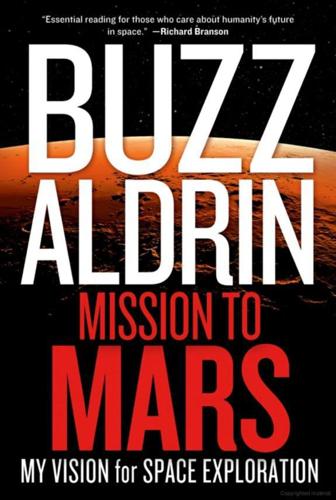
Mission to Mars: My Vision for Space Exploration
by
Buzz Aldrin
and
Leonard David
Published 1 Apr 2013
Tourists going up and down between low Earth orbit and Spaceport Earth in its earliest form effectively open up—and pay for—this new part of the orbital infrastructure. But first things first. Pay-per-view Seats I am an admirer of my fellow adventurer Sir Richard Branson, who is backing and bankrolling his spaceliner operation, Virgin Galactic. I have personally taken part in a number of Virgin Galactic milestone-met activities out in southern New Mexico’s Spaceport America, the world’s first purpose-built commercial spaceport. That groundbreaking facility—roughly 45 miles north of Las Cruces—is taking shape, and the desert scenery is sprinkled with Spaceport America structures.
…
I have long suggested this historic anniversary is an ideal time for a future President to announce a commitment, similar to that of President Kennedy’s that brought about Apollo, to establish a permanent human presence on the planet Mars within the following two decades. Time will tell. Virgin Galactic’s WhiteKnightTwo carrier plane lifts SpaceShipTwo up to altitude. (Illustration Credit 2.7) CHAPTER THREE YOUR SPACE: BUILDING THE BUSINESS CASE This space reserved: For citizen explorers. The projected number of sightseeing tourists trekking about planet Earth in 2012 was expected to reach one billion.
…
But when that ship slingshots back to Earth for its maintenance cycle, the interest will be intense. Can you imagine taking a cruise on the very ship that carried the first human beings to Mars? Call me an optimist, but I have a strong intuition that people will line up for that possibility. Space tourism on the rise: the Virgin Galactic suborbital system (Illustration Credit 3.1) My enthusiasm for these viewpoints has been bolstered by market surveys and space tourism forecast studies conducted by Futron Corporation and notables such as Geoffrey Crouch, professor of tourism policy and marketing at La Trobe University in Melbourne, Australia.
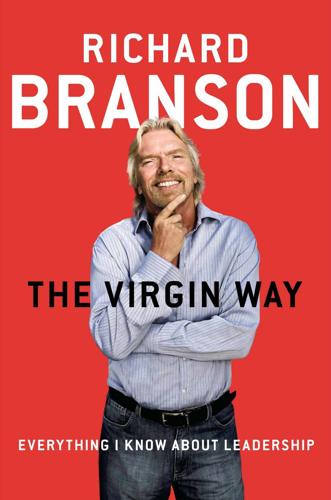
The Virgin Way: Everything I Know About Leadership
by
Richard Branson
Published 8 Sep 2014
8 Typically Atypical 9 Big Dogfights 10 Innovation is Nothing New 11 Hiring ’em and Keeping ’em Part Three – LAUGH 12 Culturing the Culture 13 The Fruits of Passion 14 The Party Line Part Four – LEAD 15 Leaders of the Future 16 Being There 17 Collaboration is the Key 18 Decisions, Decisions 19 Good Business Epilogue Afterword Acknowledgements Index PREFACE LIFE’S TOO SHORT Don’t enjoy it? Don’t do it! From my very first commercial venture at age sixteen with Student magazine, right up to today’s far loftier adventures with such things as Virgin Galactic and space tourism, I have always had one paramount philosophy: if a new project or business opportunity doesn’t excite me and get my entrepreneurial and innovative juices flowing, if it’s not something with which I sense I can make a difference while having a lot of seriously creative fun, then I’d far rather pass on it and move right along to something else that does excite me.
…
Interruptions when speaking are unfortunately a fact of life and we have to learn to live with them. I must confess, however, that when I am trying to express my thoughts to a group of people I find constant interruptions really exasperating. I have tremendous admiration for our CEO and president at Virgin Galactic George Whiteside’s uncanny ability to handle interruptions. Perhaps he learned the art in his previous position as chief of staff at NASA where he was accustomed to dealing with highly opinionated politicos much of the time, but one way or the other he is a master at it. If someone rudely interjects when George is speaking, it is a thing of beauty to watch.
…
There was something incredibly compelling about the notion of battling one’s way to the stars no matter how difficult the challenge. Much to the astonishment of my pals, I remember barrelling along on my bike and bellowing ‘Per Ardua ad Astra’ to the heavens – probably in much the same way as today’s kids might use the wonderful Toy Story character Buzz Lightyear’s mantra of ‘To Infinity and Beyond!’ Something I know the Virgin Galactic crew think is really pretty cool. A few years later, at Stowe School, I came across my second mission statement of sorts in the school’s motto of ‘Persto et Praesto’. As every new student had to learn on day one, this means ‘I Stand Firm and I Stand First’. I need hardly point out how much silly giggling the first half of this motto generated among a group of pubescent schoolboys, but nevertheless it was an excellent mission statement for young ‘Stowics’ to take forward into adult life – and although I may have forgotten most things from school, this still resonates with me.
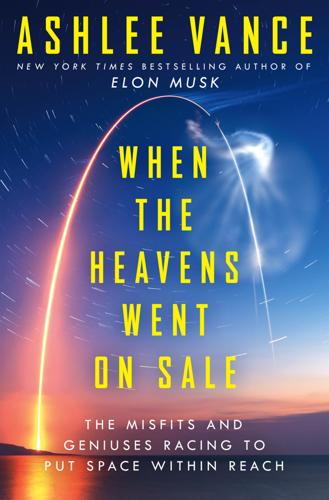
When the Heavens Went on Sale: The Misfits and Geniuses Racing to Put Space Within Reach
by
Ashlee Vance
Published 8 May 2023
Markusic lasted all of two weeks at Blue Origin. Lurking in the background had been Richard Branson and his space aspirations at Virgin Galactic. Like Musk and Bezos, the lion-maned Branson had set out in the early part of the 2000s to create a business in space. Ever the showman, he focused first on space tourism, seeking to build a spaceplane that could carry people for a few minutes to the edge of space, where they would experience weightlessness and have the privilege of observing Earth from a rare perspective for $250,000 a pop. Virgin Galactic started in 2004 and had made some progress in the years since, although by 2011, it remained a decade away from having a real spaceplane and farther from having a real spaceplane business.
…
“My friend said, ‘Darth Vader himself is sitting over there if you would like to have a real chat,’” Worden said. Among the young people at the event were Will Marshall, Chris Boshuizen, and Robbie Schingler, the future founders of Planet Labs, and George Whitesides, who would go on to run the space tourism outfit Virgin Galactic. Some of these men began to form a semicircle around Worden as he held court, and then Worden and Marshall really got into it. They were both space wonks and shared common ground around their desire to settle the moon and advance humankind deeper into the solar system. The space weapons, though, were an area where Worden and Marshall fiercely disagreed.
…
Stevens had been fascinated by space since his childhood and had longed to take a trip into the heavens. “I was really disappointed that I wasn’t born in America, where they had an astronaut and space program,” he said. Flush with cash, he decided to let his inner space nerd loose. He legally changed his name to Mark Rocket and paid around $250,000 for a reservation on Virgin Galactic’s planned spaceplane, which would take rich tourists to the edge of space for a few minutes. “With the name, it was one of those ideas that grabs hold of you,” Rocket said. “Words are really powerful, and I think they can resonate in many different ways. You can create your life as if it’s kind of like an artwork.
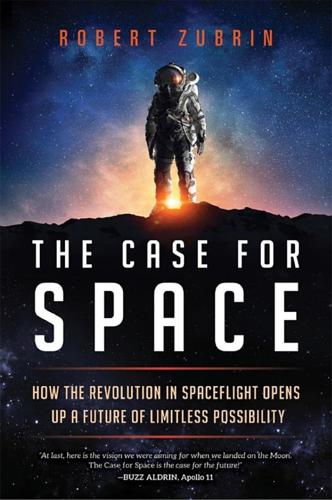
The Case for Space: How the Revolution in Spaceflight Opens Up a Future of Limitless Possibility
by
Robert Zubrin
Published 30 Apr 2019
It was then renamed Starship in November 2018. In this book, we will call the former BFR a Starship, while craft that engage in trips to the stars will be called “interstellar spaceships.” 2. Christian Davenport, “Richard Branson's Virgin Galactic Just Got Another Step Closer to Flying Tourists to Space,” Washington Post, May 29, 2018, https://www.washingtonpost.com/news/the-switch/wp/2018/05/29/richard-bransons-virgin-galactic-just-got-another-step-closer-to-flying-tourists-to-space/?noredirect=on&utm_term=.e548415f3697 (accessed October 14, 2018). 3. Stefanie Waldek, “How to Become a Space Tourist: 8 Companies (Almost) Ready to Launch,” Popular Science, April 20, 2018, https://www.popsci.com/how-to-become-a-space-tourist (accessed October 14, 2018). 4.
…
Such a market would drive a radical cheapening of space technology, finally making possible all the dreams of space tourism, industrialization, and colonization that have been within view but out of reach since the dawn of the space age. So the dam has been broken, and the four-decade-long post-Apollo age of stagnation in space launch and human spaceflight technology has come to an end. An entrepreneurial space race has erupted with players including Firefly, Vector Launch, Virgin Galactic, Stratolaunch, and, most important, Jeff Bezos's Blue Origin—which will soon launch its own reusable New Glenn booster with similar capabilities to the Falcon Heavy—competing to take their share of a market that will soon explode in size. They will soon have plenty of company. SpaceX has shown that it is possible for lean, hard-driving entrepreneurial ventures to do—better—what it previously was thought only the governments of major powers could attempt.
…
More than twenty teams entered the XPRIZE contest, and ultimately one of them, the Spaceship One group led by aviation genius Burt Rutan and backed financially by Microsoft cofounder Paul Allen, won the prize in 2004.1 The headlines made by the success of Spaceship One (which was a small suborbital rocket plane launched off of a subsonic aircraft carrier vehicle) attracted Virgin Group CEO Sir Richard Branson, who adopted the concept and, with the addition of some truly serious money, has since been moving to commercialize it under the name Virgin Galactic as a system for suborbital space tourism. More recently, the late Paul Allen started his own company, called Stratolaunch, to commercialize a much larger version of the Spaceship One concept for orbital delivery. There is a lot more that could be said about this episode, but the point I want to make here is this: Ansari did not get, or expect to get, any significant financial return for her $10 million prize fund donation.
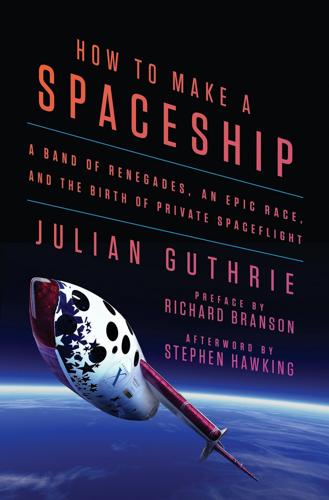
How to Make a Spaceship: A Band of Renegades, an Epic Race, and the Birth of Private Spaceflight
by
Julian Guthrie
Published 19 Sep 2016
The bonuses were the equivalent of the employee’s salary for a year. Scaled Composites is now fully owned by Northrop Grumman Corp. A number of people have left Scaled to work at Virgin Galactic, including Doug Shane and Steve Losey, the former crew chief of SpaceShipOne. Virgin Galactic is just down the flight line from Scaled Composites. Stratolaunch is being built in an enormous hangar in a far corner of the Mojave Air and Space Port. —Richard Branson’s Virgin Galactic was established to build on the work of SpaceShipOne and open access to space for more people and payloads, starting with commercial suborbital flights.
…
My dollars might not have gone to his initial prize but they have built Virgin Galactic, the fulfillment of a dream long held by me and countless others and an endeavor that, as you will read in this book, will forever be linked with Peter and the XPRIZE. If I’d said yes to Peter in those first meetings when he was pitching me on funding the prize, I don’t know if I would have actually gotten into the spaceship business. Instead of spending $10 million to fund the XPRIZE, I will now end up spending half a billion dollars to commercialize it! Our goal with Virgin Galactic is to open space to change the world for good.
…
I was nineteen years old and spellbound by these men who had traveled to another world. It went without saying that in my lifetime ordinary people would get to travel beyond the Earth’s atmosphere. Then decades passed and governments were not sending the general public to space. In 1999, I registered the name Virgin Galactic, believing the right opportunity would come along. Burt Rutan, who was already well known in aviation circles, and I worked on a ballooning project called Earthwinds. We were a small team trying to make the first nonstop circumnavigation of the globe in a balloon. Burt, whose shop was in the Mojave Desert, was helping to build the capsule.
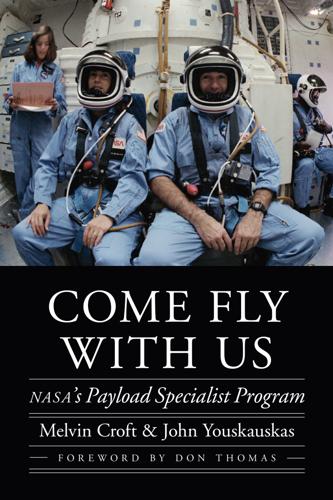
Come Fly With Us: NASA's Payload Specialist Program
by
Melvin Croft
,
John Youskauskas
and
Don Thomas
Published 1 Feb 2019
However, there is great promise for scientists and engineers to be able to conduct space-based microgravity research in a coming age of suborbital—and even orbital—private spaceflight. Two aerospace companies—Virgin Galactic and Blue Origin—are developing two radically different designs for passenger-carrying spacecraft intended to (initially) launch fare-paying thrill seekers on brief suborbital flights above one hundred kilometers, which is the generally accepted definition of “space.” Virgin Galactic, owned by British entrepreneur Sir Richard Branson, partnered with Burt Rutan’s Scaled Composites and the Spaceship Company of Mojave, California, to produce SpaceShipTwo.
…
Both of these companies are looking to the possibilities of conducting space research as an additional source of revenue along with their primary space-tourist business model. Virgin Galactic and Blue Origin will be able to provide a brief but very pure microgravity environment lasting approximately three to five minutes and can also offer spaceborne atmospheric and astronomical scientific research. According to Virgin Galactic’s SpaceShipTwo: An Introductory Guide for Payload Users, SpaceShipTwo will eventually offer more than a one-thousand-pound payload capacity, five hundred cubic feet of shirtsleeve working space, frequent and responsive flight access for “science of opportunity,” large observation windows, and payload mounting systems that can accommodate most current experiment designs.
…
The first SpaceShipTwo built, christened VSS Enterprise, was lost in a tragic accident during a powered test flight on 31 October 2014, killing test pilot Michael Alsbury and critically injuring Pete Seibold, who miraculously survived after being hurled out of the disintegrating vehicle at supersonic speeds. Virgin Galactic and Blue Origin both now stand at the threshold of completing their testing and finally beginning to open space to many more people than ever before possible. There will no doubt be more difficulties in the future, more accidents, and even more lives lost. But the same intense desire that drove the payload specialists of the space shuttle era will bring a new breed of researchers full of curiosity to accept the risks that come with manned spaceflight.
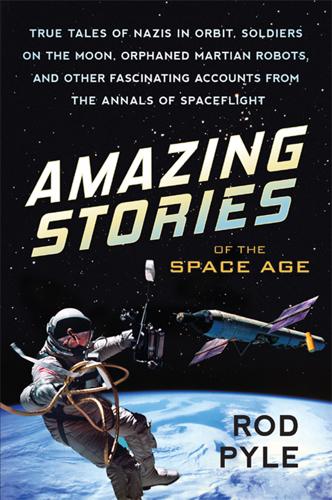
Amazing Stories of the Space Age
by
Rod Pyle
Published 21 Dec 2016
Brilliant as it was, MOOSE would have been a risky, last-ditch option and was never developed beyond very basic ground testing. These ideas have been mothballed for decades, just another set of wild space-age designs that never made it off the drawing board or beyond limited prototyping. But there is new life in some of these old concepts. With Richard Branson's Virgin Galactic and Amazon's Jeff Bezos's Blue Origin looking to haul tourists into space, a handful of companies have begun investigating high-tech space suits that would allow an adrenaline-fueled few to exit a spacecraft and descend to Earth protected by nothing more than the suit. In 2013, a high-altitude suit called the RL Mark VI Space Diving Ensemble was announced by a pair of companies working together out of Baltimore, Maryland.
…
The almost heroic competition and excitement of the space race had ebbed, replaced by routine orbital ventures, a number of Earth-orbiting space stations, and the robotic exploration of the planets. All this had its appeal, but was by no measure as popular as the early lunar expeditions had been with kids or grown-ups. And what of the future? Will public fascination with spaceflight be rekindled as NASA and SpaceX reach for Mars, as Virgin Galactic sends tourists into space, and orbital hotels are regularly visited by Jeff Bezos's Blue Origin rockets? Will a new line of space toys and electronic games focus on Martian expeditions and space colonies? The private ventures mentioned are moving ahead as quickly as they can, and NASA continues to refine its plan to get astronauts to Mars by the mid-2030s.
…
The Atlas dates back to the 1950s, and was extensively redesigned to use rocket engines sourced from Russia, reentering the market in 2002 after an operational hiatus. But with increasingly tense relations between Russia and the US, a new first-stage rocket engine design was solicited, and Bezos's company seems to have the job. The new engine, the BE-4, will be used to power ULA's replacement for the Atlas, called the Vulcan. Richard Branson's Virgin Galactic continues on its quest to build the first tourist spaceflight vehicle. Carried aloft for launch by a larger plane in a fashion similar to the X-15, SpaceShipOne, and its updated version, SpaceShipTwo, has been extensively tested. Despite a catastrophic crash in 2014,4 the company continues to develop the spaceplane and expects revenue flights to begin before 2020.

The Rise of Superman: Decoding the Science of Ultimate Human Performance
by
Steven Kotler
Published 4 Mar 2014
FLOW TO ABUNDANCE 187 skydiver Felix Baumgartner was heading: See: www.redbullstratos.com. 188 “Felix is an action sports athlete”: Andy Walshe, AI, April 2013. 189 “At a certain RPM”: John Tierney, “24 Miles, 4 Minutes and 834 M.P.H., All in One Jump,” New York Times, October 14, 2012. 190 lived through their midair crack-up: See Summary Report: Findings of the Red Bull Stratos Scientific Summit, California Science Center, January 23, 2013. Ansari X Prize in 2004: See: www.xprize.org. SpaceShipTwo’s flight was a test burn: “Virgin Galactic’s SpaceShipTwo Makes Test Flight,” USAToday.com, April 29, 2013. Paying customers going rocket man before 2015: Elizabeth Howell, “Virgin Galactic: Richard Branson’s Space Tourism Company,” Space.com, December 20, 2012. 192 Arie de Geus: Arie de Geus, The Living Company: Habits for Survival in a Turbulent Business Environment (Harvard Business Review Press, 2002). 193 “We are the ones”: Alice Walker, We Are the Ones We Have Been Waiting For: Inner Light in a Time of Darkness (New Press, 2006).
…
On the Stratos website there’s a short list of potential applications for the knowledge gained from Baumgartner’s jump: “Passenger/crew exit from space; developing protocols for exposure to high-altitude and high-acceleration environments; exploring the effects of supersonic acceleration and deceleration on the human body; and testing the latest innovations in parachute systems.” To put this in plainer language, experts have said that if the passengers on the space shuttle Challenger had been equipped with Baumgartner’s suit, they might have lived through their midair crack-up. And along just these lines, some six months after Baumgartner’s jump, Virgin Galactic’s SpaceShipTwo powered up its engines for the first time. SpaceShipOne, you might remember, was the craft that won the Ansari X Prize in 2004. This original X Prize was a demonstration project, both proof that a private company could produce an affordable, reusable spaceship and the necessary first step in opening the space frontier.
…
The idea behind SpaceShipTwo is the next step: tourism—taking paying customers on suborbital cruises. And that goal is not far away. SpaceShipTwo’s flight was a test burn, the first in a series that ends with actual space flights (some 550 people have purchased $200,000 tickets). According to Virgin Galactic founder Richard Branson, if everything goes according to plan, the plan is to have paying customers going rocket man before 2015. This is why Baumgartner’s jump is critical. We’re going to space. That’s what’s next. Within a few years, human beings will be routinely visiting low-Earth orbit.
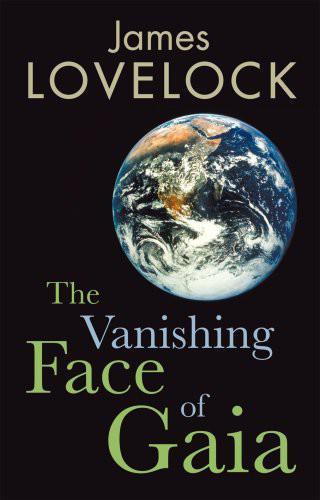
The Vanishing Face of Gaia: A Final Warning
by
James E. Lovelock
Published 1 Jan 2009
Penguin Ireland, 25 St Stephen’s Green, Dublin 2, Ireland (a division of Penguin Books Ltd) Penguin Group (Australia), 250 Camberwell Road, Camberwell, Victoria 3124, Australia (a division of Pearson Australia Group Pty Ltd) Penguin Books India Pvt Ltd, 11 Community Centre, Panchsheel Park, New Delhi -110 017, India Penguin Group (NZ), 67 Apollo Drive, Rosedale, North Shore 0632, New Zealand (a division of Pearson New Zealand Ltd) Penguin Books (South Africa) (Pty) Ltd, 24 Sturdee Avenue, Rosebank, Johannesburg 2196, South Africa Penguin Books Ltd, Registered Offices: 80 Strand, London WC2R 0RL, England www.penguin.com First published 2009 Copyright © James Lovelock, 2009 The moral right of the author has been asserted All rights reserved Without limiting the rights under copyright reserved above, no part of this publication may be reproduced, stored in or introduced into a retrieval system, or transmitted, in any form or by any means (electronic, mechanical, photocopying, recording or otherwise), without the prior written permission of both the copyright owner and the above publisher of this book ISBN: 978-0-141-91042-0 For my beloved wife Sandy Contents List of Illustrations Acknowledgements Foreword 1 The Journey in Space and Time 2 The Climate Forecast 3 Consequences and Survival 4 Energy and Food Sources 5 Geoengineering 6 The History of Gaia Theory 7 Perceptions of Gaia 8 To Be or Not To Be Green 9 To the Next World Glossary Further Reading Index List of Illustrations The ‘Ice Hole’ in the Arctic. (US National Snow and Ice Data Centre) The vanishing of the Aral Sea. (NASA) White Knight 2. The Virgin Galactic space ship. The Devon countryside. A wind farm in Scotland. The electron capture detector, or ECD. The author standing above French high‐level nuclear waste. Drought in Australia. (Wikipedia. GNU Free Documentation Licence) The Namibian desert. Vegetation types around the world. (Wikipedia.
…
Imagine my delighted amazement on hearing that my wish to see the Earth from space would soon be fulfilled and I would see from the sky above New Mexico our sphere of a world in all its glory. In an act of splendid generosity, Sir Richard Branson made the gift and had already founded his own space line, Virgin Galactic, to make it possible. His ultimate upgrade, the flight to space, will let me escape for a few brief minutes the all‐pervasive introspection of 21st‐century life and allow me to share that transcendental feeling of astronauts that our home is not the house or the street or the nation where we live, but the Earth itself.
…
The ‘Ice Hole’, the vast area of Arctic floating ice that melted in the summers of 2007 and 2008. Like the ‘Ozone Hole’ it was unpredicted and is potentially deadly. 2. The vanishing of the Aral Sea, once the second‐largest freshwater lake. 3. White Knight 2, the lift plane that carries the Virgin Galactic space plane to its launch at over ten miles up. 4. The small space ship from which I hope to see the face of Gaia. 5. The Devon countryside near my home, now under threat from industrial‐scale wind farms. 6. A wind farm in Scotland, whose erection was encouraged by the Scottish Green Party. 7.
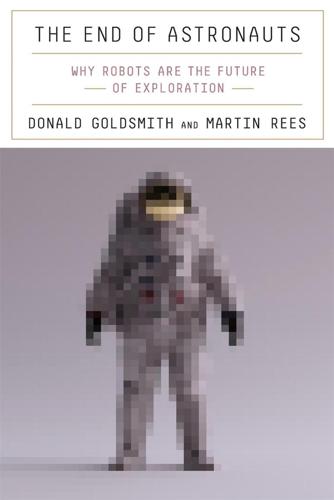
The End of Astronauts: Why Robots Are the Future of Exploration
by
Donald Goldsmith
and
Martin Rees
Published 18 Apr 2022
In 2020, NASA’s Artemis program awarded a contract worth $579 million to a Blue Origin consortium that includes the aerospace giants Lockheed Martin and Northrop Grumman for the development of an integrated system to land astronauts on the moon and bring them back to Earth. Unlike Musk’s vision of a large population on Mars, Bezos’s vision of the future looks toward the free-floating space colonies described in Chapter 7, where even heavy industries could proceed without polluting any planet. Richard Branson’s plans for his Virgin Galactic company seem more modest, since they extend only to the edge of Earth’s atmosphere. They would, however, allow risk-taking enthusiasts to touch the edge of space, often defined as the region fifty to sixty miles above the Earth’s surface. Branson’s SpaceShipTwo rides underneath a carrier aircraft to an altitude of about ten miles, then uses its rockets to soar five times higher, providing its occupants with about six minutes of weightlessness.
…
The Rocket Team: From the V-2 to the Saturn Moon Rocket—the Inside Story of How a Small Group of Engineers Changed World History. New York: Thomas Crowell, 1979. Reynolds, Glenn, and Robert Merger. Outer Space: Problems of Law and Policy. 2nd ed. New York: Westview Press, 1997. Sawyer, Kathy. The Rock from Mars: A Detective Story on Two Planets. New York: Random House, 2006. Schmidle, Nicholas. Test Gods: Virgin Galactic and the Making of a Modern Astronaut. New York: Henry Holt, 2021. Squyres, Steve. Roving Mars: Spirit, Opportunity, and the Exploration of the Red Planet. New York: Hyperion, 2005. Trento, Joseph. Prescription for Disaster: From the Glory of Apollo to the Betrayal of the Shuttle. New York: Crown, 1987.
…
Glenn, 117 SOFIA, 55 Sojourner, 18 solar flares, 43, 84 solar wind, 43–45, 56, 84, 95 Somnium, 49 SPACE Act, 140–142 space colonies, 39, 91, 105–113 space elevator, 29 Space Force, 119 space law, 131–133, 136, 137, 139, 143 space manufacturing, 35–37 space shuttle, 20, 31–33, 82, 120–122, 125, 128 space travel: costs, 17, 22, 23, 30, 33, 34, 64, 115–123, 126; hazards, 1, 43–45, 56, 63, 85, 95, 110; public opinion, 2–4, 6, 8–13, 16–21, 30, 32, 76, 83, 92, 94, 102, 104, 106, 128, 147 SpaceX, 34, 37, 38, 45, 120, 122, 123, 128, 131 Spergel, David, 8, 103 Spirit rover, 18, 82, 116 Spudis, Paul, 117 Sputnik, 3 Starship, 39, 120 sterilization, 77, 88 Stonehenge, 30 Surveyor, 52 Swanson, Steve, 82 tardigrades, 70 telescope, 16, 17, 58, 74; on moon, 46, 73 Tereshkova, Valentina, 4 terraforming, 89–92 Tesla Motor Company, 38, 39 Tharsis Tholis, 92 Tianwen-1, 78, 125 Timmons ore body, 79 Titan, 24, 79, 126, 148, 149 tourism, 6, 13, 32 Trump, Donald, 10 Tsiolkovsky, Konstantin, 2, 105 Tyson, Neil, 99 UN Convention on Law of the Sea, 133 V-1, 3; V-2, 3 Venus, 24, 25, 50, 73, 74, 91, 92, 125, 129 Viking, 24, 80 VIPER, 56 Virgin Galactic, 39 volunteers, 12, 116 Von Braun, Wernher, 34, 124 Von Karmán, Theodor, 124 Voskhod, 32 Vostok, 32 War of the Worlds, 76 water: on asteroids, 96, 97, 149; for astrobiology, 79, 80; for astronauts, 26, 29, 41, 115, 117, 119; on Earth, 54, 56, 70; on Enceladus, 149; on Europa, 149; on Mars, 75, 76, 86, 90, 93, 149; on moon, 6, 50, 54–56, 67, 70, 72, 129; for space colonies, 108 weightlessness, 35, 40, 41 Wells, H.

50 Future Ideas You Really Need to Know
by
Richard Watson
Published 5 Nov 2013
If affordable space access ever does become available, it would almost certainly be revolutionary. Virgin Galactic, for example, is leading the way toward a new era of space travel—significantly, by combining carrier aircraft and spaceship. The carrier aircraft (with a wingspan equivalent to that of a Boeing 757) carries the spaceship to an altitude of 15km (9 miles) where it is released. This two-craft system is more economical than using throwaway rockets, and also means the spaceship doesn’t need to wait for a suitable window in which to launch. These craft could possibly be used to carry other payloads too. Virgin Galactic has hinted that its craft could be used to launch small satellites, which, if the price was low enough, could be used by all kinds of organizations.
…
“It won’t be too long before bright young men and women set their eyes on careers in Earth orbit and say: ‘I want to work 200 kilometers from home—straight up!’” Arthur C. Clarke, sci-fi author, inventor and futurist The Russian Space Agency is no longer allowing paying passengers, but billionaire Richard Branson’s Virgin Galactic is currently offering a similar experience, albeit suborbital, for a much more down-to-earth price of $200,000. Other entrepreneurial companies active in this field include Space Adventures and Elon Musk’s SpaceX (Elon Musk is the forty-year-old entrepreneur behind PayPal and Tesla Motors). Rocket man Space is the next frontier for entrepreneurs, especially high-tech billionaires.

Vassal State
by
Angus Hanton
Published 25 Mar 2024
As well as the cost of every subsequent innovation and expansion. Britain’s Richard Branson cannot boast that his Virgin Galactic programme can scale in the same way. On the contrary, when Virgin announced it had minted an impressive-sounding deal with NASA to take astronauts to the International Space Station, you had to read the fine print to discover that they may not even be travelling on Virgin’s spacecraft. And, if a comparison of approaches to ‘scale’ between Blue Origin and Virgin Galactic does not flatter Mr Branson, this issue – of US businesses outperforming and outgrowing British competitors – undermines much of the UK economy.
…
The first manned mission by the Bezos-led Blue Origin programme was an unprecedented media spectacular: or at least might have been if Britain’s Richard Branson had not himself emerged from his own spaceship in New Mexico just nine days earlier. It is estimated that Bezos spent at least $5.5 billion of his own money on the Blue Origin project, while Branson’s Virgin group is reported to have invested far less – hundreds of millions – in the Virgin Galactic programme before raising further investment from private backers and, eventually, floating not through space, but on the New York Stock Exchange. Both men remarked on how their journeys had provided them with a new perspective on the world. ‘I was once a child with a dream looking up to the stars.
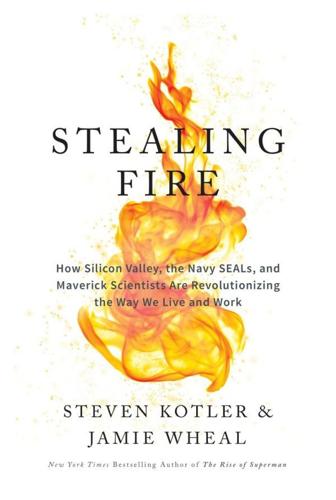
Stealing Fire: How Silicon Valley, the Navy SEALs, and Maverick Scientists Are Revolutionizing the Way We Live and Work
by
Steven Kotler
and
Jamie Wheal
Published 21 Feb 2017
By bringing the passionate and talented together to play and work, they’re charting a course toward a more innovative and sustainable future. Case in point: a cedar hot tub perched on the crow’s nest of the main house of Necker Island. Guests gather there to soak, talk, and gaze at the stars, and it was at one of those late-night gatherings that Branson birthed his most ambitious company yet. “That’s where I had the idea for Virgin Galactic,”36 he reflects. “NASA hadn’t yet created a spaceship I could fly on and, if I waited too long, I wouldn’t be around. So, I thought, let’s build our own. I mean, who in their right mind wouldn’t look up at those stars and not dream of going there?” And getting innovators into their “right minds” is what Summit, MaiTai, and Branson have done so well.
…
. $20 billion”: Richard Godwin, “How to Network like the One Percent,” Sunday Times, June 18, 2016; Kim McNichols, “Kiteboarding Techies Generate $7 Billion in Market Value,” Forbes, December 7, 2011. 34. We experienced this firsthand: Jamie Wheal, “Five Surprising Ways Richard Branson Harnessed Flow to Build a Multi-Billion Dollar Empire,” Forbes, March 25, 2014. 35. Carbon Warroom,: See: www.carbonwaroom.com 36. “That’s where I had the idea for Virgin Galactic”: Wheal, “Five Surprising Ways.” 37. In his seminal book: Geoffrey Moore, Crossing the Chasm: Marketing and Selling High-Tech Products to Mainstream Customers (New York: Harper Business, 2006); Everett Rogers, Diffusion of Innovation (New York: Free Press, 2003). 38. Eighteen million Americans now have a regular practice: T.
…
See also community/communitas University of North Carolina: meditation study at, 48 University of Southern California, Institute for Creative Technology at: AI at, 100–102 University of Sydney: flow study at, 48 Valentine, James, 52–53, 54 value. See Ecstasis Equation Vatican (Rome): Jones art at, 143, 144, 145 venture capital, 171, 172 Veterans Administration, U.S., 188, 192 Vice Kardaras comments in, 196–97 Zaitchik comments in, 64 Vicodin, 29 video games, 30, 196–97 Virgin Galactic, 173–74 virtual reality, 74–75, 108 visionary art, 142–45, 149, 150, 151, 152, 157, 198 visions and neurotheology, 109 and pharmacology, 126–32 vitamin D, 112 von Lila, Rosie, 167 VUCA (Volatile, Uncertain, Complex, and Ambiguous), of Navy SEALs, 13, 19 wabi sabi concept, 218 Wade, Jenny, 83 Waking Up (Harris), 57–58 Wal-Mart, 195 Wallace, David Foster, 7 Walshe, Andy, 46 Warner, Dave, 165–66 Watts, Alan, 90, 91 webcams, 96, 101 Welwood, John, 216 White House: Summit at, 171 wicked problems solutions to, 46–50, 158–79 See also specific problem Winfrey, Oprah, 75, 76, 78, 81 wingsuiting, 135–36, 137, 138 Wolfe, Tom, 189 Wonder Woman posture, 98, 99 World Anti-Doping Agency, 186 World Economic Forum, 162 World War II, 77, 120 Wu, Tim, 185–87, 199, 200 Yale University: neurobiology studies at, 98 Yeats, W.B., 186 yoga, 79, 99, 147, 175–76, 177, 214 “You Are a Receiver” (Silva video), 33, 44 Young, Ed, 86 Zaitchik, Alexander, 64 Zappos, 161–62 Zectran, 120 Zeidan, Fadel, 48 Zeus, 4, 221–22 Zimbardo, Philip, 40 Zoloft, 88 About the Authors Steven Kotler is a New York Times bestselling author, award-winning journalist, and the cofounder and director of research for the Flow Genome Project.
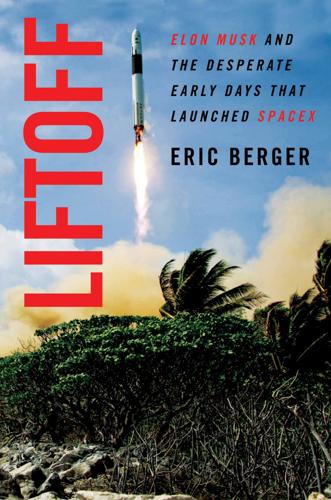
Liftoff: Elon Musk and the Desperate Early Days That Launched SpaceX
by
Eric Berger
Published 2 Mar 2021
No place in the world is really like it, combining an airport, a spaceport, an airplane graveyard, and rocket development warehouses. It was where, in 2004, Scaled Composites’ SpaceShipOne made the first privately funded human spaceflight. In the 2000s, other companies such as XCOR, Masten Space Systems, and Virgin Galactic called the facility home for their development operations. It seemed an ideal location for SpaceX, and initially Buzza reached a deal to use some of XCOR’s property and equipment for tests. The space was soon needed. By the fall of 2002, Mueller had already built a prototype for the Merlin engine’s gas generator.
…
You miss out on parent-teacher conferences, you miss out on plays, you miss out on soccer matches, you miss out on baseball, you miss out on volleyball, you miss out on a lot of those things that are important in a kid’s life during their formative years.” And so Thompson began to prioritize family over his profession. He departed SpaceX in May 2012, and, after a brief stint at Blue Origin, settled in at Virgin Galactic, which at the time had begun developing a small rocket that could be dropped from a modified 747 and launched from high altitude. It helped that chief executive George Whitesides made it clear that eighteen-hour days were not the norm. Thompson remained there for five years, before leaving to head up engineering for Astra, a secretive launch company designing a no-frills, small satellite launcher.
…
See Merlin engine Spikes, Branden, 262 Spincraft, 19, 151 Stanford University, 21, 129, 152, 155, 160 Starhopper, 1–2, 4, 265 Starship, 1, 3, 4, 35, 140, 235, 237, 247 Starship Troopers (movie), 168 Star Trek (TV show), 164, 176 Stock options, 15 Strategic Defense Initiative (SDI), 169 Suffredini, Michael, 221 Sunburn, 165–66 Super Heavy Launch System, 247 Supersonic retropropulsion, 233 Survivor (TV show), 75 Swamp Works, 24–25 TacSat, 113–14 Tahiti, 117, 118 Team America: World Police (movie), 93 TEA-TEB, 157–58, 194 Teets, Peter, 103, 104–5 Tesla, 181, 182, 201–2, 216–16, 217, 221, 256 Tesla Model S, 202 Tesla Roadster, 182, 201–2 Texas State Police, 28–29 Texas State Technical College, 45 Thomas, Ed “Eddie,” 77, 119–20, 121, 141, 159, 195, 262 Thompson, Chris, 239–42, 261 Falcon 1, 14–15 Washington, D.C. debut, 106 Flight Three, 177 Flight Four first-stage C-17 transport, 188–89, 191–92 payload, 184 refurbishment after transport, 193, 194–95, 196 founding of SpaceX, 10, 12, 14–18 Li and, 130 Merlin engine, 18–19, 151 Omelek site, 71, 75 everyday life, 166 fact-finding visit, 56–57 first launch attempt, 78–79 Wisconsin trip, 18–19, 151 Thompson, Ryan, 241 Thompson, Taylor, 241 Timeline, 263–65 Titan rockets, 48, 65–66, 224 TiungSAT-1, 54 Tobey, Brett, 236 Trade secrets, 43, 111 Trailblazer, 164 Trump, Donald, 235 TRW Inc., 32, 33–34, 37, 41, 43–44, 161 TR-106 (low-cost pintle engine), 33–34 Turbopumps, 37–38, 40, 92, 248 Turkish goulash, 168, 197, 242 recipe, 267–68 2001: A Space Odyssey (movie), 18 United Launch Alliance, 110–11, 112, 228, 236, 255 University of Bremen, 70 University of Delaware, 129 University of Idaho, 30–31 University of Michigan, 227 University of Southern California, 6, 7, 9, 20 Vance, Ashlee, 216 Vandenberg Air Force Base, 52–53, 64–67 Air Force plans for, 64–65 Falcon 1 static fire test, 47–49, 58–61, 65–66 procurement of site, 50–52 Vietnam War, 62 Virgin Galactic, 40, 241–42, 247 Virgin Orbit, 245 Von Braun, Wernher, 91 Walker, Steven, 98–99, 224 Wertz, James, 50, 79–80 White Sands Missile Range, 79–80 Whitesides, George, 241–42 World War II, 55 XCOR, 39–40 XPRIZE Foundation, 10 Zero-G flight, 141–42 Zurbuchen, Thomas, 227–28 Photo Section (SpaceX) An overview of Omelek, the remote island on the Kwajalein Atoll in the Pacific that became SpaceX’s launch site for the Falcon 1.
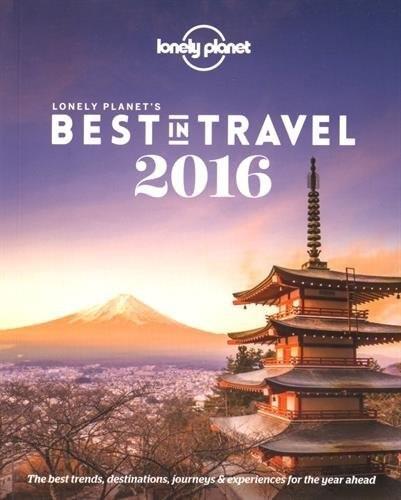
Lonely Planet's 2016 Best in Travel
by
Lonely Planet
Published 30 Sep 2015
Check travel advisories due to the political situation in Ukraine. 10 Space, the final… well you know the rest Fifty years after the first episode of Star Trek and space remains the final frontier… but it’s getting closer. Despite the tragic crash of Virgin Galactic’s VSS Enterprise, dozens of companies are spending millions to turn space tourism to a reality. Space Adventures is the first company to successfully transport its clients outside earth’s atmosphere, with seven civilian astronauts since 2001, but others are close behind. The only drawback is the price tag – an estimated US$20–40 million per passenger, though Virgin Galactic hopes to undercut the market with fares of just US$250,000. If you have a spare US$20 million or so lying around, contact Space Adventures (www.spaceadventures.com); their latest offerings include a circuit around the moon
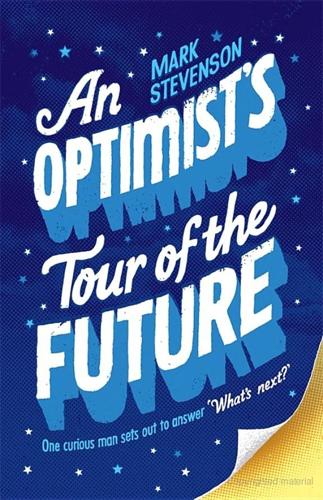
An Optimist's Tour of the Future
by
Mark Stevenson
Published 4 Dec 2010
The sign says ‘Mojave Air and Space Port’. But if that conjures up a futuristic image of gleaming towers, think again. The spaceport is a sprawling industrial park populated by nondescript sheds and factory units. As airports go, it’s on the shabby end. Still, it was here that Richard Branson’s Virgin Galactic grabbed headlines in 2004 by launching SpaceShipOne, winning the $10 million Ansari X Prize for Spaceflight, offered to the first commercial vessel able to take three people over the Kármán line and return them to Earth twice in fourteen days. The total cost of this entire development was rumoured at between twenty and thirty million dollars, which as far as the history of human spaceflight goes is peanuts.
…
There may be one of XCOR’s bijou rocket engines on a shelf, but simpler technologies like the vacuum cleaner are clearly not welcome here. As we talk, it starts to rain, the downpour drumming loudly on the corrugated metal roof. ‘Not everyone has picked up on the David and Goliath aspect of XCOR,’ says Jeff. ‘Richard Branson is pouring more money into Virgin Galactic in a month than we’ve spent in our history. You’ve got NASA doing billions and billions of dollars of its thing. Elon Musk pouring all of his money into SpaceX. Amazon.com’s Jeff Bezos is funding Blue Origin …’ And yet, despite their underdog status, XCOR keeps being mentioned in the same breath as its far better-funded rivals.
…
Daniel 160, 164 Hitchhiker’s Guide to the Galaxy, The 100 Hoek, Eric 118 Hofmeister, Anke 261–2 Hofstadter, Douglas 276 Holbrook 221–2, 239–40 Huggable 78 Human Security Brief 148 Huntington’s disease 44, 58 Huxley, Julian 13 I IBM 113, 125 identical twins 43 Imperial College London 31, 213 indium 195–6 Industrial Revolution 110, 115, 167, 171, 284–5 inequality 302 influenza virus 64–5, 69–70 Insomnia Cookies 93–4 Institute for Health Metrics and Evaluation 149 Institute of Bioengineering and Nanotechnology 69 Intelligent, Safe and Smart Built (ISSB) 119 interconnectedness Internet 151–8 nonzero-sum game 149–51 telegraph 145–7 and violent deaths 149 Intergovernmental Panel on Climate Change (IPCC) 171, 172, 179, 180 International Association Synthetic Biology 68 International Gene Synthesis Consortium 68 Internet 147, 151–64, 268, 302 invariants 99 Iran 157 Isasi, Rosario 27 IVF 106 J Jackson, Ron 64 Jones, Richard 120–1, 124, 130 Joule Biotechnologies 57, 186–8, 189 JSB see Brown, John Seely Jungerbluth, Philip 20 Jurassic Park 39, 75 K Kahn, Bob 153, 159 Kármán line 133 Kasparov, Garry 82, 83, 86 Katter, Bob 171 Keeley, Lawrence 147 Keeling, Charles David 167 Keith, David 184 Kelly, Kevin 161 Kench, Paul 242 Kessler, Andy 43 Klein, Naomi 303 Kleinrock, Leonard 152 Kline, Charley 152 Knome 50 Konarka 190–1, 196–204, 206, 224, 295, 299 Kossel, Albrecht 37 Krummel, Glen 228 Kukla, George 178–9, 186 Kunfunadhoo Island 261–2, 266 Kurzweil, Ray 90, 267–78, 282, 293, 299, 303–4 and Brown, John Seely 285 posthumans 103–4, 268 The Singularity 88 transhumanism 21–2, 267–8 Kyrgyzstan 157 L Lackner, Klaus 173, 174–86, 188, 189, 259–60, 299, 301 Lana 224–5 Langley, Tim 212–19 Law of Accelerating Returns 51, 270–8, 293 Leber’s congenital amaurosis (LCA) 59–60 Legion of Extraordinary Dancers 155, 158, 294 Lehmann, Johannes 209–10 Leo 73–4, 75–6, 79, 80–2, 84–6, 102 Lewis, Dan 203 Licht, Stuart 184 life expectancy 12–13, 301 and income 27–8 longevity escape velocity 29–30 limited liability corporations 290–1 Lincoln, Abraham 265–6 Lipson, Hod 92, 94–6, 98–101, 102, 210, 272–3, 293, 299 longevity escape velocity 29–30 López, José 117 Lovell, Tony 222–40, 300 Lovelock, James 164, 172, 220 biochar 208–9, 210, 215 LS9 56–7, 61 Lynx spaceplane 142 M Maahlos 261 McConnell, James 17 MacDiarmid, Alan 196 ‘Machine Stops, The’ (Forster) 161 McNamara, Kaitlyne 20–1 Maes, Pattie 162–3 Maldives 241–62 Malé 249–50 Malthus, Thomas Robert 250 ‘Manchester Report, The’ 223, 224 Markram, Henry 90, 91 Martine, George 252–3 Masten Space Systems 136 Matrix, The 103 men life expectancy 12, 23 pregnancy 24 methane 230 Methuselah Foundation 21 Mexico 278–9 Miescher, Johannes Friedrich 37 Miller, Webb 41 Minsky, Marvin 102, 104 Miromatrix Medical 20 MIT 40, 262 Fluid Interfaces Group 162–3 Media Lab 77–8 nanotechnology 201 Smart Cities Group 200 Technology Review 16, 187 Mitchell, Bill 200 Mojave 131–3, 135–44 Monbiot, George 215, 303 Moombril 221–2, 239–40 Moore, Michael 303 Moorhead, Paul 18 Moravec, Hans 74, 84, 89–90 Morgan Stanley 193 Mosely, Andrew 231–5 Mosely, Megan 231–5 Mouchot, Augustin 192–3, 266 mousepox 63–4 Musk, Elon 136, 141 Myhrvold, Nathan 16 N Najning University 120 nanofactories 114–17, 125–6, 286 Nanoforum 120 nanoparticles 287 nanopunk 117 Nanosolar 202–3 Nanosystems (Drexler) 112, 124 nanotechnology 107, 108–30, 268, 301, 302 apocalypse 125–7 and energy 201 Grey Goo 121–3 products 117–21 Narrandera 237–8 NASA 134, 135, 136, 141, 170 Nasheed, Mohamed 243–9, 254–60, 262 National Academy of Engineering 125 National Academy of Sciences 125 National Center for Atmospheric Research 176 National Center for Biotechnology Information (NCBI) 64–5 National Human Genome Research Institute 36 National Research Council 125 National Science Advisory Board for Biosecurity 67–8 natural language 86–7 Nature 170 Near-Earth Asteroid Rendezvous (NEAR) 134 New Scientist 68 New York 172 New York University 120 New Zealand 206–20 New Zealand Wind Farms 208 Nexi 102 Niven, Larry 135 nonzero-sum games 149–51, 153–4, 270 Northwest Passage 177–8 Nouri, Ali 65 nuclein 37 O oil 193 Olovnikov, Alexey 52–3 Olshansky, Stuart Jay 12 oncogenes 46–7 optical telegraph 145–6 Optimist (cocktail) 220 organic conductive polymers 196–7, 198, 201 ornithine transcarbamylase deficiency 58–9 Ott, Harold 20 over-population 17–18 P Pakistan 157 Pan Am 133 parabolic surfaces 192 Parkinson’s disease 273–4 Partners in Health (PIH) 202 Personal Genome Project (PGP) 37, 42–3, 47–50, 51, 273 Personal Robots Group 73–4, 75–6, 77–82, 84–6, 102 Pew Charitable Trusts 119 Pew Research Center 168 phenylketonuria 44, 58 Picton 214–15, 217–18, 220 Pifre, Abel 192 Pinatubo, Mount 169 Pinker, Steven 83, 147, 149, 293 Pirbright Laboratory 68 Pistorius, Oscar 29, 300 Pleasance, Erin 40–1 Polonator G.007 50 Pontin, James 16 Popular Science Monthly 192 population 17–18, 249–54 pornography 158 Portugal 234–5 Power Plastic 196–7, 198, 204, 224 Prey (Crichton) 122 procreative beneficence 23 Project on Emerging Nanotechnologies 119 proteins 45–6 ProtoLife 66 Pygmalion (Shaw) 86 pyrolysis 209–10, 212–14 R Ranchos de Taos, New Mexico 234 Rankin, Sarah 31 Rasmussen, Lars 256 Rebek, Julius 124 reflection 86 Regis, Ed 112 Reicher, Dan 194–5 Rema 199 Reporters Without Borders 157 Revue des Deux Mondes 192 Rice University 118–19, 201 Ridley, Matt 270, 302–3 Roberts, Lawrence 152 Roberts, Paul 244, 248, 254 Robinson, Ken 265–6, 284, 288, 293 robots 73–92, 302 Leo 73–4, 75–6, 79, 80–2, 84–6 Nexi 102 Starfish 95–6, 98–9 Rofecoxib 49 Rosenthal, Elisabeth 254 Rosling, Hans 251, 254, 293 Rothemund, Paul 119, 120 Ruddiman, William 230 Rumsfeld, Donald 172 Rutan, Dick 140–1, 142, 143 S Sanger Institute 40–1, 51 Saudi Arabia 157 Savory, Allan 221, 226–7, 232 Savulescu, Julian 23 scalable efficiency 286 Scaled Composites 136, 139, 142 Schmidt, Michael 98, 99, 273 Schöni, Peter 220 Schuster, Stephen 41 Schweizer, Erhard 113 scientific method 96–8 self-replication 121–3 senescence 18, 53–4 Shadow Robot Company 74–5 Sharkey, Noel 76–7 Sharpe, Tom 256 Shaw, George Bernard 86 Shawcross, Lord 215 Shew, Ashley 109–10 Shirakawa, Hideki 196 Shivdasani, Eva 261 Shivdasani, Sonu 261 Siemens 193 silicon cells 195–7 Singularity 88, 268 Singularity is Near, The 268, 269, 271 Six Million Dollar Man, The 14 SixthSense 162–3 Skordalakes, Emmanuel 52, 53 Smalley, Richard 111, 122, 123, 201 SmartHand 103 Smolker, Rachel 216 Snider, Wayne 200 Socrates 96–7, 99 soil carbon 228–31, 233–5, 236–7, 238 soil charcoal 213–14 solar energy 190–1, 192–3, 194–205, 206, 274, 295, 302 Solar Thermal Electrochemical Photo Carbon Capture 184 Solarbuzz 205 Soneva Fushi 261–2 space 133–44, 302 Space Frontier Foundation 134 SpaceShipOne 135–6 SpaceShipTwo 136, 139, 142 SpaceX 136, 141 Sparrow, Rob 23–4 Speedy, Barb 218 Spielberg, Steven 75 Stan Winston Studio 75 Standage, Tom 146–7 Stanford University 20 Star Wars 76, 83, 102 Starfish 95–6, 98–9 Stark, Philip 158 Stellenbosch University 118 stem cells 19–21, 31, 301 Stiehl, Dan 78–9 Stoppard, Tom 281 Strong, Graham 237–8 StubbyGlove 228 Suel, Gurol 273 Suh, Yousin 53 Sun Tzu 40–1, 51–2 surveillance 127, 129 synthetic biology 55–8, 70 bacteria 56–8 bioterrorism 63–6, 68 control 66–70 genome engineering 60–3 viral gene therapy 58–60 Synthetic Genomics 56 Syria 157 Szostak, Jack 18 T Taylor, Doris 20 TED (Technology, Entertainment, Design) 14, 153, 265–6, 291–5 Tefera, Elfenesh 199 telegraph 145–7, 297, 301 tellurium 195–6 telomerase 18–19, 45, 52–4 Terminator, The 76, 78, 103, 302 Tetrahymena 18 Thornton, Edward 146 thymine 37–9, 46 Toffler, Alvin 289 Tofu 79 transhumanism 13–18, 21–34, 45, 52–4, 267–8 transplants 19–21 Treder, Mike 126–7 tribes 155–6 Tripathy, Sukant 199 truth 96–8 Tsiolkovsky, Konstantin 114, 116, 125, 128 Tufts Center for the Study of Drug Development 49 Tumlinson, Rick 133–4 Turing, Alan 88 Turkmenistan 157 Turney, Chris 213 twins 43 U underwater cabinet meeting 241–2, 245, 246–9, 258 Ungar, Georges 17 United Nations (UN) biosafety 68 Livestock’s Long Shadow 230 population 252 State of the World’s Forests 253 World Urbanisation Prospects 250 United States biofuels 187 carbon dioxide 184 electricity 285 global warming 168 oil 187, 188 science 279–80 space programme 134, 136 University of Bradford 149 University of Bristol 20 University of British Columbia 148 University of California 118–19 University of Maryland 201 University of Minnesota 20 University of Regensburg 125 University of Washington, Center for Conservation Biology 40 Uppsala University 148 Uzbekistan 157 V Venter, Craig 36, 47, 50, 56, 57, 58, 279 Vietnam 157 Vinsen, Mark 211–12 violence 147–51, 302 and interconnectedness 157–8 and Internet 244–5 and nanotechnology 126–7 Vioxx 49 viral gene therapy 58–60 Virgin Galactic 135–6, 141 vitrification 15 Voltaire 218 Voyager 140 W Wake Forest Institute for Regenerative Medicine 20 Wall-E 76 Ward, Bruce 222–40, 259, 300 wars 147–9 Watson, James 56 Web 154–5 Weitz, David 51 Weizenbaum, Joe 86 Weldon, Larry 190–1, 196–7 Wellcome Trust Sanger Institute 40–1, 51 Wemett, Tracy 190, 197, 204, 267, 276, 297 Wired 61, 112, 159 Witt, Stuart 137–40, 143, 144 women 23–4 Wonder, Stevie 269 wood gas 209 Woodrow Wilson International Center for Scholars 119 World Health Organisation 68, 69–70, 148, 149 World Transhumanist Association 25 worldchanging.com 158 Wright, Allen 179, 180 Wright, Burt 179, 180 Wright, Karen 224–5 Wright, Orville 132–3 Wright, Robert 149–51, 156, 158, 270, 293 Wright, Tim 224–5 Wright, Wilbur 132–3 X Xcel Energy 199, 200 XCOR Aerospace 136, 141–2 Y YouTube 155, 157, 294 Z Zhang, Jin 118 Zimbabwe 221, 226 Zittrain, Jonathan 153 Ziyad, Mohamed 254, 255–6 Zykov, Victor 95 * An interesting coda to Claudia’s story is that she nearly didn’t get her operation.
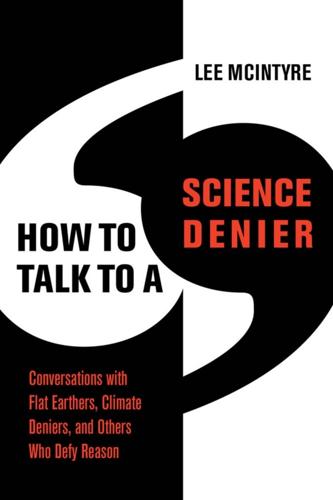
How to Talk to a Science Denier: Conversations With Flat Earthers, Climate Deniers, and Others Who Defy Reason
by
Lee McIntyre
Published 14 Sep 2021
Kenneth Chang, “Want to Buy a Ticket to the Space Station? NASA Says Soon You Can,” New York Times, June 7, 2019, https://www.nytimes.com/2019/06/07/science/space-station-nasa.html. There are also private companies, such as Virgin Galactic, that have plans to offer “space tourism” flights. Michael Sheetz, “Virgin Galactic Flies Its First Astronauts to the Edge of Space, Taking One Step Closer to Space Tourism,” CNBC, December 13, 2018, https://www.cnbc.com/2018/12/13/virgin-galactic-flight-could-send-first-astronauts-to-edge-of-space.html. The test flight went 51.4 miles into the air. 38. My idea here is that if you go out forty-five miles and the top of the Sears Tower disappears, but there is still a mirage on the horizon, presumably if you went out far enough, then the top of the Sears Tower in the mirage would disappear too.
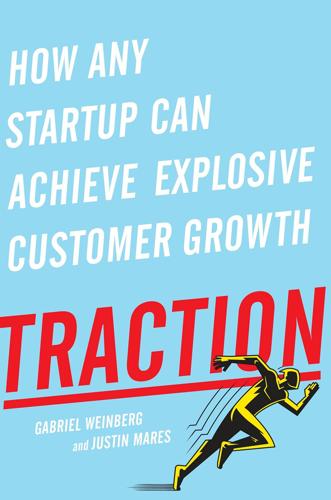
Traction: How Any Startup Can Achieve Explosive Customer Growth
by
Gabriel Weinberg
and
Justin Mares
Published 5 Oct 2015
Have newsworthy milestones to share. Contact reporters only when you can package your milestones into a compelling emotional story. When you do make a pitch, keep it short and sweet! CHAPTER EIGHT Unconventional PR Do you remember Richard Branson wearing a space suit to announce the launch of Virgin Galactic? How about the Old Spice man filming YouTube videos for people who tweeted at him? Or the car service Uber delivering cupcakes and kittens to employees who wanted a break from work? PR stunts like these are not only amusing, but also a proven way to generate press coverage and buzz. Unconventional PR doesn’t suffer from the crowding that the more popular traction channels face.
…
See also specific channels overview, 2–7 traction development, 9–12, 17 traction goals, 12–15, 18, 35–36, 139 defining your Critical Path, 37–38 traction subgoals, 36 traction testing, 21–22, 27–34 inner ring tests, 22–23, 28–31 middle ring tests, 21, 27–28, 209–13 online tools, 32–33 targets, 33–34 traction thinking, 2, 8–18 50 percent rule, 8–12 fund-raising, 15–16 moving the needle, 12–15 targets, 17–18 when to “pivot,” 16–17 trade show booths, 179–81, 182 trade shows, 7, 22, 175–82, 212–13 strategy, 176–77 tactics, 177–81 targets, 181–82 Trainyard, 168, 169 transit advertising, 88 Tribal Fusion, 75 TripAdvisor, 98 Trust Me, I’m Lying (Holiday), 3, 49, 50 Tumblr, 80 TV advertising, 88–90 Twilio, 183 Twitter, 170–71, 184–85 email marketing, 112–13 reaching out to reporters online, 53–54 social ads, 4, 31, 78, 79 targeting blogs, 46 Uber, 57, 94, 120, 121 Unbounce, 5, 29, 102–7, 110 unconventional PR, 3–4, 57–64, 210 case study of David Hauser, 62–63 customer appreciation, 58, 59–61 publicity stunts, 57–59 targets, 63–64 Upfront Ventures, 154, 178–79 Upromise, 160–61 URL Builder, 69 UserTesting.com, 125 UserVoice, 120 Vero, 112 vertical search sites, 161 Vine, 170 viral coefficient, 121–23, 126, 211 viral cycle time, 121, 123, 128 viral loops, 119–21, 123–24, 126, 127–28 viral marketing, xi, 5, 23, 118–25, 211 strategy, 119–23 tactics, 123–26 targets, 127–28 viral pockets, 126, 128 Virgin Galactic, 57–58 Visual Website Optimizer, 29, 70 Vollmer, Todd, 151 Volpe, Mike, 100 Walling, Rob, 7, 186–87, 188–89 Wall Street, 52 Walmart, 82, 160 Warby Parker, 79 Washington Post, 48, 142, 144–45 Weebly, 120 Wendy’s, 89 WePay, 58–59 WhatsApp, 120 widgets, 99, 129, 133 Wikipedia, 7, 98, 199, 201 Williams, Evan, 184–85 Wilson, Fred, 106 Winfrey, Oprah, 50 word of mouth, 120, 127 WordPress, 114, 131 WP Engine, 4, 113–14, 131, 175 writer’s block, 105 Yagan, Sam, 5, 103, 104–5 Yahoo!
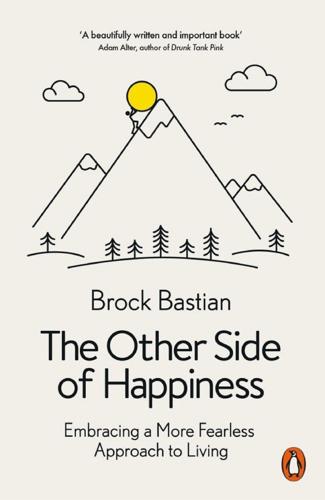
The Other Side of Happiness: Embracing a More Fearless Approach to Living
by
Brock Bastian
Published 25 Jan 2018
Gus Cooney from Harvard University examined an underlying social explanation for why extraordinary experiences might have unforeseen costs.22 His research team started with the observation that people often seek out extraordinary experiences in life. As an example, six hundred people have now paid a minimum of $250,000 for a seat on the world’s first commercial spacecraft, soon to be launched by Virgin Galactic. This experience will be truly extraordinary, and will remain so until such journeys become commonplace in the not-so-distant future. There are several reasons why people might be prepared to part with so much money for this experience. One is that it will clearly be an amazing experience. Another reason is that, as with much of what we do in life, we enjoy relating these experiences to others.
…
Using statistical analyses, the researchers could demonstrate that ratings of exclusion explained the change in happiness, meaning the extraordinary experiencers felt less included and therefore less happy. This study provides timely advice for the six hundred people still waiting for their extraordinary Virgin Galactic flight. Sell your ticket! It will probably not make you the star of dinner parties, and will more likely make you feel socially isolated and dissatisfied. Whether it is an emotional opponent process, or the unforeseen social costs of extraordinarily pleasant experiences, the evidence suggests that seeking pleasure in life may have several downsides, leading to dissatisfaction.

This Changes Everything: Capitalism vs. The Climate
by
Naomi Klein
Published 15 Sep 2014
Domestic Airline Fuel Efficiency Ranking 2010,” International Council on Clean Transportation, September 2013, http://theicct.org. 38. “Virgin and Brawn Agree Sponsorship to Confirm Branson’s Entry to Formula One,” Guardian, March 28, 2009; Daisy Carrington, “What Does a $250,000 Ticket to Space with Virgin Galactic Actually Buy You?” CNN, August 16, 2013; Peter Elkind, “Space-Travel Startups Take Off,” Fortune, January 16, 2013; FOOTNOTE: Salvatore Babones, “Virgin Galactic’s Space Tourism Venture for the 1% Will Warm the Globe for the Rest of Us,” Truthout, August 14, 2012. 39. Chibber, “How Green Is Richard Branson?” 40. Richard Wachman, “Virgin Brands: What Does Richard Branson Really Own?”
…
Clearly Virgin chose not to. And it’s not just airplanes. While he has been publicly waging his carbon war, Branson unveiled Virgin Racing to compete in Formula One (he claimed he had entered the sport only because he saw opportunities to make it greener but quickly lost interest). He also invested heavily in Virgin Galactic, his own personal dream of launching the first commercial flights into space, for a mere $250,000 per passenger. Not only is leisure space travel a pointless waste of (planet-warming) energy, it is also yet another money pit: according to Fortune, by early 2013 Branson had spent “more than $200 million” on the vanity project, with much more in the works.
…
To quote one scathing assessment of the project by sociologist Salvatore Babones, “If two words can capture the extraordinary redistribution of wealth from workers to the wealthy over the past forty years, the flagrant shamelessness of contemporary conspicuous consumption, the privatization of what used to be public privileges and the wanton destruction of our atmosphere that is rapidly leading toward the extinction of nearly all non-human life on earth, all covered in a hypocritical pretense of pious environmental virtue . . . those two words are Virgin Galactic.” VII. Including sustainability consultant Brendan May, founder of the Robertsbridge Group. “Of course you can segregate fuel according to its source,” May writes. “If there’s a will, there’s a way. . . . At present, there’s just no will.” VIII. In 2012, he went so far as to offer to invest roughly $8 billion in an expansion of Virgin Atlantic’s operations at Heathrow if the government would approve the new runway—a prospect that once again raises questions about Branson’s claims to be too broke to keep up with his $3 billion climate pledge.

Makers
by
Chris Anderson
Published 1 Oct 2012
Past it, a mile-long row of hangars hold even more ambitious vehicles designed to rekindle an adventure with the heavens that was somehow lost between Apollo and the grinding bureaucracy and cost of the Space Shuttle. Scaled’s spinoff, The Rocket Company, is now building a fleet of launch vehicles for Virgin Galactic, Richard Branson’s space tourism venture that is scheduled to begin operations in late 2012. The vehicles come in a pair: SpaceShipTwo, a sleek bullet of a spaceplane with a unique tail that pops up to a 45-degree angle on descent to slow the aircraft with a controlled stall after it has taken its passengers to the edge of space, and WhiteKnightTwo, a 747-sized four-engine giant that carries SpaceShipTwo aloft, along with a cabin full of other passengers who will get a zero-G parabolic ride on the way back.
…
Through the miracle of materials science, resins and threads can transform into surfaces lighter than aluminum and stronger than steel. It takes some skill to do it right, but nothing that can’t be learned over a few weekends. In fact, Scaled and Rutan got their start making composite kit planes for homebuilding hobbyists, much as kit cars also use fiberglass bodies. The same techniques that will take Virgin Galactic passengers to space began as ways to make wings and fuselages that were cheaper and easier to put together by amateurs. (Before you contemplate making one yourself, note that the average kit plane takes five thousand hours to finish, which is the equivalent of two and a half years of full-time work.
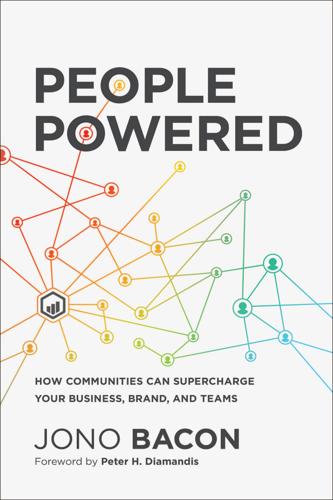
People Powered: How Communities Can Supercharge Your Business, Brand, and Teams
by
Jono Bacon
Published 12 Nov 2019
Peter Diamandis, a purveyor of boundless energy, who founded XPRIZE to run huge competitions designed to solve major problems in the world. We are not talking about building a better widget; the first XPRIZE was a $10 million competition challenging engineers of the world to build a reusable, commercially viable spacecraft back in 2004 (long before SpaceX and Virgin Galactic). A significant reason this first XPRIZE succeeded was because Diamandis painted a powerful vision of an ambitious new age of commercial space travel, discovery, and transportation. Equally important was its clear mission: teams were challenged3 to create a “safe, reliable, reusable, privately financed manned space ship to demonstrate that private space travel is commercially viable.”
…
stage, 132, 135 generating, by communities, 19–29 in great experiences, 127 and Ikea Effect, 101–2 individual, 164–67 leadership, 165, 167 for organization, 84–88 peer, 164–67 tangible vs. intangible, 78–79 value statements, 32, see also Community Value Statement van Engelen, Alexander (Yek), 49–50 Van Gogh, Vincent, 179 Velshi, Ali, 187 video games, stated incentives in, 220 videos, 195 video shows, 194 Virgin Galactic, 40 Virgin Red, 190 vision, 40–41 of community, 121–22 maintaining focus on, 43 of successful community building, 153–54 vocational experience, 114 vulnerability, 273 Walli, Stephen, 131 Walton, Izaak, 271 webinars, 194, 206, 244–45 Whitehurst, Jim, 25, 261 Why Participate? stage, 132, 135, 136 Wikipedia, 10 wikis, 49 Wordpress, 26 workflow changes, 55 www.jonobacon.com, 42, 94, 119, 167, 195, 258, 275–77 XBOX Live, 10 XPRIZE, xvii–xviii, 40, 189 Yerkes Dodson scale, 215 Zemlin, Jim, 74–75 Ziff Davis LLC, 47
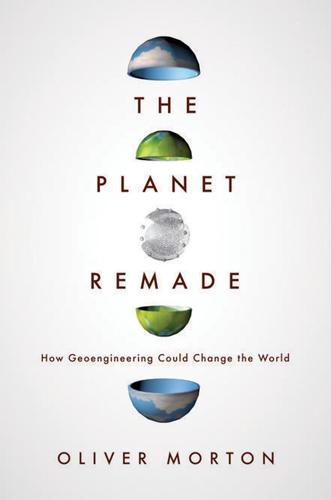
The Planet Remade: How Geoengineering Could Change the World
by
Oliver Morton
Published 26 Sep 2015
The tanker planes that extend their lifting capacity and their range are utterly standard. The aircraft’s development had been overseen and paid for by one of the world’s increasingly numerous billionaires, who had made her money from high-density data-storage systems. Her cover story was the development of a space-tourism follow-on to Virgin Galactic; that project’s name was Espedair, a name that stuck even when the cover was blown. The project cost more than the most extravagant of her peers had ever spent on a yacht – but not all that much more. The Concert has two sites for operations, one in Central America, one in the South Pacific.
…
It is partly because of this technological feasibility that the billionaire-geoengineer is a well-worn trope of speculation: within the geoclique, it is called the ‘Greenfinger’ scenario, an allusion to James Bond introduced, I think, by David Victor, a political scientist now at the University of California, San Diego. After all, billionaires building spaceships – either very publicly, as Richard Branson does with Virgin Galactic and Elon Musk does with SpaceX, or more privately, as Jeff Bezos does with Blue Origin – is almost a commonplace. In its pure form – a billionaire who tries to take over the climate more or less by him or herself – I think the Greenfinger idea is highly implausible. Consider the case of Bill Gates (as many do, in this regard).
…
W., 79–80 Twomey, Sean, 273, 277, 279 Twomey effect, 273–4, 282 Tyndall, John, 88 UK: carbon emissions, 11, 145; energy use, 18; gains from colonialism, 228–9 ultraviolet radiation, 47–53 UN Convention on Biological Diversity, 257 UN Convention on the Prohibition of Military or Any Other Hostile Use of Environmental Modification (ENMOD), 270 United Nations Framework Convention on Climate Change (UNFCCC), 99, 140, 143–4, 145, 165–6, 355 University College London, 227 US Agency for International Development, 192 US Bipartisan Policy Center, 160 US National Research Council, 354 USA: agriculture, 184–5; anti-communism, 192; Brooklyn Bridge, 134; California drought (1976–77), 319–20; carbon market, 144; chemical warfare, 340–1; Dust Bowl, 185–6; Dyson’s proposed afforestation scheme, 259, 260; emissions reduction, 11, 20; and environmental warfare, 334–5, 339–41; fertilizer use, 190–1, 193; future scenarios, 342; and global warming, 355; historical attitudes to climate, 127; hurricanes, 295–6; and Kyoto, 141; Massachusetts electricity use, 263; Native Americans, 188, 227; nuclear energy, 13, 15; nuclear weapons, 43, 45, 324; and ozone layer, 52; population control, 188; rainmaking schemes, 268–71; and Saudi weapons purchase from China, 354; Texan oil industry, 248 USSR: climate research, 138; and cold war, 314; environmental management projects, 133; nuclear weapons, 43, 319; US cold war attempts to minimize influence, 192 vaccination programmes, 353 Van Allen belts, 340 veilmaking: aerosol choice, 107–12; attitudes to, 281–3; background science, 275–81; chances of working, 335; costs, 102, 105, 106–7; counterengineering, 341–2; current work, 169; delivery methods, 101–7; as doomsday device, 342–3; early schemes, 138; effects overview, 112–18; future scenarios, 347–75; health risks, 112, 281; and international relations, 364–8; overview, 100–23; and plant growth, 238; pros and cons, 112–23; regional, 291–2, 297; termination shock, 118–20, 358, 362, 366; weaponizing, 341; winners and losers, 120–2, 164–5; Wood and Teller’s work, 148–51; see also clouds: brightening Venus, 89–90 Vernadsky, Vladimir, 74 Verne, Jules, 128 Victor, David, 353, 355 Vietnam War (1954–75), 137, 270 Virgin Galactic, 353 Virginia, University of, 223 vitamins, 49–50 Vogt, William, 185–9, 191, 195, 202 volcanoes: and geological carbon cycle, 233; and climate, 100, 107–8; effects of eruptions, 83–99; future scenarios, 367–8; and sulphur, 273 von Neumann, John, 312, 314–17 von Neumann machines, 316 Vonnegut, Bernie, 269, 272, 301 Vonnegut, Kurt, 272, 298, 301 Wanser, Kelly, 286–7, 288 warfare: caused by climate engineering, 364–7; chemical, 340–1; environmental, 135–7, 334–5, 339–41; using climate engineering, 341–2 water: and cloud brightening, 283–8, 292; increasing reflectivity of standing water, 291; nitrogen pollution, 195–9; plant water-efficiency, 238–9, 242; see also hydrological cycle water supply: 1930s America, 185; future scenarios, 362; and global warming, 116; increasing to dry areas, 284–5; and veilmaking, 114–18 water vapour: and aircraft engines, 102; and climate, 72, 88, 92, 95, 111; and climate change, 65; and clouds, 72–3, 111; and geoengineering, 111, 115; and hydrological cycle, 67; and plants, 242; in stratosphere, 85 Watson, Andrew, 290 Watson, Matt, 100, 109–10 Watt, James, 226 weather forecasts, 312 Weaver, Warren, 191 Wegener, Alfred, 47–8 Wells, H.
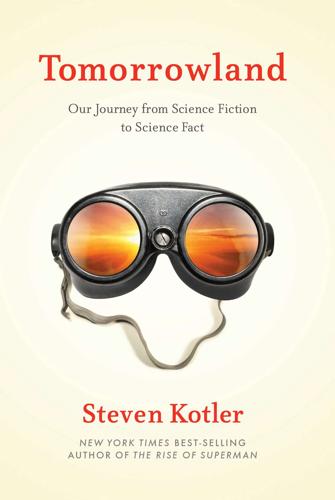
Tomorrowland: Our Journey From Science Fiction to Science Fact
by
Steven Kotler
Published 11 May 2015
On the Stratos website there’s a short list of potential applications for the knowledge gained from Baumgartner’s jump: “Passenger/crew exit from space; developing protocols for exposure to high-altitude and high-acceleration environments; exploring the effects of supersonic acceleration and deceleration on the human body; and testing the latest innovations in parachute systems.” In plainer language, experts have said that if the passengers on the space shuttle Challenger had been equipped with Baumgartner’s suit they might have lived through their midair crack up. Along just these lines, some six months after Baumgartner’s jump, Virgin Galactic’s SpaceShipTwo powered up its engines for the first time. SpaceShipOne, you might remember, was the craft that won the Ansari XPRIZE in 2004. This original XPRIZE was a demonstration project, both proof that a private company could produce an affordable, reusable spaceship and the necessary first step in opening the space frontier.
…
Wade, 208 Rosenau, William, 233–34 Ross, Ronald, 134 Ross, Stephen, 169 Rossin, Dave, 118 Rothenberg, Ron, 185–87, 192, 197–98 Rothman, Cappy, 247, 249–63 Rothman, Norman “Roughneck,” 249 Rozelle, David, 5–7, 10–12, 15–19, 20–21 Rubin, Gerald, 136–37 Rutan, Burt, 151 Salk, Jonas, 55 Sandoz Pharmaceuticals, 168 Saskatchewan Study, 169 Satava, Richard, 15 Schmidt, Eric, 145 Schwartz, Peter, 11 science fiction on asteroid mining, 145, 147–48 on mind uploading, 27–28 terraforming in, 87 Sears, Derek, 150 Seattle Study, 39–40 self, boundaries of, 46–47 Selfridge, Tom, 66–67 Senate Bill 212, 215 serotonin, 42 Shaw, George Bernard, 3 Shell, 148 Siegel, Ronald, 167 Simak, Paul, 145 Single Mothers by Choice, 253 The Singularity Is Near (Kurzweil), 28 The Six Million Dollar Man (TV show), 11 ski-BASE, 130 Skycar, 100 skydiving, 35–36, 125–30 Skygrabber, 235 slavery, financial profitability of, 51–53 smallpox, 236–37 Small Scale Nuclear Reactors, 119, 121 Socolow, Robert, 114 Solazyme, 231–32 Sorenson, Kirk, 120 Soul Catcher, 25–27, 28, 30–31 sound barrier, xii, 101 Southern Baptist Church, 260 Space Adventures Ltd., 145 SpaceShipOne, 129 SpaceShipTwo, xiii, 129 space travel, 129–30 asteroid mining and, 141–52 ethics of, 143–47 off-world colonies and, 150–51 XPRIZE competition for, xi–xiii, 129 Special Theory of Relativity, 109 SPECT (single positron emission computed topography), 45–46 Spenser, Jack, 111 sperm banks, 247–63 donor anonymity in, 253–57, 260–62 donor screening for, 252–53, 261–62 donor tracking by, 256–57, 262 economics of, 250–51 incest among offspring from, 257–60 regulation of, 251, 258–59, 260–63 Spirit of America (car), xii spiritual traditions, xiv–xvi fear of death and, 29 mystical experiences and, 33–48 near-death experiences and, 42–45 psychedelic drugs in, 167–68 spoonbills, 93–94 sports extreme, 125–30 out-of-body experiences in, 36–37 as play, 125 prosthetics and, 12–13, 15, 17, 19–20 skydiving, 35–36, 125–30 steroid use in, 183, 187–90, 193–95 weightlifting, 189–90 Spradling, Allan, 136, 137 stabilization wedges, 114 Stanford, George, 106, 119–120 Stanford University, 216–17 Stapledon, Olaf, 85 Stardust (space vehicle), 146 starry-night effect, 64–65 stars, creation of, xvii State Children’s Health Insurance Program, 210 Steindl-Rast, David, 173 stem cells, 201–18 anti-abortion war and, 208–10 in anti-aging medicine, 199 availability of for research, 211–13 bioweapons and, 240 cancer and, 205 conflated with cloning, 214–15 defining life and, 209 efforts to change federal law on, 213–15 from embryos, 209 fetal, 208–10 hematopoietic, 205–6 hybridization of, 200 loss of research and researchers on in the US, 212–13 methods for obtaining, 207–8, 214–15 organ transplants and, 204–5 parthenogenesis of, 208 politicization of, 206–17 potential of, 206 state legislation on, 211–13 StemCells Inc., 216 Sterling, Bruce, 247 Steroid Control Act, 189–90, 198 steroids, 183–200 for AIDS treatment, 196–97 anabolic and androgenic, 192 for cosmetic purposes, 190 DHEA, 186, 198 early research on, 192–93 human growth hormone, 198 metabolic effects of, 190–92 misinformation about, 183–84, 188–90, 193–95 negative effects of, 188–89, 194 research on, 189–90 ’roid rage and, 189 in sports, 183, 187–90, 193–95 testosterone, 192–93, 198–99 Stewart, Jon, 145 Stratos Project, 127–30 Strauss, Lewis, 109 Studebaker, winged, 100 Studies in Conflict and Terrorism, 233–34 sugarcane farming, 87–89 Sulgin, Alexander, 160 Survival Research Labs, 101 Svalbard Global Seed Vault, 249 Swiss Federal Institute of Technology, 27 synthetic biology, xv, 219, 230–38, 241–42 Synthetic Genomics, 230 Szilárd, Leó, 109 Talent, Jim, 237 technology criminal use of, 235–36, 246 democratization of, 247–48 disruptive, xiv–xvi, 31, 151 evolution and, 56–59 irresistibility of, xvi–xvii rate of change in, 28, 57, 225–27 technopatric speciation, 58–59 techno-physio evolution, 54–57 telomeres, 191 temporal lobe, 43–45, 47–48 terraforming, 81–95 Terrafugia Transition, 100 Terra Nostra (Fuentes), 23 TerraPower, 121 terrorism, 229–30 bioweapons in, 233–38, 241–42 FBI biosecurity conferences and, 236–37 information technology in, 235 nuclear energy and, 120 testosterone, 192–93, 198–200 theory of mind, 23 This Is Reality (Martensson), 27 This Timeless Moment (Huxley), 181–82 Thompson, Hunter S., 168, 171 thorium reactors, 119–20 Three Mile Island, 110, 118 Thurmond, Strom, 213–14 Time on the Cross: An Economic Analysis of American Negro Slavery (Fogel & Engerman), 52–53 Tito, Dennis, 145 Toshiba, 121 Toth, Lou, 85–86 tourism, space, 129–30 transcendent states, 45–47, 165 trans fats, 198 transposable elements, 136–38 traveling wave reactors, 121 Truax, Robert, 101 Truax Engineering, 101 Tsiolkovsky, Konstantin, 145 Tsukamoto, Ann, 216 “The Tunnel Under the World” (Pohl), 27 tunnel vision, 41–42 UK Royal Commission on Environmental Pollution, 115 United Nations, 217 unity, cosmic, 45–47, 165, 175 US Air Force, 241 US Department of Energy, 119, 228 van Lommel, Pim, 40, 42 Venter, Craig, 228, 230, 231, 247 Vergel, Nelson, 196–97 Virgin Galactic, 129 vision artificial implants for, xiv, xvi, 26, 61–77 cost of artificial, 75–76 effects of electricity on, 79, 80–81 functional mobility in, 67 neuroprosthesis for, 67 religions on, 74 retinal implants for, 66–67 starry-night effect in, 64–65 tunnel, in near-death experiences, 41–42 “The Voice” (Butcher), 37 Walter Reed hospital, 15, 17 Walton, Ernest, 109 water impoundments, 88–90 Waterman, Waldo, 100 Watson (artificial intelligence), 223 weapons of mass destruction, 227, 245–46 Weapons of Mass Destruction Directorate, 236–37 weightlifters, 189–90 Weiland, James, 76–77 Weissman, Irv, 203–7, 209, 211, 215–17 Weldon, Dave, 215 Weldon Bill, 215 West Nile virus, 133, 134 What Technology Wants (Kelly), xvi–xvii Whinnery, James, 40–42 Wick, Douglas, 213–14 Wikileaks, 224, 242 Wimmer, Eckard, 233 Winkler, Allan, 110 World Health Organization (WHO), 61 Wright Brothers, 72–73 XPRIZE, xi–xiii, 129, 141, 151 yellow fever, 133, 137 Yesalis, Charles, 195 You, Edward, 236–37 Yushchenko, Viktor, 238 Zee-Aero, 105 Zucker, Jerry, 213–14
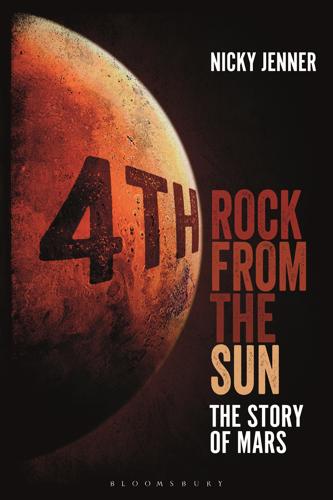
4th Rock From the Sun: The Story of Mars
by
Nicky Jenner
Published 5 Apr 2017
Other private companies have put forward tentative plans for a Mars mission architecture, or entered the Mars space race in different ways. Boeing, for example, is working with NASA to transport astronauts to and from the ISS, and proposed its conceptual ‘Affordable Mars Mission Design’ in 2014. Orbital ATK and Richard Branson (Virgin Galactic) have also expressed interest in Mars, though the spaceflight contributions from the former come primarily through its work on NASA’s SLS (for which they are providing the boosters) and low-orbit commercial ventures around Earth (including shuttling cargo to the ISS), and from the latter via its quest to make spaceflight as routine as driving a car (the birth of space tourism!).
…
here–here, here Mars Climate Observer (MCO) here–here Mars Express here, here, here, here, here–here Mars Global Surveyor (MGS) here, here, here, here–here, here Mars Hope here Mars Observer here–here Mars Odyssey here, here Mars One here, here–here Mars Orbiter Laser Altimeter (MOLA) here–here Mars Orbiter Mission (MOM) here–here Mars Polar Lander (MPL) here–here Mars Reconnaissance Orbiter (MRO) here–here, here, here Mars Science Laboratory (MSL) here, here–here, here Marshall-Green, Logan here Martian, The here–here, here, here, here–here, here, here, here, here Massachusetts Institute of Technology (MIT) here Massimino, Mike here MAVEN (Mars Atmosphere and Volatile Evolution) here–here, here McKay, Chris here McKay, David here, here Méndez, Arnaldo Tamayo here Mercury here, here, here, here astrology here orbit here meteorites here–here microgravity here, here human body here–here mental health here personality here–here social health here–here Molenaar, Gregory here, here Moon here, here, here, here, here, here, here first crash landing here first manned landing here first soft landing here Mars here Moon landings here, here, here–here, here, here musicians here–here Musk, Elon here, here, here, here, here–here Mustard, John here mythology here, here–here Mars in other cultures here–here Naderi, Firouz here NASA here–here, here, here, here, here, here–here, here, here–here, here, here astronauts’ radiation exposure here benefits of research here–here Human Research Program here manned missions to Mars here–here The Martian here–here National Centre for Space Studies (CNES), France here Navarro-González, Rafael here Neptune here astrology here–here Noachian Period here–here Nozomi here–here Nye, Bill here Obama, Barack here–here oceans here–here Olympus Mons here, here, here, here, here Opportunity here, here, here, here, here–here, here, here, here orbit of Mars here–here Orion here, here Outer Space Treaty 1967 here Páez, Leonardo here–here palmistry here–here panspermia here, here pareidolia here–here Pathfinder here, here–here Petranek, Stephen here Pettit, Don here Phobos here–here, here, here–here death of Phobos here–here discovery here, here–here, here, here formation here–here mythology here–here Phobos (Fobos) 1 and 2 here, here Phobos-Grunt here, here Phoenix here, here, here Picus here Pierre Guzman Prize here–here planetary embryos here–here, here planetesimals here, here, here, here, here–here, here Plato here, here Plutarch here–here Pluto here astrology here–here discovery here, here poles here pressure here–here private missions here–here Prometheus here Protazanov, Yakov here Ptolemy here–here, here, here radiation here, here–here, here recurring slope lineae (RSL) here, here, here, here, here red cultural significance here–here, here–here natural world here psychosocial significance here Red Dragon here Red Planet here, here–here, here Rees, Martin here, here retrograde motion here–here, here Rheticus here–here Richer, Jean here RNA here–here Robinson, Kim Stanley Mars trilogy here, here–here, here robots here–here Curiosity here–here Martian yellow storm of 1971 here–here robots of the future here–here rovers here–here Roche, Joseph here–here Romulus and Remus here Roscosmos here, here, here, here, here–here Rosetta here–here RTGs (radioisotope thermoelectric generators) here Ryumin, Valery here Sagan, Carl here, here, here Cosmos here–here, here, here Salisbury, Frank here–here Salyut 1 here Santa Claus Conquers the Martians here Saturn here, here, here, here astrology here Schiaparelli here–here Schiaparelli, Giovanni here, here, here, here, here, here Schulze-Makuch, Dirk here Schwarzenegger, Arnold here science here–here science fiction here, here–here, here canals on Mars here–here comics here–here films here–here television here–here video games here–here Scott, Ridley here, here Shepard, Alan here Shklovsky, Iosif here silicon-based life here–here Sinton, William here, here Skylab 4 here soil here, here–here Sojourner here–here, here, here, here Solar System here, here, here, here, here, here, here, here, here Aristotelian astronomy here formation here–here Ptolemaic astronomy here–here, here, here Soviet space programme here–here, here, here–here, here, here–here, here space here first spacewalk here life from space here–here missions to Mars here space exploration here–here, here Space Launch System (SLS) here, here–here, here Space Race here robots on Mars here–here US here, here–here USSR here–here SpaceX here, here, here, here, here–here Special Regions here–here Sphinx-99 here–here Spirit here, here, here–here, here, here, here Sputnik 1 here, here Sputnik 22 here Sputnik 24 here–here, here Sun here, here, here, here–here, here, here–here surface here–here, here surface conditions here–here, here–here Swift, Jonathan Gulliver’s Travels here–here, here, here symbolism here–here Men are from Mars, Women are from Venus here–here Syrtis Major here–here, here tardigrades here tarot cards here–here technology here–here tectonics here, here, here–here, here, here television shows here–here Tereshkova, Valentina here terraforming here–here Tesla Motors here, here Tesla, Nikola here–here Tevis, Walter The Man Who Fell to Earth here Tharsis dome here, here, here, here, here Tholus here Tito, Dennis here Todd, David Peck here Tolstoy, Aleksey Nikolayevich Aelita here Tombaugh, Clyde here, here Total Recall here Tyson, Neil deGrasse here, here United Arab Emirates here Universe here, here–here, here, here Uranus here astrology here Valles Marineris here, here–here, here, here, here Vasavada, Ashwin here, here, here, here–here Vastitas Borealis here vegetation here–here Venera here Venus here, here, here, here, here–here astrology here probes here video games here–here Viking 1 and 2 here, here, here–here, here, here–here, here–here, here, here Virgin Galactic here–here virtual reality here–here volcanism here–here, here–here Von Braun, Wernher here–here, here, here Voyager here Wallace, Alfred Russel here water here, here–here, here hunt for life here–here water bears here Weir, Andy The Martian here–here Welles, Orson here Wells, H. G.
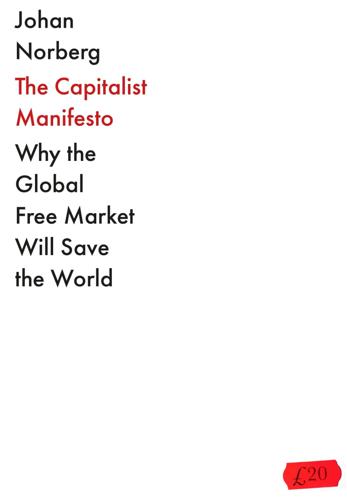
The Capitalist Manifesto
by
Johan Norberg
Published 14 Jun 2023
The moon landing is a bizarre symbol of the new hope for industrial policy because we never got any industry. We placed a flag on the moon and then travelled back. We boldly went back home like no one has done before. Ironically, space is only beginning to be conquered now that it is being privatized, with companies such as SpaceX, Blue Origin and Virgin Galactic. They are not going for moonshots but for experimenting, improvising, adjusting and, through incremental improvements, constantly finding new methods and sources of revenue; step by step they are reducing the cost of turning humanity into a multiplanetary species. Each launch of NASA’s Space Launch System, SLS, designed to take us back to the moon, is projected to cost $2 billion.
…
J., 141 Obama, Barack, 147, 152, 165 Oculus, 177 OECD (Organisation for Economic Co-operation and Development), 147, 249–50 Open (Norberg), 297 Our World in Data, 18, 250, 268, 270 Oxfam, 4, 43, 133–4 ozone layer, 236 Pakistan, 219 Palm, 174 Paraguay, 239 Paris, France, 66–7 Paris Climate Agreement, 233 Parks, Rosa, 62–3 Paulsen, Roland, 98 PayPal, 178 Peru, 29–30 Pfizer, 177 Philippines, 248 Piketty, Thomas, 127–31 Pinochet, Augusto, 29, 46 ‘planned obsolescence’, 156–60 Poland, 26 populism, 47–8 pornography, 188–9 Portugal, 26–7, 254 poverty, 12, 17–25, 20, 29–33, 53–4, 110, 291–2 in China, 213, 214 climate change and, 235–6, 245 inequality and, 133–7 Prasad, Chandra Bhan, 64 prices, 67–9 price regulation, 68 profit, 74, 122–4 profit-hunger, 273–5 property rights, 70–72 protectionism, 3, 5, 11–12, 78–9, 115, 117–18 Putin, Vladimir, 5, 39 Quaero, 191–2 Quarterly Journal of Economics, 117 Quartz, Steven, 287 Questioning the Entrepreneurial State, 198 racial segregation, 62–3 racism, 62–3, 111 Radelet, Steven, 24 RAND Corporation, 184, 186 Rao, Madhusudan, 63 Reagan, Ronald, 8–10 Rehbinder, Caspian, 269–70 religion, 26–7 Republican Party (US), 8–9 Ridley, Matt, 188 Ritchie, Hannah, 250, 270 Romer, Paul, 241 Romney, Mitt, 165 Roser, Max, 18 Rosling, Hans, 18 Rossi-Hansberg, Esteban, 148–9 Rousseau, Jean-Jacques, 279, 284 Rubio, Marco, 181 Rü ck, Christian, 272 Russia, 39, 138 see also Soviet Union Rwanda, 35 Samuelson, Paul, 5 Sanders, Bernie, 43, 122 Sandström, Christian, 183, 240 Scandinavia, 22, 36, 281 Schröer, Gerhard, 191 Schumpeter, Joseph, 89 Segerfeldt, Fredrik, 137 Shah, Parth, 25 Shambaugh, David, 215 Shanghai, China, 209 Shelby, Richard, 202–3 Shopify, 178 Silicon Valley, 141 Singapore, 23, 84 Singh, Manmohan, 25 Sixdegrees, 170 slavery, 31, 73, 75 Smith, Adam, 213, 264 smoking, 137 Snapchat, 178 Soave, Robby, 171 social class, 137 middle class erosion, 93–5, 95 working class, 7 social media, 155, 163, 165–9 social mobility, 90–91 social networks, 169–71 socialism, 11, 44, 75, 120–21, 145 three steps of socialism, 44–5 Swiss bank socialism, 33 Socrates, 65 Son of a Servant, The (Strindberg), 120–21 Sony, 151 South Africa, 45–6, 72, 267 South Korea, 23–5, 84, 225 Soviet Union, 26, 215, 219, 241–2 see also Russia Sowell, Thomas, 62 space programme, 181–3, 191, 201–2 moon landing, 181–3, 191, 201–2 Space Launch System (SLS), 202 SpaceX, 202 Spain, 26, 27, 97 Spanish flu pandemic, 1918, 77 Starbucks, 75–6, 148 Stephens-Davidowitz, Seth, 155 Strain, Michael, 94 Strindberg, August, 120 subsidies, 139–40 suicide, 271 sulphur dioxide, 236 supply and demand, 67–9 supply chains see global supply chains Svensson, Mattias, 256 Sweden, 49–51, 54–5, 66, 75–8, 91, 240, 244–5, 251, 266, 268–9, 271, 285 Swedish Energy Agency, 194 Swiss bank socialism, 33 Switzerland, 285 Taiwan, 23–5, 205, 207, 225, 267 Taliban, 160–61 Tanzania, 239 Target, 178 taxation, 56, 259 tax deductions, 141, 148 Taylor, Robert, 184–6 tech companies, 162–79 competition, 178–80 data, 175–6 GAFAM (Google, Amazon, Facebook, Apple, Microsoft), 169–80 regulations, 164, 174–5 Tech Panic (Soave), 171 Technology Pork Barrel, The (Cohen and Noll), 190 technology, 40–41 Thanks a Thousand (Jacobs), 60 Thatcher, Margaret, 8–11, 116 Theranos, 153 Thoreau, Henry David, 82 Thunberg, Greta, 230, 232 TikTok, 178 Times, The, 116 traditions, 26–7 Trotsky, Leon, 73 Trump, Donald, 6, 8, 48, 83, 107, 140, 165, 217 Truss, Liz, 9, 11, 56, 117 trust, 153–6 Turkmenistan, 225 Twitter, 166–7 Uber, 102 Uganda, 35 Ukraine, 5, 215 United Kingdom, 10, 22–3, 38, 49, 97, 101, 268–9, 283 Brexit, 116–17 United Nations Food and Agriculture Organization (FAO), 233, 239 United States, 22, 55, 62–3, 80, 85, 97, 110–11, 239, 267–8, 282 China and, 205, 211, 221 crony capitalism, 139–40 ‘deaths of despair’, 7, 108–10, 136, 271, 293 Defense Communication Agency, 187 Jim Crow laws, 63 labour market, 85, 87–93, 101, 104–11 political polarization, 167 productivity growth, 148–9, 152–3 welfare state, 111–14 US–China Business Council, 210 Vance, J. D., 87 Vasa (ship), 195 Veenhoven, Ruut, 279–80, 283–5 Venezuela, 43–5, 47 Verizon, 170 Vietnam, 11 Virgin Galactic, 202 Volcker, Paul, 10 Volkswagen, 153 wages see income Walmart, 147, 178 Walton, Sam, 127 wealth, 119–35, 273 capital income, 130–31 super-rich, 119, 125–35 see also inequality Weber, Max, 22, 273 Weiying Zhang, 213, 227 ‘welfare entrepreneurs’, 197 welfare state, 66, 111–14, 293 Wernberg, Joakim, 176–7 Wilson, Harold, 10 work, 83–118, 288–9 gig economy, 101–3 globalization and, 103–4, 109–10 income/wages, 22, 55, 88–96, 95 job losses, 104–7 job satisfaction, 98–100 labour market insecurity, 101 manufacturing industries, 83–7 safety, 98 stress and, 100 unemployment, 108–15, 109 working hours, 97, 97 World Bank, 17–18, 30–31, 39, 233 ‘World Database of Happiness’, 279 World Health Organization, 237 World Trade Organization (WTO), 2, 4–5, 29, 205, 209, 211 World Values Survey, 278, 283 World Wide Fund for Nature, 238, 249 Xerox, 185 Xi Jinping, 199, 205, 216–17, 222, 227–9 Xinjiang, China, 204–5 Yahoo!

Physics of the Future: How Science Will Shape Human Destiny and Our Daily Lives by the Year 2100
by
Michio Kaku
Published 15 Mar 2011
Microsoft billionaire Paul Allen helped to underwrite the project. Now, with SpaceShipTwo, Rutan expects to begin tests to make commercial spaceflight a reality. Billionaire Richard Branson of Virgin Atlantic has created Virgin Galactic, with a spaceport in New Mexico and a long list of people who will spend $200,000 to realize their dream of flying into space. Virgin Galactic, which will be the first major company to offer commercial flights into space, has already ordered five SpaceShipTwo rockets. If successful, this might drive down the cost of space travel by a factor of ten. SpaceShipTwo uses several methods to cut costs.
…
Schwabl, Mike Schwartz, Peter Schwarzenegger, Arnold Second Life (Website) Self-assembly Self-awareness Self-replicating robots, 2.1, 8.1, 8.2 Sen, Ayusman SETI (Search for Extraterrestrial Intelligence) program Severe combined immunodeficiency (SCID) Shakespeare, William Shape-shifting technology Shaw, George Bernard Shen, Weimin Shopping in 2100, 9.1, 9.2 Shostak, Seth Silicon chips, limitations of, 1.1, 1.2, 4.1 Silva, Alcino Simon, Herbert Simon, Julian Simonyi, Charles Sinclair, David, 3.1, 3.2, 3.3 Singapore Singularity Sirtuins SixthSense project 6th Day, The (movie) Sketch for a Historical Picture of the Progress of the Human Mind (Condorcet) Slingatron Smalley, Richard, 4.1, 4.2, 4.3 Smart dust Smith, Adam Smith, Gerald Social robotics Solar power Solar sail propulsion system Sonograms Sonoluminescence Space elevator SpaceShip spacecraft, 6.1, 6.2, 6.3 Space solar power (SSP) Space travel, itr.1, 6.1 asteroid landing big bang research booster-rocket technologies cost of Europa exploration far future (2070) genetic engineering of humans for human-robot merger and life in space, search for, 6.1, 8.1 Mars landing/colonization Martian moon landing midcentury (2030) moon landing/colonization, 6.1, 6.2 nanotechnology and, 6.1, 6.2 near future (present to 2030) planets outside the solar system, search for private initiatives robotics and, 2.1, 6.1, 6.2, 6.3, 6.4 space elevator tourism water in space, search for, 6.1, 6.2 weightlessness problem See also Starships Spinal cord injury treatments Sports and games, 8.1, 9.1 STAIR (Stanford artificial intelligence robot), 2.1, 2.2 Starships antimatter rocket propulsion system nanoships nuclear rocket propulsion system ramjet fusion propulsion system solar sail propulsion system Star Trek series, itr.1, 1.1, 1.2, 1.3, 1.4, 1.5, 2.1, 2.2, 3.1, 4.1, 8.1, 8.2 Star Wars saga, 1.1, 1.2, 1.3, 1.4, 2.1, 8.1 Steam power Steffens, John Stem cell technology Stewart, Potter Stock, Greg, 2.1, 3.1, 3.2 Stormer, Horst Stratton, Mike Sullivan, Mark Superconductors telekinesis and Surgery Surrogates Surrogates (movie), 1.1, 2.1, 2.2 Sussman, Gerald Swarming behavior, 6.1, 6.2 Tachi, Susumu Taleyarkhan, Rusi Taylor, Doris, 3.1, 3.2 Taylor, Theodore Technologies as utilities Technology, four stages of Telekinesis Telepresence Telomeres of a cell Terminator movies, 1.1, 2.1, 2.2, 4.1 Terraforming of Mars Terrestrial Planet Finder Terrorism, 3.1, 8.1 Tesla Roadster Test tube babies Things to Come (movie) 3-D technology Three Mile Island nuclear accident Thurow, Lester, 7.1, 7.2, 7.3, 7.4 Tidman, Derek Time Machine, The (Wells) Tissue engineering, 3.1, 3.2 Toffler, Alvin and Heidi Total Recall (movie) Tour, James Tourism industry Tourism in space Trains, maglev Transformers: Revenge of the Fallen (movie) Transistors, 1.1, 4.1 Tsien, Joseph Tsiolkovsky, Konstantin Tundra, melting of Turing, Alan Twister (movie) 2001 (movie) Type 0-IV civilizations. See Civilizations Ulam, Stanislaw Ultracentrifuges United States, economic future of Universal translators Utopias Vacations in 2100 Venter, J. Craig Verne, Jules, itr.1, 6.1 Victoria, Queen of England Vinge, Vernor, 2.1, 2.2 Virgin Galactic spacecraft Virtual reality Virtual retinal display (VRD) Viruses, 1.1, 3.1, 3.2, 8.1 Volcano vents Von Neumann probes, 8.1, 8.2 Wall-E (movie) Wall screens Wanamaker, John War, changing nature of Warner, Harry M. Water as utility, 7.1, 7.2 Water in space, search for, 6.1, 6.2 Watson, James, 3.1, 3.2 Watson, Thomas Wealth.
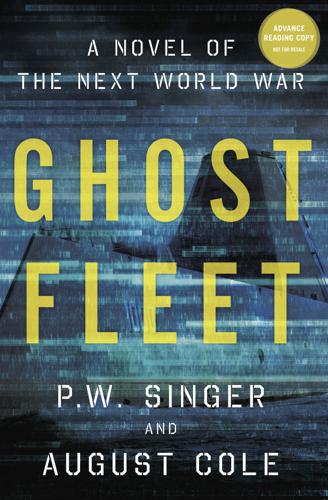
Ghost Fleet: A Novel of the Next World War
by
P. W. Singer
and
August Cole
Published 28 Jun 2015
q=node/135. 257 the lobster made a final sprint: Joseph Ayers, “Biomimetic Underwater Robot Program,” Northeastern Marine Science Center, accessed August 23, 2014, http://www.neurotechnology.neu.edu/. 258 suppressed HK 416 rifles: “HK416 A5,” Heckler and Koch, accessed August 17, 2014, http://www.heckler-koch.com/en/products/military/assault-rifles/hk416-a5/hk416-a5-11/overview.html. 258 swim to shore without oxygen tanks: “110 Predictions for the Next 110 Years,” Popular Mechanics, December 10, 2012, accessed August 23, 2014, http://www.popularmechanics.com/technology/engineering/news/110-predictions-for-the-next-110-years. 259 the Tallyho had originally been: “Spaceships: Virgin Galactic’s Vehicles,” Virgin Galactic, accessed August 23, 2014, http://www.virgingalactic.com/overview/spaceships; fictional spaceship. 260 Harry Winston in London’s Mayfair: “Harry Winston,” Bond Street Association, accessed August 23, 2014, http://www.bondstreet.co.uk/shop/harry-winston/. 260 the image had stuck with Sir Aeric: Thom Patterson, “Overheard on CNN: New Shuttle Needs Space Plane ‘Coolness,’ ” CNN.com, June 8, 2012, accessed March 18, 2014, http://www.cnn.com/2012/06/08/us/space-shuttle-overheard-on-cnn/index.html?
…
It was his first time in space, and he was enjoying it far more than his time in goal in the match with Leeds, heretofore the peak of his pleasure-rich existence as a tycoon. Zero gravity was remarkable. His body, always a source of secret disappointment, was no burden to him here. The Tallyho had originally been called the Virgin Galactic 3, a space plane designed to take off like a conventional aircraft and then blast into orbit. Cavendish had bought it for a song after the original owner had gone missing in a balloon accident. It was partly out of admiration for the man and his inspirational lifestyle, and partly because it was a good deal he couldn’t resist.

Falter: Has the Human Game Begun to Play Itself Out?
by
Bill McKibben
Published 15 Apr 2019
President Trump has proposed zeroing out the budget for the International Space Station, meaning that much of America’s reach into space will need to be funded by the band of tech billionaires who have seized the opportunity. On this day, it was Musk’s company SpaceX, but the flare of rocket engines also illuminated the vast hangar of Jeff Bezos’s Blue Origin project. There are others: the late Paul Allen, with his six-engine space plane; Richard Branson, already taking reservations for a Virgin Galactic spacecraft that will carry passengers and satellites into space. It beats trying to build the biggest yacht (though Allen, whose 414-foot Octopus has two helipads and a Jet Ski dock, may have held that title, too). Indeed, there’s something earnest and boyish about the whole spacefaring effort, something more likeable than busting unions back home on earth.
…
Chamber of Commerce U.S. Congress U.S. Geological Survey U.S. Pacific Command U.S. Senate U.S. Supreme Court Unity Biotechnology Urban, Tim USA Today Utah utilities Vanity Fair vapor pressure deficit Vassar, Michael Venezuela Venice Verity, William Vermont Vietnam Vinci, Leonardo da Virgin Galactic Virtue of Selfishness, The (Rand) Vodafone volcanoes voting rights Walker, Scott Wall Street Journal Walton family Washington Post water Watson, James Wealth of Nations (Smith) welfare West, Michael wet-bulb temperature wheat Whippman, Ruth White, Curtis Whitehead, Emily white supremacy wilderness, protected wildlife Wilkinson, Richard Williams, Jerry Williams, Ted wind power Wired Wisconsin Wohlforth, Charles Wojcicki, Anne Wojcicki, Stanley Wojcicki, Susan women’s rights Woods, Darren World Bank World Happiness Report World Meteorological Organization World Petroleum Congress (Beijing, 1997) World War II Worster, Donald Wozniak, Steve Y Combinator Yellowstone Yosemite Valley Youtube Yudkowsky, Eliezer Zhang, Feng Zinke, Ryan Zuckerberg, Mark ALSO BY BILL McKIBBEN Radio Free Vermont Oil and Honey The Global Warming Reader Eaarth American Earth The Bill McKibben Reader Fight Global Warming Now Deep Economy The Comforting Whirlwind Wandering Home Enough Long Distance Hundred Dollar Holiday Maybe One Hope, Human and Wild The Age of Missing Information The End of Nature ABOUT THE AUTHOR BILL MCKIBBEN is a founder of the environmental organization 350.org and was among the early advocates for action on global warming.
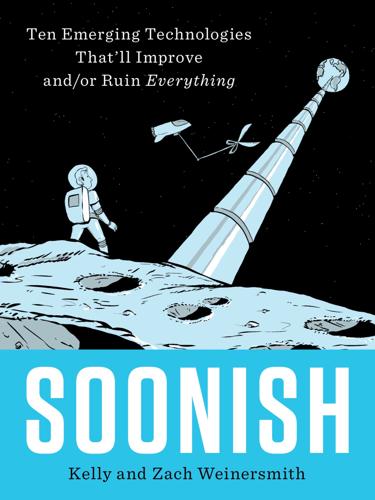
Soonish: Ten Emerging Technologies That'll Improve And/or Ruin Everything
by
Kelly Weinersmith
and
Zach Weinersmith
Published 16 Oct 2017
We mention it mostly because it’s the first idea most people have when they think about space launch alternatives. Despite being an idea we’d really, really like to be good, it’s solving the wrong problem. You need speed, not altitude. The aircraft-launched rocket is a bit more interesting, and has already been employed by Virgin Galactic and others to reach space. Basically, you get a gigantic plane (or, in one proposal, the equivalent of two 747s strapped together) and you tie your rocket to the bottom or top. You get up as fast and high as you can go and launch the rocket. The idea is that by starting out with some speed and altitude, you can save some propellant.
…
Commercial Space Launch Competitiveness Act (2015), 64 Utah Array, 295–96, 298, 312 van Pelt, Michel, 27, 37, 39, 40 vasculature, 262 Velvet Glove (Canadian missile program), 45 Venter, J. Craig, 214–15 Ventura, Jonathan, 176–77 Vermont, University of, 247 Vietnam War, 99 Virgin Galactic, 30 “virtual mirror interface,” 177 virtual reality (VR), 165, 168–69, 182 headsets for, 168, 169 motion sickness in, 168 viruses, 212–13 Vishik, Inna, 328 vision, restoring of, 306–7 vomeronasal organs, 187 Wadsworth Center, 313 Wagner, Daniel, 250, 251 Wang, Caddie, 269 warfare, 181 Washington University, 303 water, 53, 60, 81, 208–9 water memory, 5 Weaver, Sigourney, 83 weightlessness, 42, 43 Weightless Rendezvous And Net Grapple to Limit Excess Rotation (WRANGLER) System, 63 Wellerstein, Alex, 83n, 92 Werfel, Justin, 150–51 Whedon, Joss, 78n Whegs, 151 White, David, 188, 189 white blood cells, 238, 242 White House, 96 Who Gets What—And Why (Roth), 276 Wikipedia, 6n, 319 Wilder, Gene, 328n Wilderness of Mirrors (Grant), 46 Wilson, Taylor, 80 Winfield, Alan, 115n, 120n WinSun, 146 Wolverine, 83 wolves, 191, 224 wood joints, 143–44 woodworking, 142–44 workplace safety, 309 World Health Organization, 198 World War II, 135 xenotransplantation, 206–7 Yang, Luhan, 207 yeast, 197, 207 Yellowstone National Park, 224 York, University of, 91 York University, Augmented Reality Lab at, 173, 177–78 YouTube, 141 Yuri (unit of specific strength), 35 Zhang, Feng, 214 Zimov, Sergey, 224 Z machine, 85, 88 Zoloft, 180 Zurich, 152 What’s next on your reading list?
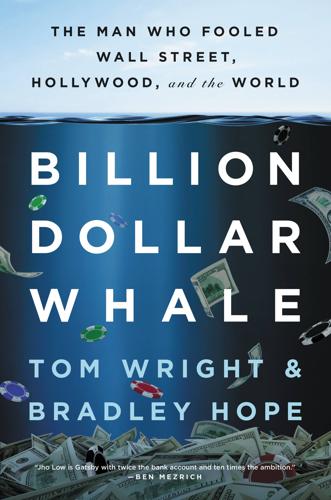
Billion Dollar Whale: The Man Who Fooled Wall Street, Hollywood, and the World
by
Tom Wright
and
Bradley Hope
Published 17 Sep 2018
The IPIC fund’s managing director, a wealthy Arab businessman named Khadem Al Qubaisi, had a reputation among financiers who did business with him for demanding kickbacks from deals. In the wake of the financial crisis, IPIC had been snapping up stakes in Western companies—Barclays Bank, Daimler-Benz, Virgin Galactic—and Al Qubaisi had become a powerful figure in the emirate. Low wanted in on the deal, and he got to know Tchenguiz through a wealth adviser they both knew. At first Tchenguiz did not consider Low a serious investor. Who had heard of Wynton, after all? But then, during discussions over the deal for Claridge’s, Low provided a letter from 1MDB stating it would provide up to 1 billion pounds in financing for the acquisition.
…
IPIC had been founded in 1984 to invest in oil-related companies, but with Al Qubaisi at its helm, the fund and its subsidiary, Aabar Investments, had engaged in a spending spree, most famously its bailout alongside Qatar of Barclays in 2008, which saved the bank from a government takeover, but also the acquisitions of minority stakes in Daimler-Benz, UniCredit, Virgin Galactic, and other companies—all of them major deals. The boundaries between IPIC, a state fund, and the sheikh’s personal business empire were not always sharply drawn. In the case of the Barclays acquisition, for instance, British regulators believed Sheikh Mansour was putting in the money, when in fact the funds came from IPIC.

Elon Musk
by
Walter Isaacson
Published 11 Sep 2023
So in the summer of 2020, amid his tussles with Musk, he announced that he and his brother Mark were going to fly to the edge of space (though not into orbit) on an eleven-minute hop on a Blue Origin rocket. He would be the first billionaire in space. Sir Richard Branson, the smiley British billionaire who founded Virgin Airlines and Virgin Music, also had that dream. He had created his own space-flight company, Virgin Galactic, with a business model largely dependent on taking wealthy experience-seekers on joyrides. His marketing genius included using himself as the face and spirit of the company. He knew that there was no better way to promote his space-tourism business, and have a boatload of fun himself (which he very much liked to do), than to go up on one of his rockets.
…
Musk was barefoot and wearing a black T-shirt emblazoned “Five Decades of Apollo” that celebrated the fiftieth anniversary of the moon mission. They sat down and talked for a couple of hours. “He doesn’t seem to sleep much,” Branson says. The flight, on a suborbital winged rocket that was lifted to its launch altitude on a cargo jet, went well. Branson and five Virgin Galactic employees reached an altitude of 53.6 miles, setting off a small dispute about whether they had reached “space,” which is defined by NASA as beginning at fifty miles above Earth but by other nations as what is known as the Kármán line, at sixty-two miles up. Bezos’s mission nine days later also succeeded.
…
Founder of Amazon. Jared Birchall. Musk’s personal business manager. Roelof Botha. Former CFO of PayPal, partner at Sequoia Capital. Claire Boucher (Grimes). Performance artist, mother of three of Musk’s children. Nellie Bowles. Journalist at Common Sense, wife of Bari Weiss. Richard Branson. Founder of Virgin Galactic. Elissa Butterfield. Former assistant to Musk. Tim Buzza. Former VP of launch, SpaceX. Jason Calacanis. Entrepreneur, Musk friend. Gage Coffin. Former manufacturing engineer, Tesla. Esther Crawford. Former director of product management, Twitter. Larry David. Comedian and writer. Steve Davis.

Vertical: The City From Satellites to Bunkers
by
Stephen Graham
Published 8 Nov 2016
One unprecedented shift that will create further challenges involves the apparently inevitable introduction of suborbital space travel systems in the near to medium term. These systems will allow the world’s überwealthy to tie together their distant properties with ever greater speed and ease. While the introduction of regular space tourism flights for the super-rich has been delayed by the crash of the Virgin Galactic in October 2014, regular low-orbit travel is likely to emerge in the medium term – for those who can afford it. With the prospect of travel times between London and Sydney reduced to 2.2 hours, ‘luxury’ real estate agents are already foaming at the mouth. Such systems would probably compound the real estate pull of major cities like London and New York, which would suddenly become more accessible to a much wider population of ultra-wealthy individuals within an acceptable travel time.
…
Dan, 224, 225n16 Smithsonian Air and Space Museum, 60–1 Smithsonian Institution, 59–60 Smudge Studio, 286–7 Solis, Julia, 364 Solman, Dario, 25 Somalia, 73 South Africa, 382, 384–6 South Bank, 203 South China Sea, 304 South Dakota, 344 Southwark, 203 Space Needle, 138 ‘Spaceship Earth’ (Fuller), 24 Spain, 140, 316 Spectacle Island, 288 Spoor, Richard, 386 Spratly Archipelago, 304 Squibb Building, 155 Sri Lanka, 46 Stahl, Roger, 47 Stallybrass, Peter, 325 ‘Star Wars’ Strategic Defense Initiative, 41 Staten Island, 310, 311 Steadman, Ian, 204 Stern, Robert, 196 Steyerl, Hito, 2n2, 10–2 St Louis, Missouri, 185 Strategic Data Services group, 355 Stroli, Dani, 87 Sudjic, Deyan, 160–1 Sugarloaf Mountain, 126 Sullivan, Louis, 154 Sunni, 46–7 Sweden, 287–8 Switzerland, 355, 358n56 Sydney, Australia, 177, 218 Syria, xiv, 46, 169 Taipei Financial Center, 141 Taiwan, 141 Taliban, 111, 172, 351 Tampines, 298 Tarhunah, 346 Tatton-Brown, William and Aileen, 222–4 ‘Taurus’, 36 TauTona, 382, 385 Taylor-Foster, James, 160 Techwood project, 185 Teich, Andy, 110 Tel Rumeida, 295–6 Tenochtitlan, 285 Terminal High Altitude Area Defense (THAAD) system, xiv Terranova, Charissa, 227 Teufelsberg, 281, 282, 283, 288 Thailand, 231, 257–8, 301 Thames, River, 97, 167, 288 Things to Come (film), 138 13th Arrondissement, 159–60 ThyssenKrupp AG, 131 Tijuana, 349 Titan II Missile, 358 Tokyo, 59, 94, 130, 140, 192, 221, 296–7 Tora Bora, 342 Toronto, Canada, 146, 175, 177–8, 191n39, 194n48, 318, 378–9 Torre David, 120–2, 127 Toshiba, 141 Toth, Jennifer, 352–3 Tower Hamlets, 212 Tower of Babel, 174–5 Transparent Earth, 344 Treichler, Michael, 21 Trellick Tower, 205 Trenchard, Hugh, 66, 66n40 Tripoli, 61 Turkey, 276, 316 Twin Towers, 310, 311 UE movement, 362n65 Uganda, 378 UK, 57, 225, 259, 272, 288, 314. see also specific locations Ulan Bator, 334 Um Lugar ao Sol (‘A Place in the Sun’) (documentary), 214 Underneath New York (Granick), 278 Under the Dome (film), 255 Underworld (DeLilllo), 356 UN Human Rights Council, 75n27 UN Institute for Disarmament Research (UNIDIR), 41 Union Carbide, 257 United Arab Emirates (UAE), xiii, 160, 164, 270–2, 374, 377, 380n43 United Nations, 346 United States, 34, 57, 66n40, 83, 143, 229–30, 258–9, 262–3, 274, 290. see also specific locations United States Space Command, 39 United Way, 146 ‘Universal Corrective Map of the World’ (McArthur), 20–1 Unmanned Aerial Vehicle (Shadow UAV), 69 Up on the Roof (MacLean), 215 Urals, 343 Urban Theory Lab (Harvard University), 8 US Air Force, 56, 62–3, 69, 71, 341–2 US–Canada border, 349, 351 US Congress, 351 US Department of Defense, 342 US Department of Homeland Security, 84, 85, 87, 89, 363 US Department of Justice, 87, 90 US GeoEye-1, 31 US Geological Survey, 379 US–Mexico border, 84, 85, 351, 363 US National Reconnaissance Office (NRO), 33 US National Security Agency, 281–2 US Navy, 343 US RAND, 31 Utopia in Trial (Coleman), 184 Vaal Reefs Mine, 384 Vale, 375 Valjean, Jean, 327–8 Van Alen, William, 155 Vancouver, 175, 177, 192–5, 201, 243, 318, 380 Vanity Fair, 177 van Vuuren, Detlef, 262 Varnelis, Kazys, 158 Veltmeyer, Henry, 367 Vendrame, Giuditta, 257, 269 Venezuela, 119–22 Venice, 370 Viet Cong, 274, 351 Vietnam, 61, 274, 298 Vietnam War, 114 Ville Contemporaine, 181 Ville Radieuse (‘Radiant City’), 64 Virgil, 19 Virgin Galactic, 218 Virginia, 289 Virilio, Paul, 3n4, 30–1, 156, 341 Volic, Ademir, 314 Wahabist ideology, 172 Waldorf Astoria, 143, 155 Walker, A. Stewart, 155 Walker, Ralph, 155 ‘Walkie Talkie’, 164–6 Wallasea, 288 Wallsten, Björn, 287–8 Wal-Mart, 158 Walt Disney Corporation, 256 Wandsworth, 213–4 Ward, D.
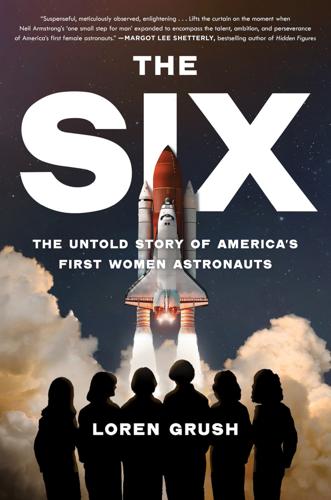
The Six: The Untold Story of America's First Women Astronauts
by
Loren Grush
Published 11 Sep 2023
Originally, human space exploration was squarely the domain of NASA and government agencies, but now, as the commercial space industry blossoms and strengthens, there are more opportunities for women and people of color to find their way to space without federal approval. And an astronaut’s résumé need no longer include any piloting or science experience at all. Companies like Blue Origin and Virgin Galactic are promising quick trips to space for customers who can pay their way. And they’ve even allowed for a few historical corrections. Wally Funk, one of the thirteen women who passed Randy Lovelace’s tests back in 1961, finally got a chance to see space in 2021, when she flew on board one of Blue Origin’s rockets to the edge of space and back.
…
Ride Elementary School, 231 Sally Ride Science, 393 Salyut 7 space station, 275 satellites: communications, see communications satellites deployment failures of, 286–87, 290 deployment of, 223–24, 258, 278–79, 288, 290, 299, 334, 358 Earth-observing, 278–79 insurance on, 290–91 malfunction of, 291 refueling of, 271–75 relay, 280–81 rendezvousing with, 317, 321–22 retrieval of, 223–24, 287, 290–96, 300–303, 327, 335 spy, 141 weather and climate observed by, 384 see also specific satellites Saturn V rockets, 4, 72, 121, 154 Saudi Arabia: Shannon’s visit to, 337–42 Shuttle flight participant from, 328–40 Savitskaya, Svetlana, 275, 284 Sally’s meeting with, 233–35 as second woman to fly in space, 202–3 science fiction, 19 Scobee, Dick, 135, 170, 199, 347, 354, 355, 356, 357, 378 Scobee Rodgers, June, 347 in aftermath of Challenger disaster, 378 in living memorial for Challenger crew, 389 Scripps Institution of Oceanography (San Diego), 9, 266–67 scuba diving, scuba certification, 9, 138, 256, 259 Seddon, Clayton, 12–13 Seddon, Edward, 13, 14, 200, 308 Seddon, Margaret “Rhea,” 8, 9, 30, 89, 92, 166, 167, 169, 171, 183, 328, 332, 334, 343, 398 ABC interview of, 103–4 in astronaut selection program, 85, 90–91, 95–96 in astronaut training, 120, 124, 125, 126, 128, 129, 131, 133, 138 biographical facts and accomplishments of, x in Challenger disaster aftermath, 362–63, 364, 380 Challenger disaster observed by, 359–60 in childbirth, 199–201 Columbia shuttle flight launch role of, 154 early years of, 12–14 education of, 14 evolving career interest of, 11–16 later career of, 390–91 on makeup use, 206 marriage of Hoot Gibson and, 159–61, 180, 195–96, 199–201, 307–9, 313, 324 media attention on, 180–81 medical career of, 306 motherhood role of, 195–96, 306–8, 313 NASA application filed by, 81 pregnancy of, 183–86 selected for Shuttle program, 101, 106, 108, 110, 112, 114, 116–17 Shuttle mission of, 305–24, 326–27, 347 Shuttle program assignment of, 152–53 in Syncom repair operation, 317–24 Selleck, Tom, 240 Senate, US, Appropriations Committee of, 310 Sesame Street (TV show), 233 sewing, 318, 324 sexism, 12, 65, 71–73, 91, 109, 110, 112, 152, 162–69, 166, 172, 180, 181, 193, 197, 211–12, 213, 232, 261, 348, 382 in astronaut interview questions, 95–96 feminist rejection of, 76 Judy as target of, 168–69 in media coverage, 115–16, 156–57 in NASA, 72–73 Shanghai, China, 17–19 Shell Oil Company, 119 Shepard, Alan, 10, 21, 27–28, 298 Sheraton Kings Inn (Houston), 89 Sherr, Lynn, 181, 221 shorts, Judy’s appearance in, 260–61 Shuttle Avionics Integration Laboratory (SAIL), 151–52 Shuttle chasing, 160, 163 Shuttle Pallet Satellite (SPAS-01), 186–87 Shuttle simulators, 203–4 silica tiles, 146–47 Simulation Supervisors (Sim Sups), 148–49, 203–4 simulators, simulations, 148–49, 198, 244–45, 265–66, 293, 294, 310, 349, 361 Skylab, 75, 121 Slayton, Deke, 80 sleep deprivation, 167 Smith, Mike, 347, 355, 357, 381 socks, in urine collection, 260 software, for Space Shuttle, 150 solar array, deployment of, 258 solar eclipse, 169–70 Solar Max satellite, retrieval of, 291–92 solar panels, 243–44, 279 solar system, robotic exploration of, 384 solid rocket boosters, 143–48, 373, 382 in Challenger disaster, 370–71 design revamping of, 388 Sony Walkman, 225 sound barrier, breaking of, 65, 163 Soviet Union, 13, 61, 275–76 space program of, 20, 28, 57, 71–73, 75, 141, 202, 275–76 US relations with, 67, 68, 75, 233–34 Soyuz capsule, 202 Soyuz rocket, 275 Space Adaptation Syndrome (SAS), 203, 222, 254, 299–300, 313–14 Space Age, onset of, 13 Space and Naval Medicine Congress, 64–65 Spacelab, 308, 390 Space Race, 13, 57, 67, 68, 71–73, 141, 202, 275–76 Space Shuttle, 2, 76 abort potential for, 147–48 cockpit of, 5 components of, 133 design features of, 142–45 development of, 38, 74–75 disaster preparedness for, 154–55 exterior of, 146–47 inaugural flight of, 98, 157–58 purpose of, 78 as reusable, 144–45 risks of, 102 software for, 150 suits for, 266 testing and preparation of, 101–2 see also specific missions Space Shuttle program, 16, 78, 122, 183 application and selection procedures for, 74–99 astronaut finalists selected for, 100–117 crew selection for, 186 implementation of, 140–58 NASA’s change of direction after, 383–85 non-astronauts in, 328, 348 PR for, 134–36 recruitment campaign for, 78–81 successes of, 343 women included in, 25, 80, 388 see also specific missions space station, proposal for, 141 space suits, see astronaut attire Space Task Group, 140 space travel: effect on human body of, 62 fitness for, 62 suitability of women for, 56–73 spacewalks, 259, 309, 320–23, 395–96 all-female, 395 Kathy selected for, 265–66, 268–69, 281–84 limitations on, 151 records for, 284 refueling in, 272 in satellite retrieval, 300–303 simulations, 265–66 training for, 267–68, 273–74 unplanned, 317–23 untethered, 285–86, 292, 301 urination in, 265 SpaceX, 396 SPARTAN (Shuttle Pointed Autonomous Research Tool for Astronomy), 307, 317, 334–35 SPAS satellites, 292, 307, 334 demonstration of, 223–24, 235 Special Advisory Committee on Life Sciences (NASA), 61–62 speed of sound, 357 spreadsheet, for astronaut choice, 188–89 Sputnik, 13, 15, 57, 334 spy satellites, 141 stalking, 242–43 Stanford University, 39, 43–44, 45, 384, 392 Institute for Plasma Research at, 82 Star Trek (TV show), 74, 80, 106 Steinem, Gloria, 218, 235, 240 STEM, 389 Stinger, 293, 301–2 STS (Space Transportation System), see Space Shuttle program Sullivan, Barbara, 35, 89 Sullivan, Donald, 34–35 Sullivan, Grant, 35, 37, 267 Sullivan, Kathy, 9, 89, 115, 175, 206, 263, 265–66, 268–69, 281–84, 343 in ABC interview, 155–56 academic credentials of, 35–38, 88 in astronaut selection program, 88–89, 90, 93, 95 in astronaut training, 119, 124, 133 aviation height record set by, 264 biographical facts and accomplishments of, ix–x in Challenger disaster aftermath, 358–59, 363–64, 368, 377–78 Columbia flight launch role of, 155–56 early years of, 284 evolving career interest of, 33–38 as first American woman to walk in space, 275–77 gender bias encountered by, 163–64 later career of, 391–92 media attention on, 180–81, 277 NASA application filed by, 82–83 public appearance tour of, 267–68 in response to Sally’s selection, 195 Sally in mission with, 268 Shuttle missions of, 101, 105–6, 112, 152, 268–84 spacewalk as goal of, 265–66 spacewalk of, 268–69, 281–84 as target of teasing, 167–68 as third American woman to fly in space, 309 Superman stunt, 174–75, 177 superstition, 278 “SWAT Team,” 319 Syncom satellites, 255, 257, 290, 327–28 IV-3, attempted in-orbit repair of, 315–24 T-38 jets, 159, 160, 166, 167, 184 astronaut training in, 127–32 solar eclipse viewed from, 169–70 tampons, 206 Tarzan (film), 239 TDRS (Tee-Druss) communications satellite, 243, 311, 327, 351 teachers, in search for citizen astronauts, 329 Teague Auditorium, 211 astronauts formally introduced at, 111–12 teasing, 167–68, 172 Teets, Richard, 38 teleprinter, 318–20 Telstar satellite, 334 Temple Israel, 367–68 tennis, 45, 46, 344 Sally Ride’s accomplishments in, 39–43, 94, 212 Tereshkova, Valentina, 71–73, 75, 202 terminators, 284 test pilots, 58–59, 62, 68, 69, 135 Thagard, Norm, 203, 212, 222, 230 therapy, 232–33 Thiokol, see Morton Thiokol Thirty-Five New Guys (TFNGs), 123–24, 129, 145, 148 “tilt-table test,” 63 time-speed-distance (TSD) sports car rallies, 48 Tingle, Anna, see Fisher, Anna Lee Tingle, Elfriede, 29, 296–98 Tingle, Riley, 28–29 Today Show, 110, 210, 290 Anna’s interview on, 285–87 toilets, 137–38, 218, 254, 260, 265 Tonight Show, 214, 348 TOPGUN pilots, 131 trauma training, 154 trick questions, in astronaut interviews, 97–98 Trudeau, Garry, 314 Truhill, Jerri Sloan, 65 Tyson, Molly, 38–39, 102, 216–17, 232 Sally Ride’s relationship with, 44–47 urination, 258–60 advanced technology for, 264–65 in weightless conditions, 137–38 urine bags, 259 Usachov, Yuri, 392 Vance Air Force Base, 126–27, 387 Vandenberg Air Force Base, 238 Vanderbilt Medical Group, 391 Vehicle Assembly Building (VAB), 154 Vietnam War, 14, 97, 117, 130 Virgin Galactic, 396 Voas, Robert, 72 volcanoes, 33 volleyball, 38–39, 44 Vomit Comet (KC-135), 136–38, 152–53, 180 vomiting, 203 Von Braun, Wernher, 72 Vostok-K rocket, 71–72 Walker, Charlie, 244, 247, 254, 302, 312, 314, 327 Walker, Dave, 288, 289, 294 Washington Times, Challenger disaster covered in, 372 Waste Collection System, 137 wastewater disposal, 258–60 Watergate scandal, 77–78 water survival training, 125–26 Wayfarers Chapel (Rancho Palos Verdes), 86 WB-57F aircraft, 152, 263 Webb, James, 66 Webber, Mary Ellen, 398 Weightless Environment Training Facility (WETF), 151, 272–73 weightlessness, 129, 136–37, 230, 282 body weight and, 336–37 children’s toys in, 323 fluids in, 347 medical experiments on, 314 physical response to, 299–300 Weight Watchers, 180 Wells, Joseph Oscar, 17, 22 Wells, Myrtle, 17–18, 19 Westar 6 satellite, 286, 291, 302–3, 316 Wheelon, Albert “Bud,” 375 White, Ed, 139 White Sands Test Facility, 155, 274 Whitson, Peggy, as first commander of International Space Station, 394 Williams, Don, 164, 307, 321, 322 Williams & Connolly, 389 Wilson, Stephanie, 398 Wind River Range, 268 Woman in Space Program, 65, 66 women: “the bends” in, 269–70 educational discrimination against, 30, 42, 44, 48–49, 50 evolving rights for, 76 job discrimination against, 16–17, 21–25, 29, 53–54, 59–61, 69–70, 161–62, 185, 213–14 military discrimination against, 58–59, 64 in opposition to women astronauts, 163–64 Saudi Arabian treatment of, 331–32, 337–42 size constraints for, 128 in Soviet space program, 71–73 traditional roles of, 24, 59, 69–70, 71–73, 76, 162 Women Airforce Service Pilots (WASPs), 58, 65 women astronauts: in competition to be first American woman in space, 178–91 excluded from NASA astronaut corps, 56–73 expanded corps of, 226–27 Huntoon as advisor to, 164–66 media focus on, 91, 125–26, 166 NASA’s evolving acceptance of, 32, 37–38, 55, 56–57, 75–76, 79, 108–9, 114, 168–69, 387 personal compatibility among, 166 public appearances of, 165–66 racial diversity in, 385 small stature of, 150–51 total parity still sought by, 394–95 urination issues for, 265 women opposed to, 163–64 see also specific individuals women pilots, 58, 60, 62, 63, 67, 68 Women’s Movement, 108, 241 World War II, 18, 29, 58, 61, 65 USO tours in, 232 Wright, Frank Lloyd, 86 Wright Field, 64 Xerox Corporation, 87, 107 X-rays, 335 Yeager, Chuck, 163, 375 in Rogers Commission investigation, 369 Young, John, 95, 122, 145, 148, 170, 175, 176, 184–86 Zoo Crew, 239–41, 253, 259 Scribner An Imprint of Simon & Schuster, Inc. 1230 Avenue of the Americas New York, NY 10020 www.SimonandSchuster.com Copyright © 2023 by Loren Grush All rights reserved, including the right to reproduce this book or portions thereof in any form whatsoever.
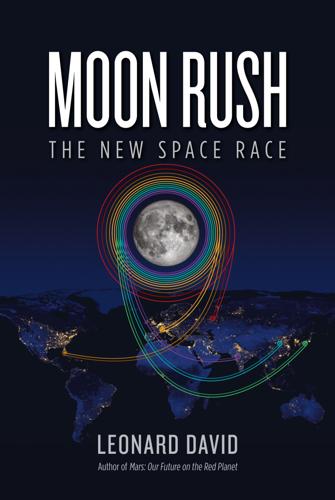
Moon Rush: The New Space Race
by
Leonard David
Published 6 May 2019
It’s easy to theorize what form the legal setting will take but quite another to see what the pragmatic needs will reveal themselves to be.” * * * THE APOLLO PROGRAM spawned technology revolutions in automation, computerization, and communications, and those improvements have led to today’s private space organizations. Some call SpaceX, Virgin Galactic, Blue Origin, Bigelow Aerospace, and many others less well known the “children of Apollo.” This new face of space is sustainable as long as these organizations generate profit, can continue to engender enthusiasm, and are willing to continue funding private-sector space. This new money can also fill a void in periods of time when the government gets whipsawed in its budgetary cycles and overtaken by politics and the competing needs of the nation.

Southwest USA Travel Guide
by
Lonely Planet
And we’re not just talking about the mineral-rich springs on which it was built and named (T or C was known as Hot Springs until 1950, when the town officially changed its name to match a popular radio game show in an effort to increase tourism). T or C’s latest publicity stunt? It’s about to become the world’s first commercial launch pad to outer space. Yup, you heard us, Richard Branson’s Virgin Galactic is set to start blasting tourists off the planet from the nearbyspaceport sometime in the near future. Space travel aside, T or C has also gained a reputation as the place for arty-holistic types to move, drop out and start a different journey – the geothermal energy here is supposedly comparable to Sedona’s.
…
SPACEPORT AMERICA: THE ULTIMATE SIDE TRIP White Sands earned its nickname ‘Birthplace of the Race to Space’ in 1947, when humanity, courtesy of NASA’s Werner von Braun, successfully hurled its first missile out past the stratosphere from among those rolling, pure white dunes. Today, thanks to Virgin Galactic CEO Sir Richard Branson, former Governor Bill Richardson and lots of other pie-in-the-sky visionaries (not to mention state taxpayers who may foot most of the projected $225 million bill), the world’s first private spaceport has opened right next door. Space tourism may well involve a simple 62-mile (straight up) add-on to your New Mexico vacation package.
…
Lake Mead might swell by 40ft. »Number of pueblos in New Mexico: 19 »Grand Canyon’s widest chasm: 18 miles »Percentage of land that is public in Utah: 70% »Miles of railroad track on Durango to Silverton line: 45 On the Bright Side NASA may have wrapped up the shuttle program, but entrepreneurs like Richard Branson are looking to the stars – and taking action. Branson’s Virgin Galactic is on course to send civilian ‘astronauts’ into space from the new Spaceport in New Mexico in the next few years. Tickets are $200,000, with a $20,000 deposit; about 430 people have signed up for a flight. The hottest recorded temperature in Arizona was 128°F (53.5°C) at Lake Havasu City. Not all advancements require a spaceport.
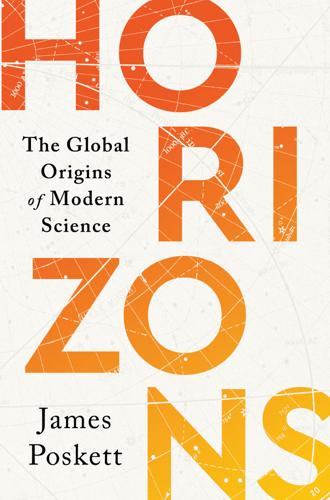
Horizons: The Global Origins of Modern Science
by
James Poskett
Published 22 Mar 2022
(Manchester: Manchester University Press, 2017) for a general account of both the geopolitics and the economics. 5Piketty, Capital in the Twenty-First Century, 31 and 412. 6‘Notice of the State Council: New Generation of Artificial Intelligence Development Plan’, Foundation for Law and International Affairs, accessed 12 December 2020, https://flia.org/wp-content/uploads/2017/07/A-New-Generation-of-Artificial-Intelligence-Development-Plan-1.pdf (translation by Flora Sapio, Weiming Chen, and Adrian Lo), ‘Home’, Beijing Academy of Artificial Intelligence, accessed 13 December 2020, https://www.baai.ac.cn/en, and Sarah O’Meara, ‘China’s Ambitious Quest to Lead the World in AI by 2030’, Nature 572 (2019). 7‘New Generation of Artificial Intelligence Development Plan’, and Kai-Fu Lee, AI Superpowers: China, Silicon Valley, and the New World Order (New York: Houghton Mifflin Harcourt, 2018), 227. 8Huiying Liang et al., ‘Evaluation and Accurate Diagnoses of Pediatric Diseases Using Artificial Intelligence’, Nature Medicine 25 (2019), and Tanveer Syeda-Mahmood, ‘IBM AI Algorithms Can Read Chest X-Rays at Resident Radiologist Levels’, IBM Research Blog, accessed 16 December 2020, https://www.ibm.com/blogs/research/2020/11/ai-x-rays-for-radiologists/. 9Lee, AI Superpowers, 14–17, and Drew Harwell and Eva Dou, ‘Huawei Tested AI Software That Could Recognize Uighur Minorities and Alert Police, Report Says’, Washington Post, accessed 16 December 2020, https://www.washingtonpost.com/technology/2020/12/08/huawei-tested-ai-software-that-could-recognize-uighur-minorities-alert-police-report-says/. 10Karen Hao, ‘The Future of AI Research is in Africa’, MIT Technology Review, accessed 16 December 2020, https://www.technologyreview.com/2019/06/21/134820/ai-africa-machine-learning-ibm-google/, and ‘Moustapha Cissé’, African Institute for Mathematical Sciences, accessed 13 December 2020, https://nexteinstein.org/person/moustapha-cisse/. 11Shan Jie, ‘China Exports Facial ID Technology to Zimbabwe’, Global Times, accessed 14 December 2020, https://www.globaltimes.cn/content/1097747.shtml, and Amy Hawkins, ‘Beijing’s Big Brother Tech Needs African Faces’, Foreign Policy, accessed 14 December 2020, https://foreignpolicy.com/2018/07/24/beijings-big-brother-tech-needs-african-faces/. 12Elizabeth Gibney, ‘Israel–Arab Peace Accord Fuels Hope for Surge in Scientific Research’, Nature 585 (2020). 13Eliran Rubin, ‘Tiny IDF Unit is Brains behind Israel Army Artificial Intelligence’, Haaretz, accessed 12 December 2020, https://www.haaretz.com/israel-news/tiny-idf-unit-is-brains-behind-israeli-army-artificial-intelligence-1.5442911, and Jon Gambrell, ‘Virus Projects Renew Questions about UAE’s Mass Surveillance’, Washington Post, accessed 12 December 2020, https://www.washingtonpost.com/world/the_americas/virus-projects-renew-questions-about-uaes-mass-surveillance/2020/07/09/4c9a0f42-c1ab-11ea-8908-68a2b9eae9e0_story.html. 14Agence France-Presse, ‘UAE Successfully Launches Hope Probe’, The Guardian, accessed 20 November 2020, http://www.theguardian.com/science/2020/jul/20/uae-mission-mars-al-amal-hope-space, and Elizabeth Gibney, ‘How a Small Arab Nation Built a Mars Mission from Scratch in Six Years’, Nature, accessed 9 July 2020, https://www.nature.com/immersive/d41586-020-01862-z/index.html. 15Gibney, ‘How a Small Arab Nation’, and Sarwat Nasir, ‘UAE to Sign Agreement with Virgin Galactic for Spaceport in Al Ain Airport’, Khaleej Times, accessed 16 December 2020, https://www.khaleejtimes.com/technology/uae-to-sign-agreement-with-virgin-galactic-for-spaceport-in-al-ain-airport. 16‘UAE Successfully Launches Hope Probe’ and Jonathan Amos, ‘UAE Hope Mission Returns First Image of Mars’, BBC News, accessed 16 February 2021, https://www.bbc.co.uk/news/science-environment-56060890. 17Smriti Mallapaty, ‘How China is Planning to Go to Mars amid the Coronavirus Outbreak’, Nature 579 (2020), ‘China Becomes Second Nation to Plant Flag on the Moon’, BBC News, accessed 4 December 2020, https://www.bbc.com/news/world-asia-china-55192692, and Jonathan Amos, ‘China Mars Mission: Tianwen-1 Spacecraft Enters into Orbit’, BBC News, accessed 16 February 2021, https://www.bbc.co.uk/news/science-environment-56013041. 18Çağrı Mert Bakırcı-Taylor, ‘Turkey Creates Its First Space Agency’, Nature 566 (2019), Sanjeev Miglani and Krishna Das, ‘Modi Hails India as Military Space Power after Anti-Satellite Missile Test’, Reuters, accessed 16 December 2020, https://uk.reuters.com/article/us-india-satellite/modi-hails-india-as-military-space-power-after-anti-satellite-missile-test-idUKKCN1R80IA, and Umar Farooq, ‘The Second Drone Age: How Turkey Defied the U.S. and Became a Killer Drone Power’, The Intercept, accessed 16 February 2021, https://theintercept.com/2019/05/14/turkey-second-drone-age/. 19John Houghton, Geoffrey Jenkins, and J.

Buyology
by
Martin Lindstrom
Published 14 Jul 2008
Certain companies and products inspire wonder just by the scope of their vision. Consider how Google Maps, with its ability to scan the landscape from Maine to Mars, has lent the company an omnipotent, omnipresent grandeur, as if they now own the maps of the skies and even outer space. And thanks to the vision of larger-than-life CEO Richard Branson, Virgin Galactic’s latest grand ambition is, quite literally, to take us to the moon. What about the notion of evangelism—the power to reach out and secure new acolytes? When Google rolled out its Gmail service, it attracted followers in a devilishly shrewd way. By making the service available by invitation only, Gmail became almost like a virtual religion; when a friend invited you to join its ranks, you felt as though you’d been welcomed into a semi-exclusive, lifelong community (it was only when they’d secured an estimated 10 million users that Gmail opened its doors to mere laymen).

Bitcoin: The Future of Money?
by
Dominic Frisby
Published 1 Nov 2014
It may also have been an enormous fraud at MtGox – as has recently been suggested.46 It is not yet known for sure. The University of Nicosia in Cyprus began accepting bitcoins as payment for tuition – suggesting a connection between Cypriot bail-ins and Bitcoin’s price rise. Richard Branson’s Virgin Galactic followed suit, then the ecommerce site Shopify. December 2013 saw a heist at another online black market – Sheep Market Place. Another blow followed. China’s central bank banned financial institutions from using Bitcoin. The price dropped 20%. Baidu stopped accepting bitcoins the next day. Ten days later, China banned Bitcoin transactions altogether.
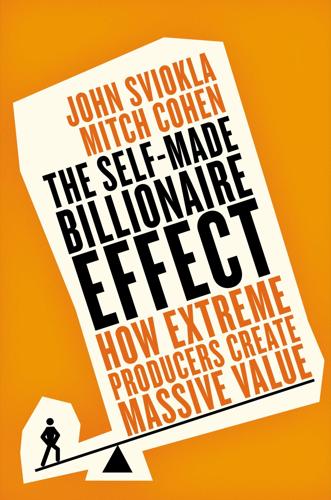
The Self-Made Billionaire Effect: How Extreme Producers Create Massive Value
by
John Sviokla
and
Mitch Cohen
Published 30 Dec 2014
His label signed iconic, controversial bands like the Sex Pistols, and his retail stores morphed into the Virgin Megastores. Branson also started expanding into areas beyond music, including the airline industry with the launch of Virgin Atlantic Airways in the early 1980s, trains (Virgin Trains) and telecommunications (Virgin Mobile) in the 1990s, and space tourism (Virgin Galactic) in 2004. Today, the Virgin Group consists of four hundred companies. Branson remains as chairman, while pursuing philanthropic efforts to combat global warming. Sergey Brin b. 1973, Russia Google, Inc. Born in Moscow, Sergey Brin immigrated to the United States with his parents at the age of six.

Aerotropolis
by
John D. Kasarda
and
Greg Lindsay
Published 2 Jan 2009
Just south of the runways will be the new CBD and Capital District, a forest of towers ringing the capitol of the UAE. To the west, on the way to the Guggenheim, is Yas Island, home to a Formula One track and the site of Ferrari World. Abu Dhabi has blown some of its oil wealth on a few trophies of its own—stakes in Virgin Galactic and the Ultimate Fighting Championship, the Chrysler Building, and Masdar, a “zerocarbon” solar-powered city in a country with the highest per capita carbon footprint on earth. Envisioned as a test bed for every type of renewable energy under the sun—picture solar cells powering personal monorails instead of cars—Masdar is a retort to the unsustainable sprawl of Dubai.
…
Once an alternative is found, enough “refineries” must be built to pump fifty-five billion gallons a year for less than the industry’s $61 billion fuel bill. Which is where Sir Richard Branson and a brewery filled with pond scum come in. Branson, Biofuels, and Balance Branson is the silver-maned billionaire who is that rarest of creatures: an ardent environmentalist who happens to own an airline—several, in fact, including the spaceships of Virgin Galactic. The Virgin Group chairman reconciles his split personality with earnest displays of penitence: “If you run a dirty business,” he has said, taking pains to lump himself in with the sinners, “you should pay for the privilege because you are doing damage.” Not long ago he was an apostate, clinging fast to his disbelief until Al Gore paid him a visit.

Choose Yourself!
by
James Altucher
Published 14 Sep 2013
He negotiated a route between Gatwick and Newark and he had a one-plane airline. Branson started with nothing and did it. He offered services that no other airline did (the thirteen airlines that told him he was crazy to compete with them have all since gone out of business). Then he begged and borrowed to buy another plane, and another. And now he has Virgin Galactic ready to send people into space. There’s no single path that works for everyone, no one easy way to structure things. Branson could’ve bought an existing airline. He could’ve bought some planes and bought some routes. He could’ve taken out a heavy loan. But each step of the way he tried to do it cheap and with an element of fun—and that’s how he always got the best deal and why he’s still in business now.

12 Bytes: How We Got Here. Where We Might Go Next
by
Jeanette Winterson
Published 15 Mar 2021
Mars is the favourite for now. Matt Damon on the red planet in The Martian (2015) offers us the favourite figure of a lonely hero against the odds. Elon Musk has said he wants to die on Mars. When he gets there, I shouldn’t think that dying will be his biggest challenge. Rich men LOVE their rockets. Richard Branson has Virgin Galactic. Jeff Bezos stepped down as CEO of Amazon in 2020 to concentrate on his personal space programme – Blue Origin. Techno-king Musk is saying he will privately transport folks to Mars by 2050 (he’s betting on bio-enhancements to keep him alive and healthy till then). Once there, his neo-liberal neo-Martians can pay back the cost of their passage by working for Musk (in the Musk Mines?).

Future Crimes: Everything Is Connected, Everyone Is Vulnerable and What We Can Do About It
by
Marc Goodman
Published 24 Feb 2015
Bitcoin acceptance is growing rapidly, and it is possible to use Bitcoins to buy cupcakes in San Francisco, cocktails in Manhattan, and a Subway sandwich in Allentown. They can also be used to purchase a new Tesla Model S, to pay your DIRECTV bill, to sign up with OkCupid, or even to book a ticket on Richard Branson’s upcoming Virgin Galactic space flight. Because Bitcoin can be spent online without the need for a bank account and no ID is required to buy and sell the crypto currency, it provides a convenient system for anonymous, or more precisely pseudonymous, transactions, where a user’s true name is hidden. Though Bitcoin, like all forms of money, can be used for both legal and illegal purposes, its encryption techniques and relative anonymity make it strongly attractive to criminals.
…
For man holds in his mortal hands the power to abolish all forms of human poverty and all forms of human life. JOHN F. KENNEDY Though the space shuttle program has ended, much research and activity in the field of space science continues, particularly with private companies like Elon Musk’s SpaceX and Richard Branson’s Virgin Galactic commercializing space transportation. Another space company, Planetary Resources, founded in 2012 by Peter Diamandis and Eric Anderson, intends to bring the natural resources of space to within humanity’s reach by landing robots on asteroids and mining them for raw materials, using ultralow-cost 3-D printed spacecraft.

Exponential Organizations: Why New Organizations Are Ten Times Better, Faster, and Cheaper Than Yours (And What to Do About It)
by
Salim Ismail
and
Yuri van Geest
Published 17 Oct 2014
For Peter Diamandis, it all started with the Ansari X Prize, which rewarded $10 million to the first non-government organization to launch a reusable manned spacecraft into space twice within two weeks. Twenty-six teams from around the world participated, and contestants included everyone from hobbyists to large-corporation-backed teams. In November 2004, Mojave Aerospace Ventures won the prize with its SpaceShipOne spacecraft. Virgin Galactic is currently using the successors to this design to enable commercial space flight, which will cost $250,000 a ticket and is planned for the end of 2014. After the success of the Ansari X Prize, more X Prizes were created. One of X Prize’s current offerings is the Qualcomm Tricorder X Prize, which will award $10 million to the first team whose handheld medical diagnostic device outperforms ten board-certified physicians.

The New Class Conflict
by
Joel Kotkin
Published 31 Aug 2014
Amazon CEO Jeff Bezos founded his own private space exploration company, Blue Origin, which has launched two vehicles into space, Charon and Goddard. It intends to build orbital space stations, and it has contracted for NASA. Critically, these two firms, as well as a third new player, Richard Branson’s Virgin Galactic, are the pet projects of billionaires fascinated by space, both for travel and business purposes. If NASA continues to retreat from many areas of space exploration, it is likely that, in the future, the heavens may end up belonging to the Oligarchs as well.79 The New Media Empires The Oligarchs’ increasing control of the information network itself also gives them a potential influence greater than more traditional industries.

The Wisdom of Frugality: Why Less Is More - More or Less
by
Emrys Westacott
Published 14 Apr 2016
This makes sense, but we still need to be aware of how buying experiences can be a form of conspicuous consumption. Acquisitiveness with respect to experiences rather than possessions is nowadays almost a mark of sophistication. The appeal of climbing Everest, or Alpine paragliding, or heading into space with Virgin Galactic does not lie purely in the expected rush or sense of accomplishment. Our almost irrepressible need to document our travels and adventures suggests that we usually keep somewhere in mind the idea of impressing others with our doings. Another New Yorker cartoon beautifully captures this aspect of our desire for experiences.

Live Work Work Work Die: A Journey Into the Savage Heart of Silicon Valley
by
Corey Pein
Published 23 Apr 2018
BIL’s programs were characteristically packed with California oddities, and in 2012 there were so many “sex positive” talks—covering everything from “orgasmic meditation” to polyamory and sex tips for “geeks, introverts and self-identified Aspies”—that a dedicated “boiler room” was set aside for them. BIL’s bread and butter, however, was the typical stuff of Silicon Valley pipe dreams: indefinite life extension, the Singularity, genetic engineering, and space travel. Amid some evident kooks lurked a sizable contingent of aerospace engineers and executives, including Virgin Galactic CEO and former NASA chief of staff George T. Whitesides. BIL was, in short, a who’s who of free-market techie futurism. Yarvin knew he would have friends in the audience and among the invited speakers—and a number of others attending surely knew who he was. Yet given the provocative and seditious nature of his talk, he did not reveal his real name onstage or in the conference program.
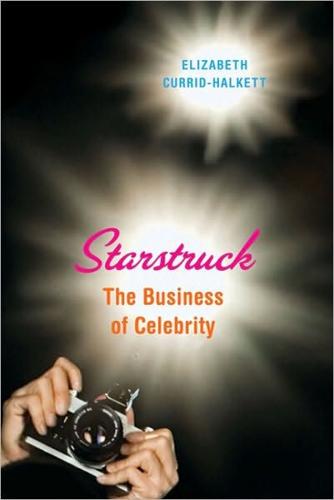
Starstruck: The Business of Celebrity
by
Currid
Published 9 Nov 2010
Undoubtedly, our interest in Trump as a person was helpful in his regaining financial success—he wrote best-selling books and his presence on the show is what makes The Apprentice such a hit. Similarly, Richard Branson is a billionaire entrepreneur who gained fame through his transportation and music companies (the Virgin brand includes Virgin Atlantic, Virgin America, Virgin Trains, and Virgin Records). But he also owns a spaceship company, Virgin Galactic, and an island (Necker Island in the Caribbean), which may be related to Branson’s entrepreneurial talent but also generate a fair amount of admiration and/or amusement with Branson the person. Not to mention that Branson actively generates a high profile. He writes books (including his autobiography Losing My Virginity), appears on TV shows (Baywatch, Friends), and starred in his own Fox reality TV show (an attempted rival to Trump’s show; it failed).
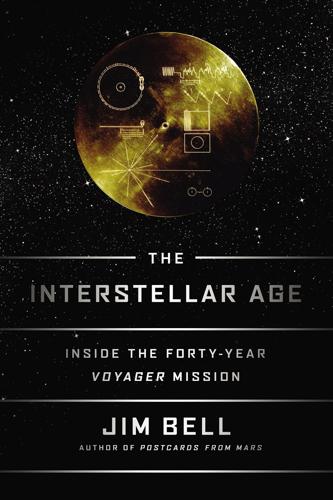
The Interstellar Age: Inside the Forty-Year Voyager Mission
by
Jim Bell
Published 24 Feb 2015
And if we look closely, in our mind’s eye, we can see the Voyagers quietly ushering us to and across the threshold of the Interstellar Age. How should the future of space exploration unfold? Will NASA and other government space agencies always lead the way? Will upstart private space-related companies (such as SpaceX, Virgin Galactic, Sierra Nevada, and dozens of others) dive into the robotic space-exploration game, and if so, why? For mineral resources? For fame and glory? To help protect the Earth from rogue asteroids or comets? To settle other worlds? Or will those companies instead focus mostly on providing services like lower-cost rocket launches, adventure-tourism experiences, space-station refueling/resupply, or satellite repair?
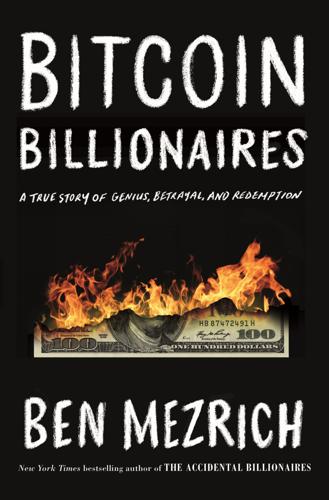
Bitcoin Billionaires: A True Story of Genius, Betrayal, and Redemption
by
Ben Mezrich
Published 20 May 2019
It was a strategy that had landed them in front of some pretty spectacular people. Only days earlier, they’d dined with Richard Branson, the Virgin billionaire, at the Soho Beach House in Miami. At the dinner table, they’d used some of their bitcoin to prepurchase $250,000 tickets on Branson’s Virgin Galactic, a suborbital rocket cruise. With only a few taps on their iPhones, Tyler and Cameron had become future astronauts, numbers 700 and 701. Branson had already gotten involved in Bitcoin by investing in a company called Bitpay, which helped retailers and other merchants accept bitcoin as payment.
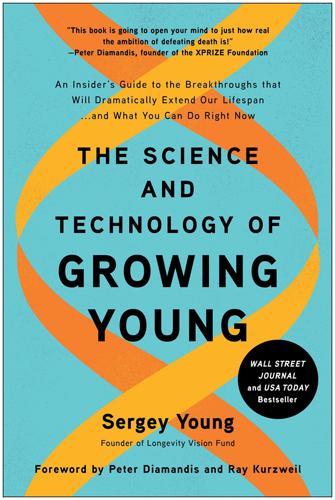
The Science and Technology of Growing Young: An Insider's Guide to the Breakthroughs That Will Dramatically Extend Our Lifespan . . . And What You Can Do Right Now
by
Sergey Young
Published 23 Aug 2021
“In cities across America,” he told me, “you see a fifteen-year or more age disparity from zip code to zip code.”30 Will extreme longevity be as unattainable by the poor of the future as a university education and homeownership are by many today? Or will it be even more exclusive—the equivalent of a space flight on Virgin Galactic, for example? Will access to longevity-enhancing health care become the civil rights flashpoint of the year 2090? Instead of “Medicare for all,” will the rallying cry become “Immortality for all”? Here’s the thing: for all the legitimate concerns about economic disparity and for all the worries one can have about the pitfalls of the future, the economic trendline is clearly up and to the right.

Wired for War: The Robotics Revolution and Conflict in the 21st Century
by
P. W. Singer
Published 1 Jan 2010
In 2007, the Tamil Tiger group of Sri Lanka became the first, but likely not last, terrorist group to takes its operations into space, hijacking the signal from an Intelsat satellite and using the commercial satellite to beam its own messages back to Earth. And just as private companies like Blackwater have reentered the conflict game on this planet, we should not be surprised if privatized conflict also arises one day in space, especially with the growth of private space businesses, such as Richard Branson’s “Virgin Galactic” or Google’s $30 million prize that will go to the first private team able to land a robot on the moon (one of the competitors is actually also the maker of some of the Pentagon’s energy beam weapons programs). Robo-One, a robot combat event held in Japan every year, may provide a taste of what’s to come.
…
unit cohesion and war crimes and war porn and warrior redefined by see also military robotics; robotics; robots; war, warfare Unrestricted Warfare (Qiao and Wang) Urbanscape program USV (unmanned surface vessel) U-2 spy plane UUV (unmanned underwater vehicle) V-1 rocket V-2 missile V-3 (supercannon) van Creveld, Martin Vanguard (robot) Varian, Paul Vaucanson, Jacques de Vaucanson’s duck VB-1 Azons (radio-controlled bomb) Vego, Milan Velvet Underground Verdun, Battle of Verhoff, Donald VeriChip company Verne, Jules Verruggio, Gianmarco Very-high-altitude, Ultra-endurance, Loitering Theater Unmanned Reconnaissance Element (VULTURE) Vick, Michael Vietnam Vietnam War My Lai atrocity in smart bombs in Tonkin Gulf Incident and UAVs in Vincennes, U.S.S. Vinge, Vernor Virgin Galactic VisiBuilding technology Vulcans (advisory group) VULTURE (Very-high-altitude, Ultra-endurance, Loitering Theater Unmanned Reconnaissance Element) Wachowski, Larry and Andy Walker, David Wallace, William WALL-E (robot) Wal-Mart data mining by Walzer, Michael Wang company Wang Xiangsui war, warfare China’s strategic view of cities as center of dehumanization and discrimination rule of experience of going off to Fussell on future of human psychology and human rights and hybrid ideals and international law and irregular just war theory and medical advances and new warrior class and and obsolete warrior open source physical implants and enhancements for private contractors and proportionality rule of public’s disconnect from redefining and resistance to change study of technology and future of unmanned, see unmanned warfare War and Human Nature (Rosen) Ward, Edward warfighters’ associate concept Warfighters’ Perspectives panel War Games (film) War Made New (Boot) Warner, John Warrior (robot) Wars of Blood and Faith: The Conflicts That Will Shape the Twenty-first Century (Peters) War of the Worlds, The (Wells) Warwick, Kevin Washington Post Wasp (unmanned aerial vehicle) Waterloo, Battle of Watson, Thomas Wegerbauer, Cyndi Wegner, Thomas Weinberg, Gil Welles, Orson Wells, H.G.

Future Files: A Brief History of the Next 50 Years
by
Richard Watson
Published 1 Jan 2008
Trends like simplicity and back to basics have spawned fads such as glamorous camp- Travel and Tourism 273 ing (glamping), luxury backpacking (flashpacking), and wild swimming (taking a dip in various rivers and streams). We’ve got the new A380 airline (complete with double beds for fly-by entrepreneurs and dictators), an enclosed tropical island in the middle of Germany (the tropical islands theme park in Krausnick), and space tourism (almost) courtesy of Virgin Galactic. Dubai is in a whole load of trouble (as some people predicted) for at least a while, and sanctuary tourism — where people can escape from the anxieties of everyday life — is doing well (as you’d probably expect). Having said this, a contradictory trend is people not going on holiday for extended periods, due to their anxiety about not being at work.
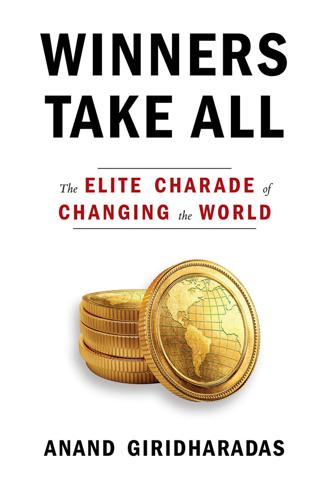
Winners Take All: The Elite Charade of Changing the World
by
Anand Giridharadas
Published 27 Aug 2018
It brought together a great many entrepreneurs and financiers who invest in entrepreneurs, some artists and yoga teachers to keep things interesting and healthy, and various others who tend to run in those circles and whose bios refer to them using terms like “influencer,” “thought leader,” “curator,” “convener,” “connector,” and “community manager.” Summit, being one of the hotter MarketWorld tickets, had drawn to this cruise ship the founders or representatives of such venerable institutions as AOL, Apple, the Bitcoin Foundation, Change.org, Dropbox, Google, Modernist Cuisine, MTV, Paypal, SoulCycle, Toms Shoes, Uber, Vine, Virgin Galactic, Warby Parker, and Zappos. There were some billionaires and many millionaires on board, and lots of others who had paid a typical American’s monthly salary to attend. Selena Soo, a New York publicist who was on board and represented many of these entrepreneur types, perfectly captured the prevailing view.
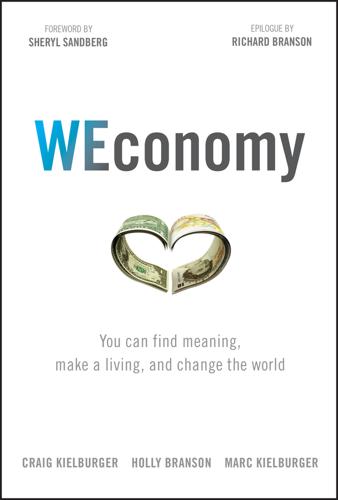
WEconomy: You Can Find Meaning, Make a Living, and Change the World
by
Craig Kielburger
,
Holly Branson
,
Marc Kielburger
,
Sir Richard Branson
and
Sheryl Sandberg
Published 7 Mar 2018
To our people, inclusion means being welcomed, valued, respected, and supported. It's about focusing on the needs of every individual, and ensuring the right conditions are in place for each person to thrive. We refer to this as GO TOGETHER. Hear more about my views on diversity and inclusion: Click for video Stephen Attenborough explains what inclusion means to Virgin Galactic: Click for video We determined that combining two concepts—diversity and inclusion— would provide the most powerful building bricks for a respectful people culture. Growth We believe that through individual growth, workers can contribute to business growth. The coming workforce is looking to build on their strengths in their professional lives and to continue to learn and develop in their personal lives.
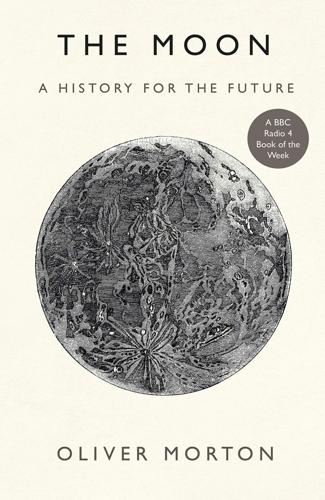
The Moon: A History for the Future
by
Oliver Morton
Published 1 May 2019
Since 2000 he has been regularly investing slivers of his wealth in Blue Origin, a company that builds rockets. Its first, New Shepard, is a small reusable rocket not unlike the first stage of a Falcon 9, though with only one engine it is considerably less capable. New Shepard is designed to launch a capsule in which tourists can enjoy trips above the atmosphere like those offered by Virgin Galactic.2 If one or both of them launches its first passengers on July 20th 2019, I would not be remotely surprised. New Shepard is named after Alan Shepard, whose suborbital trip in the first Mercury spacecraft, Freedom 7, made him the first American in space. Blue Origin’s first orbital rocket, a mostly reusable system which is intended for launch in 2021, is the New Glenn; John Glenn, in Friendship 7, was the first American into orbit.

The Coming of Neo-Feudalism: A Warning to the Global Middle Class
by
Joel Kotkin
Published 11 May 2020
Wall Street Journal, October 3, 2018, https://www.wsj.com/articles/ben-franklin-who-1538608727; Colleen Flaherty, “The Vanishing History Major,” Inside Higher Ed, November 27, 2018, https://www.insidehighered.com/news/2018/11/27/new-analysis-history-major-data-says-ield-new-low-can-it-be-saved. 32 Henri Pirenne, Mohammed and Charlemagne (Cleveland: Meridian, 1957), 118; Roderick Seidenberg, Post-historic Man: An Inquiry (New York: Viking, 1974), 179. 33 Glenn Harlan Reynolds, “Robert Zubrin makes ‘The Case for Space,’” USA Today, May 7, 2019, https://www.usatoday.com/story/opinion/2019/05/07/spacex-blue-origin-virgin-galactic-robert-zubrin-case-space-column/1119446001/. 34 David Pilling, Bending Adversity: Japan and the Art of Survival (New York: Penguin, 2014), 119, 177–79; Karel van Wolferen, The Enigma of Japanese Power: People and Politics in a Stateless Nation (New York: Knopf, 1989), 2–3. 35 Andy Kessler, “Zuckerberg’s Opiate for the Masses,” Wall Street Journal, June 18, 2017, https://www.wsj.com/articles/zuckerbergs-opiate-for-the-masses-1497821885. 36 Catherine Clifford, “About half of Americans support giving residents up to $2000 a month when robots take their jobs,” CNBC, December 19, 2016, https://www.cnbc.com/2016/12/19/about-half-of-americans-support-giving-residents-up-to-2000-a-month-when-robots-take-our-jobs.html. 37 Patrick Hoare, “European Social Survey (ESS) reveal findings about attitudes toward Universal Basic Income across Europe,” Basic Income, January 20, 2018, https://basicincome.org/news/2018/01/europe-european-social-survey-ess-reveal-findings-attitudes-toward-universal-basic-income-across-europe/; Andrew Russell, “What Do Canadians think of basic income?
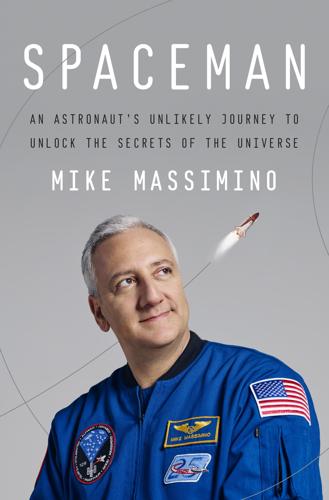
Spaceman: An Astronaut's Unlikely Journey to Unlock the Secrets of the Universe
by
Mike Massimino
Published 3 Oct 2016
Some doors are closing and others we’re still trying to open. But the difficulty of our present moment should inspire us, not discourage us. There’s so much for us to achieve if we decide, as a nation, to commit ourselves to it. The James Webb Space Telescope, Hubble’s successor, is set to launch in 2018. Private companies like SpaceX and Virgin Galactic and Blue Origin are putting rockets into space, creating a whole new range of exciting opportunities. The international cooperation behind the space station has put a wealth of resources at our disposal that the Mercury and Apollo teams never had. The Constellation Program announced by President Bush in the wake of Columbia was canceled, but it was replaced by the new Space Launch System.

Adapt: Why Success Always Starts With Failure
by
Tim Harford
Published 1 Jun 2011
We can also credit philanthropy: Paul Allen, the co-founder of Microsoft and one of the world’s richest men, bankrolled Rutan’s work for reasons reminiscent of the HHMI: he liked the idea and believed in the experimenter’s talent. Or we could equally thank hard-nosed commercialism: Rutan teamed up with Sir Richard Branson’s Virgin Group, which is determined to turn space tourism into a profitable business. Virgin Galactic has since commissioned a larger ship, SpaceShipTwo, with bigger windows and room to float around. Take a longer view, and it’s government that deserves a pat on the back for the dawn of private space flight. Back in the 1950s, the X-15 plane funded by NACA – the short-lived predecessor of NASA – flew at a height of 106 km, at the edges of space itself, after hitching a lift on a B-52 bomber.
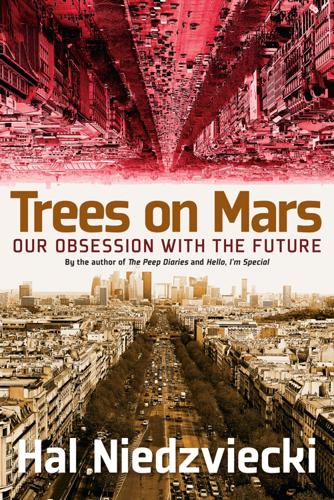
Trees on Mars: Our Obsession With the Future
by
Hal Niedzviecki
Published 15 Mar 2015
We like start-ups, disrupters and rebels . . . people assume that big problems can be solved by swarms of small, loosely networked nonprofits and social entrepreneurs.”23 As just one example of this general shift, today we have a whole new conception of space travel. A company called Planetary Resources (backed by billionaire investors including Google’s Larry Page and Eric Schmidt) is promising to mine moons and asteroids. Richard Branson’s Virgin Galactic is offering $250,000 zero-gravity flights and has its eye on space tourism and suborbital trips with zero friction and gravity—New York City to Tokyo in two hours. Jeff Bezos of Amazon works out vigorously every morning in preparation for the moment when Blue Origin, the space exploration company he founded on 300,000 acres of land in rural Texas, is ready to send him into orbit.24 And, as we’ve already touched on, entrepreneur/tech-cheerleader Peter Diamandis has partnered with Google and launched the Google Lunar XPRIZE competition, a $30 million prize for the first private entity that can land a robot on the Moon, get it to travel at least 500 meters, and transmit images and information back to Earth.

The Golden Thread: How Fabric Changed History
by
Kassia St Clair
Published 3 Oct 2018
Their creations incorporate new materials including dyneema, a high-molecular-weight polyethylene that is stronger than nylon. Their suit, they predict, would be ten pounds lighter than the current model and around a third of the cost.46 A bigger worry, however, now that the era of mass space tourism feels closer than ever, is that companies will dispense with spacesuits altogether, as Virgin Galactic, Blue Origin and World View have said they plan to do. They argue that since the cabins will be pressurised, there will be no need for cumbersome spacesuits. While all astronauts would likely agree that spacesuits are not the most comfortable pieces of kit, few would advocate trips without them.
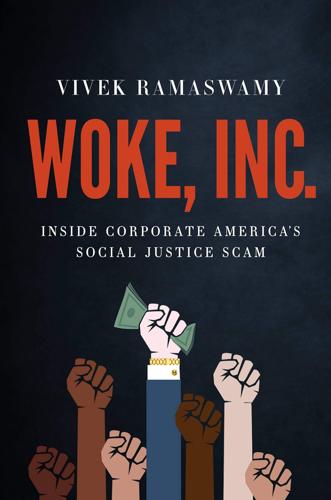
Woke, Inc: Inside Corporate America's Social Justice Scam
by
Vivek Ramaswamy
Published 16 Aug 2021
And the cost-benefit analysis for multinational corporations tipped back in favor of monarchical deference. Fund managers and corporate executives gradually went back to doing business in Saudi Arabia just as they had done before. Richard Branson had rejected the proposed Saudi investment in Virgin Galactic in 2018, but by the next fall his affiliated company Virgin Hyperloop was doing business in Saudi Arabia again. Indeed, in 2019, Virgin Hyperloop’s CEO said it was “delighted” to return to the Future Investment Initiative conference, which Branson had boycotted only a year prior. Uber CEO Dara Khosrowshahi retreated from his initially critical stance in 2018.
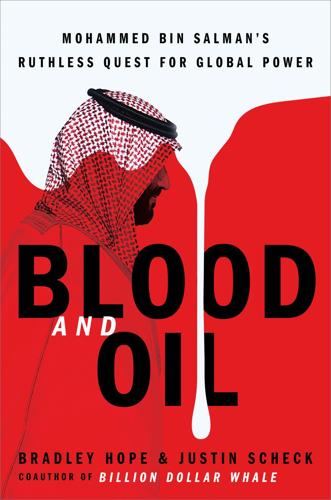
Blood and Oil: Mohammed Bin Salman's Ruthless Quest for Global Power
by
Bradley Hope
and
Justin Scheck
Published 14 Sep 2020
Though the Future Investment Initiative was theoretically about getting foreigners to invest in Saudi Arabia, the news it generated was largely about Saudi Arabia investing even more in foreign companies. Rumayyan said the sovereign wealth fund aimed to have $2 trillion in investments, many of them overseas, by 2030. Branson got a $1 billion commitment for the parent of his space tourism company Virgin Galactic. Blackstone already had a commitment of $20 billion for an investment fund, and the Vision Fund was already off the ground with $40 billion from Saudi Arabia. Rajeev Misra, head of the Vision Fund, strutted around the Ritz-Carlton, holding meetings in Masayoshi Son’s huge suite and vaping nonstop.
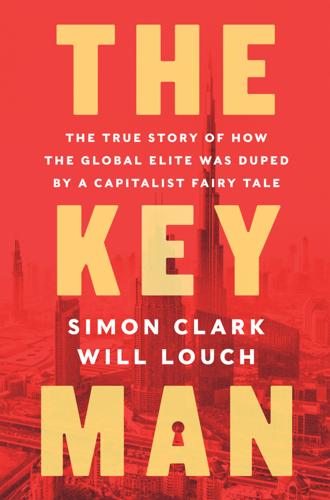
The Key Man: The True Story of How the Global Elite Was Duped by a Capitalist Fairy Tale
by
Simon Clark
and
Will Louch
Published 14 Jul 2021
They gathered to discuss how to improve healthcare, provide clean water, and create jobs for the world’s poorest citizens. Ambition was the theme chosen for the 2014 meeting and Skoll invited two superstar speakers who he thought embodied the word. Arif was one. The other was Richard Branson, the billionaire British founder of the Virgin Atlantic airline and Virgin Galactic spaceflight company. Skoll’s forum took months to prepare. Invitations were dispatched to executives and activists on every continent. Dinners were arranged in ancient university halls and a media team prepared a film to show on the opening evening. When Arif’s invitation to the forum reached him, he was working on preparations of an entirely different kind in his Dubai headquarters.

Western USA
by
Lonely Planet
TRUTH OR CONSEQUENCES & AROUND An offbeat joie de vivre permeates the funky little town of Truth or Consequences, which was built on the site of natural hot springs in the 1880s. A bit of the quirkiness stems from the fact that the town changed its name from Hot Springs to Truth or Consequences (or ‘T or C’) in 1950, after a popular radio game show of the same name. Publicity these days comes courtesy of Virgin Galactic CEO Richard Branson and other space-travel visionaries driving the development of nearby Spaceport America, where wealthy tourists will launch into orbit sometime soon. Spaceport tours ( 505-897-2886; www.ftstours.com; adult/under 12yr $59/29; 9am & 1pm Fri-Sun) include a look at the launch site and mission control.
…
In the Pacific Northwest, the Seattle area is headquarters for Microsoft, Nintendo and Amazon.com. Branches of Intel, Tektronix and Google support Oregon’s ‘Silicon Forest.’ Natural Wonders »Highest Point: Mt Whitney, CA 14,497ft »Lowest Point: Death Valley, CA -282ft »The Grand Canyon is 277 miles long. In the Southwest, Richard Branson’s Virgin Galactic plans to send civilian ‘astronauts’ into space from the new Spaceport in central New Mexico. At the Grand Canyon, an impressive new South Rim visitor center has opened, and eco-friendly initiatives there are gaining traction, including a park-and-ride shuttle from Tusayan and a bicycle rental service.
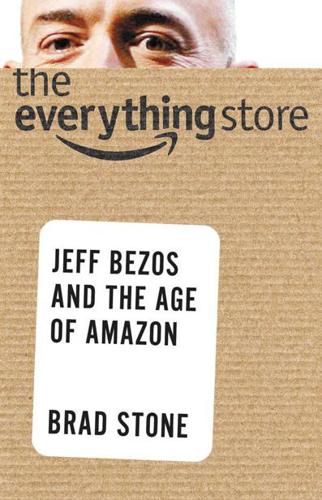
The Everything Store: Jeff Bezos and the Age of Amazon
by
Brad Stone
Published 14 Oct 2013
“Not the outcome any of us wanted, but we’re signed up for this to be hard,” Bezos wrote in a blog post on the Blue Origin website.13 A year after that, the company successfully tested the spaceship’s crew-capsule escape system. It has received two grants from NASA worth more than $25 million to develop technologies related to human spaceflight. Internet magnate Elon Musk, with SpaceX, and billionaire Richard Branson, the founder of an enterprise called Virgin Galactic, are pursuing some of the same goals. Bezos does not allow the public or media to tour his space facilities. In 2006, the company moved to larger headquarters in Kent, Washington, twenty miles south of Seattle. Visitors describe a facility studded with Bezos’s space collectibles, like props from Star Trek, rocket parts from various spaceships throughout history, and a real cosmonaut suit from the Soviet Union.
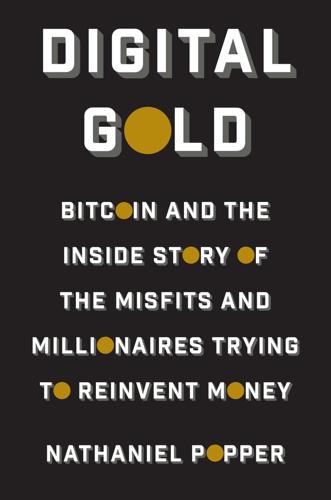
Digital Gold: Bitcoin and the Inside Story of the Misfits and Millionaires Trying to Reinvent Money
by
Nathaniel Popper
Published 18 May 2015
He also was still working with the Bitcoin Foundation, preparing for its second annual conference, this one in Amsterdam. “We’re looking for a celebrity speaker,” Charlie told Nic. “I want to get like Snoop Dogg to come.” “How about Richard Branson?” Nic asked, referring to the mogul who had recently announced that he would be accepting Bitcoin for tickets on Virgin Galactic, his commercial space company. “A lot of these guys aren’t even out of reach,” Charlie said. A few days after seeing Nic, Charlie and Courtney flew to Amsterdam. They stopped by the convention center where the foundation’s conference would be held. But the main purpose of the trip was a technology conference in Utrecht that had paid Charlie $20,000 to speak about Bitcoin.
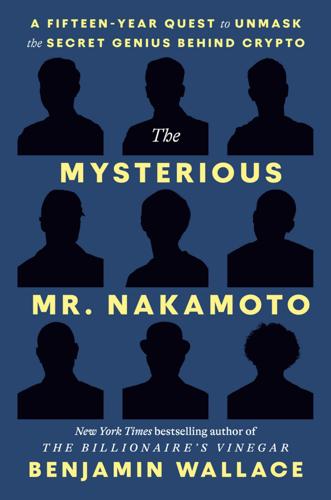
The Mysterious Mr. Nakamoto: A Fifteen-Year Quest to Unmask the Secret Genius Behind Crypto
by
Benjamin Wallace
Published 18 Mar 2025
But despite the extreme ups and downs, and a series of hacks and scams, bitcoin’s value unsteadily rose. There were fitful signs that it was broadening its appeal. In 2014, the U.S. Senate held an unexpectedly hopeful hearing on Bitcoin, titled “Beyond Silk Road: Potential Risks, Threats, and Promises of Virtual Currencies.” Richard Branson announced that his Virgin Galactic space travel company would accept bitcoin, which he said was “driving a revolution.” Bill Gates called Bitcoin “exciting,” “better than currency,” and “a techno tour de force.” A year later, Marc Andreessen, who had pioneered the web browser before becoming a venture capitalist, said: “We’re quite confident that when we’re sitting here in twenty years, we’ll be talking about Bitcoin the way we talk about the Internet today.”
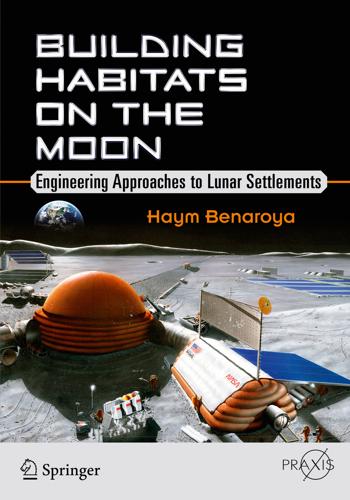
Building Habitats on the Moon: Engineering Approaches to Lunar Settlements
by
Haym Benaroya
Published 12 Jan 2018
. … It is therefore with deep regret that I submit that one or more of these small space startups will kill a crew.” Alas, I was right. We are seeing an expansion of NewSpace private and commercial launch and spacecraft companies, some of whom are close to successfully flying a crewed orbital mission. Unfortunately, I was also right about loss of crew. Virgin Galactic’s VSS Enterprise broke up during reentry/descent from its first suborbital flight, killing the pilot, Michael Alsbury and severely injuring the copilot, Peter Siebold. I deeply regret that my prediction may have seemed glib when I made it; I regret even more that it was spot-on. I hope that the record of commercial crew safety improves and that they do not suffer another loss .
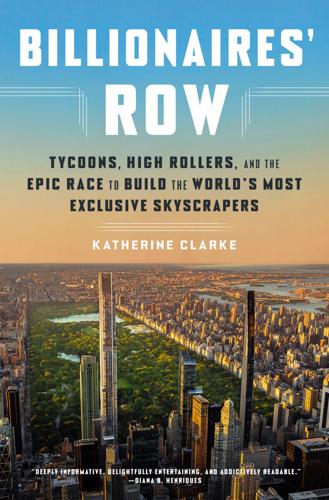
Billionaires' Row: Tycoons, High Rollers, and the Epic Race to Build the World's Most Exclusive Skyscrapers
by
Katherine Clarke
Published 13 Jun 2023
With al-Qubaisi at the helm, IPIC and one of its subsidiaries, Aabar Investments, had been on a spending spree. The young Arab had personally helped negotiate the bailout of Barclays Bank alongside Qatar in 2008 and had gobbled up stakes in major corporations such as Daimler-Benz, the parent company of the German luxury car brand Mercedes-Benz, and Virgin Galactic, the British billionaire Richard Branson’s commercial spaceline. Now he was turning his attentions to luxury real estate. Barnett had been introduced to executives at Aabar via a mutual friend, a private medical doctor whom he had met in New York and who had treated high-net-worth individuals from the Middle East.

Endurance: A Year in Space, a Lifetime of Discovery
by
Scott Kelly
and
Margaret Lazarus Dean
Published 14 Aug 2017
Still, this was the first time a rocket to resupply ISS had failed in years, and it destroyed millions of dollars’ worth of equipment. And the loss of vital supplies like food and oxygen made everyone think harder about what would happen if a string of failures were to occur. A few days after the explosion, an experimental space plane being developed by Virgin Galactic crashed in the Mojave Desert, killing the copilot, Michael Alsbury. These failures were unrelated, of course, but the timing made it feel as though a string of bad luck might be catching up with us after years of success. I get dressed while I skim over the procedures for the Dragon capture again.

Elon Musk: Tesla, SpaceX, and the Quest for a Fantastic Future
by
Ashlee Vance
Published 18 May 2015
As Shotwell saw it, a number of new nations were showing interest in launches, eyeing communications technology as essential to growing their economies and leveling their status with developed nations. Cheaper flights would help SpaceX take the majority of the business from that new customer set. The company also expected to participate in an expanding market for human flights. SpaceX has never had any interest in doing the five-minute tourist flights to low Earth orbit like Virgin Galactic and XCOR. It does, however, have the ability to carry researchers to orbiting habitats being built by Bigelow Aerospace and to orbiting science labs being constructed by various countries. SpaceX will also start making its own satellites, turning the company into a one-stop space shop. All of these plans hinge on SpaceX being able to prove that it can fly on schedule every month and churn through the $5 billion backlog of launches.
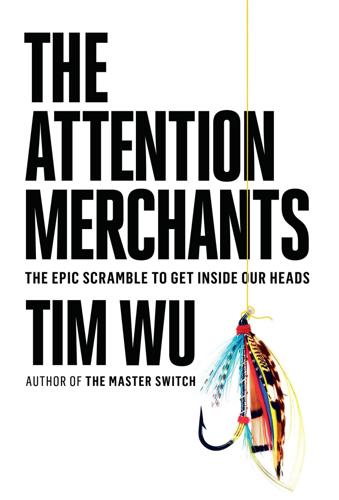
The Attention Merchants: The Epic Scramble to Get Inside Our Heads
by
Tim Wu
Published 14 May 2016
One is conceptual: if you don’t know about a thing, like chocolate ice cream, you can hardly ask for it, much less feel oppressed by the want of it. The second degree of awareness comes after we know about things conceptually and can begin to contemplate them as real choices. I may be aware that man has gone into space but the idea that I might choose to go there myself, while conceivable, is only a notion until I find out that Virgin Galactic has started scheduling flights.11 To take a more common recent example: in the 1990s, switching to a Mac from a PC seemed implausible. Then, Apple ran an advertising campaign showing how it might be done, and what the advantages of doing so were. Soon, there were many happy Mac users, and Apple’s market share grew dramatically.
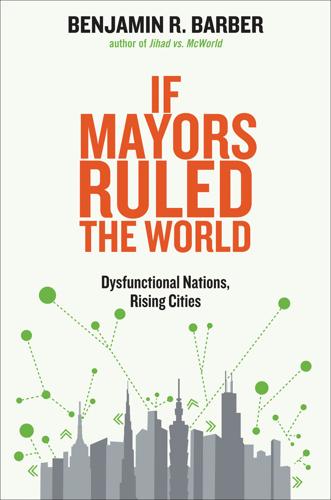
If Mayors Ruled the World: Dysfunctional Nations, Rising Cities
by
Benjamin R. Barber
Published 5 Nov 2013
, conceived as future sanctuaries—urban colonies—for people for whom the planet’s continents have grown too small. That such daydreams are more than just fantasy is evident from the plans of futurist entrepreneurs such as Richard Branson of Virgin Air fame, who hopes to service such colonies with novel companies like his Virgin Galactic, which is reportedly preparing to offer space miles benefits to its customers. Even old-line politicians such as Newt Gingrich now talk about colonizing the moon as staples of their political campaign patter. For some time, idealists and dreamers have looked even further—beyond our known urban behemoths and linked megacities—in search of Marshall McLuhan’s global village, a mote in his prescient eye sixty years ago, but today an abstraction being realized not only in digital and virtual forms like the cloud, but in global economic markets and in the complex urban networks that are our focus here.

Consumed: How Markets Corrupt Children, Infantilize Adults, and Swallow Citizens Whole
by
Benjamin R. Barber
Published 1 Jan 2007
Yet once we distinguish between private choosing (I need some dope) and public choosing (using dope diminishes my overall capacity to be free), it becomes apparent that constraining the private choice can enhance our real liberty and hence help “force us to be free.” 48. The response to the Hurricane Katrina disaster in New Orleans is examined later in the chapter. On space exploration: Richard Branson’s company Virgin Galactic has already sold more than $10 million worth of space rides on private flights that will take off from a New Mexico spaceport. Branson has sold $200,000 tickets to celebrities such as the actress Victoria Principal and Hollywood director Bryan Singer, and is purchasing five spacecraft to undertake the fights.

Frommer's New Mexico
by
Lesley S. King
Published 2 Jan 1999
Space tourists would take off from the proposed $225-million Spaceport America near Truth or Consequences. In its embryonic stages now, the spaceport will include one or more runways, hangars, a control building, and launch pads. The first test flights took place in 2007, while the completion date for the spaceport is 2011. When it’s complete, Branson plans to headquarter Virgin Galactic here. Currently Virgin is selling tickets for $200,000 apiece for a 21⁄2-hour flight, including 5 minutes of weightlessness. The first of these flights will likely fly out of the Mojave Airport in California, where SpaceShipOne became the first privately manned rocket to reach space in 2004. For updates, log onto www. virgingalactic.com or www.edd.state. nm.us. 315 SOUTHWESTERN NEW MEXICO Truth or Consequences 11 Taking the Waters at the Historic Hot Springs The town’s “original” attraction is its hot springs.

USA Travel Guide
by
Lonely, Planet
TRUTH OR CONSEQUENCES & AROUND An offbeat joie de vivre permeates the funky little town of Truth or Consequences, which was built on the site of natural hot springs in the 1880s. A bit of the quirkiness stems from the fact that the town changed its name from Hot Springs to Truth or Consequences (or ‘T or C’) in 1950, after a popular radio game show of the same name. Publicity these days comes courtesy of Virgin Galactic CEO Richard Branson and other space-travel visionaries driving the development of nearby Spaceport America , where wealthy tourists will launch into orbit sometime soon. Spaceport tours ( 505-897-2886; www.ftstours.com; adult/under 12yr $59/29; 9am & 1pm Fri-Sun) include a look at the launch site and mission control.